5 Best Argumentative Essay Examples: Crafting Strong Arguments
Discover five compelling argumentative essay examples and learn how to structure and write effective argumentative essays.
Writing an argumentative essay is an essential skill that helps you articulate your thoughts, present your arguments logically, and convince your audience of your viewpoint. In this article, we'll dive into the world of argumentative essays, providing you with five compelling argumentative essay examples and a detailed explanation of what makes each one effective. We'll also cover the structure of argumentative essays, offer tips for writing them, and answer some frequently asked questions.

What is an Argumentative Essay?

An argumentative essay is a type of writing that presents a clear stance on a specific issue, supported by evidence and reasoning. The goal is to persuade the reader to agree with your perspective. Unlike other types of essays, argumentative essays require thorough research and a balanced approach, considering both sides of the argument before making a case for one.
Key Components of an Argumentative Essay
Introduction.
- Hook: Grab the reader's attention.
- Background information: Provide context.
- Thesis statement: State your position clearly.
Body Paragraphs
- Topic sentence: Introduce the main idea.
- Evidence: Support your argument with facts, statistics, or quotes.
- Counterarguments: Address opposing views.
- Rebuttal: Refute the counterarguments.
- Restate your thesis.
- Summarize key points.
- Call to action: Encourage the reader to take action or think differently.
Argumentative Essay Example 1: The Role of Technology in Education: Boon or Bane?

In today's rapidly evolving world, technology has become an integral part of our lives, influencing almost every sector, including education. The debate over whether technology is a boon or a bane in education is ongoing, with strong arguments on both sides. While technology offers numerous benefits such as enhanced learning experiences, increased accessibility, and personalized education, it also poses challenges like distraction, inequality, and dependency.
Enhanced Learning Experiences
One of the most significant advantages of technology in education is the enhancement of learning experiences. Interactive tools such as smart boards, educational apps, and virtual reality (VR) can make learning more engaging and effective.
- Stat : According to a study by the Pew Research Center, 92% of teachers believe that the internet has a major impact on their ability to access content, resources, and materials.
Increased Accessibility
Technology has also made education more accessible to a broader audience. Online courses and educational platforms allow students from all over the world to access quality education regardless of their geographical location.
- Fact : Coursera, one of the leading online education platforms, has over 77 million users worldwide.
Personalized Education
Adaptive learning technologies can tailor educational content to individual students' needs, learning styles, and pace. This personalized approach helps students to grasp subjects more efficiently and keeps them motivated.
Distraction and Reduced Attention Span
Despite the benefits, there are notable disadvantages. One of the main concerns is the potential for distraction. With the proliferation of digital devices, students may find it challenging to focus on their studies.
- Stat : A study by Common Sense Media found that 50% of teens feel addicted to their mobile devices.
Inequality and Digital Divide
Not all students have equal access to technology and the internet, particularly in low-income or rural areas. This disparity can widen the achievement gap between students who have access to digital resources and those who do not.
In conclusion, the role of technology in education is a double-edged sword. While it offers significant advantages such as enhanced learning experiences, increased accessibility, and personalized education, it also presents challenges like distraction, inequality, and dependency. By implementing strategies that promote balanced and equitable use of technology, we can ensure that it serves as a boon rather than a bane in the educational landscape.
Argumentative Essay Example 2: Should the Death Penalty Be Abolished?

The death penalty, also known as capital punishment, has been a controversial topic for decades. While some argue that it serves as a deterrent to crime and delivers justice for victims, others believe it is inhumane and prone to errors. This essay explores both sides of the argument to determine whether the death penalty should be abolished.
Deterrent to Crime
Proponents of the death penalty argue that it serves as a powerful deterrent to serious crimes. The fear of facing the ultimate punishment may prevent individuals from committing heinous acts.
- Stat : According to a study by the National Research Council, there is no conclusive evidence that the death penalty deters crime more effectively than long-term imprisonment.
Delivering Justice
Supporters also believe that the death penalty delivers justice for victims and their families. It provides a sense of closure and ensures that the perpetrator cannot commit further crimes.
Inhumane and Cruel
Opponents argue that the death penalty is inhumane and a violation of human rights. The process of execution is often prolonged and painful, causing unnecessary suffering.
- Fact : Amnesty International reports that at least 483 executions were carried out worldwide in 2020.
Risk of Wrongful Convictions
There is also the risk of wrongful convictions, where innocent people are sentenced to death. The judicial system is not infallible, and mistakes can lead to irreversible consequences.
- Stat : The Innocence Project has helped to exonerate over 375 wrongly convicted individuals in the United States through DNA testing.
In conclusion, while the death penalty may offer a sense of justice and deterrence, its potential for inhumanity and wrongful convictions cannot be overlooked. Abolishing the death penalty would ensure that the justice system prioritizes human rights and the possibility of rehabilitation over irreversible punishment.
Argumentative Essay Example 3: The Impact of Social Media on Society

Social media has revolutionized the way we communicate, share information, and connect with others. While it offers numerous benefits such as staying in touch with friends and family, promoting businesses, and raising awareness about important issues, it also has negative effects like cyberbullying, misinformation, and decreased face-to-face interactions.
Staying Connected
One of the primary benefits of social media is that it allows people to stay connected with friends and family, no matter the distance. Platforms like Facebook, Instagram, and Twitter enable users to share updates, photos, and videos easily.
- Stat : As of 2021, there are over 4.2 billion active social media users worldwide.
Promoting Businesses
Social media is a powerful tool for businesses to reach a broader audience, engage with customers, and promote their products or services. It provides a cost-effective way to market and grow a brand.
- Fact : According to Hootsuite, 54% of social browsers use social media to research products.
Cyberbullying and Mental Health
Despite its benefits, social media can also have negative effects. Cyberbullying is a significant issue, with many individuals experiencing harassment and abuse online.
- Stat : The Cyberbullying Research Center reports that about 34% of students have experienced cyberbullying at some point in their lives.
Spread of Misinformation
Social media platforms can also contribute to the spread of misinformation and fake news. False information can quickly go viral, leading to confusion and mistrust.
- Fact : A study by MIT found that false news spreads six times faster than the truth on Twitter.
In conclusion, while social media offers numerous benefits such as staying connected, promoting businesses, and raising awareness, it also has negative effects like cyberbullying, misinformation, and decreased face-to-face interactions. By using social media responsibly and promoting digital literacy, we can mitigate these negative impacts and harness the positive potential of these platforms.
Argumentative Essay Example 4: Should Animal Testing Be Banned?

Animal testing has been a contentious issue for many years. While it has contributed to numerous scientific and medical advancements, it also raises ethical concerns about the treatment of animals. This essay examines both sides of the argument to determine whether animal testing should be banned.
Scientific Advancements
Proponents of animal testing argue that it has led to significant scientific and medical advancements. Many life-saving treatments and vaccines have been developed through research involving animals.
- Stat : According to the Foundation for Biomedical Research, about 95% of all laboratory animals are rodents, which play a crucial role in medical research.
Ethical Concerns
Opponents argue that animal testing is unethical and inhumane. Animals are subjected to painful procedures and kept in confined spaces, raising serious concerns about their welfare.
- Fact : PETA reports that over 100 million animals are used in laboratory experiments annually in the United States alone.
Alternatives to Animal Testing
There are also viable alternatives to animal testing that are more humane and potentially more effective. These include in vitro testing, computer modeling, and human-patient simulators.
- Stat : The National Institutes of Health (NIH) has invested over $1 billion in the development of alternative testing methods since 2013.
Reliability and Relevance
Critics also question the reliability and relevance of animal testing. Animals often react differently to substances than humans, leading to inaccurate results and potentially harmful outcomes.
- Fact : The U.S. Food and Drug Administration (FDA) reports that 92% of drugs that pass preclinical tests on animals fail during human trials.
In conclusion, while animal testing has contributed to significant scientific and medical advancements, the ethical concerns and availability of alternative methods suggest that it may be time to move away from this practice. Banning animal testing would promote the development of more humane and potentially more effective research methods.
Argumentative Essay Example 5: Should College Education Be Free?

The rising cost of college education has sparked a heated debate over whether it should be free. Advocates argue that free college education would increase accessibility, reduce inequality, and boost the economy, while opponents believe it would lead to increased taxes, decreased quality of education, and overburdened public systems. This essay explores both perspectives to determine whether college education should be free.
Increased Accessibility and Equality
Proponents of free college education argue that it would make higher education accessible to everyone, regardless of their financial background. This increased accessibility would reduce the inequality gap, allowing more individuals to pursue their dreams and contribute positively to society.
- Stat : According to the National Center for Education Statistics, about 45% of college students drop out before completing their degree, often due to financial difficulties.
Economic Benefits
Free college education could also provide significant economic benefits. A more educated workforce can lead to higher productivity, innovation, and economic growth. Additionally, graduates with less student debt are more likely to invest in homes, start businesses, and contribute to the economy.
- Fact : A study by the Economic Policy Institute found that workers with a bachelor's degree earn approximately 56% more than those with only a high school diploma.
Increased Taxes and Government Spending
Opponents argue that free college education would require a substantial increase in taxes and government spending. Funding higher education for all would place a significant financial burden on taxpayers, potentially leading to budget cuts in other essential services.
Potential Decrease in Education Quality
There are also concerns that making college education free could lead to a decrease in the quality of education. With increased enrollment, colleges and universities may struggle to maintain the same level of quality, resources, and support for students.
- Stat : According to a report by the National Bureau of Economic Research, countries with free college education often face challenges related to overcrowded classrooms and underfunded institutions.
Overburdened Public Systems
Another argument against free college education is that it could overburden public higher education systems. With a surge in enrollment, public colleges and universities may face difficulties in accommodating all students, leading to longer wait times, fewer resources, and compromised educational experiences.
In conclusion, while free college education could increase accessibility, reduce inequality, and provide economic benefits, it also poses challenges such as increased taxes, potential decreases in education quality, and overburdened public systems. A balanced approach that includes targeted financial aid, scholarships, and affordable tuition options may be a more viable solution to addressing the rising costs of college education.
FAQs about Argumentative Essays
Q1: What is the purpose of an argumentative essay? A: The purpose of an argumentative essay is to present a clear stance on a specific issue, supported by evidence and reasoning, to persuade the reader to agree with the author's perspective.
Q2: How is an argumentative essay different from a persuasive essay? A: While both aim to convince the reader, an argumentative essay relies on evidence and logical reasoning, whereas a persuasive essay may use emotional appeals and personal opinions.
Q3: What are some common topics for argumentative essays? A: Common topics include social issues (e.g., gun control, abortion), ethical debates (e.g., animal testing, death penalty), and policy discussions (e.g., free college education, healthcare reform).
Q4: How can I choose a good topic for my argumentative essay? A: Choose a topic that you are passionate about, has clear opposing views, and can be supported with credible evidence and research.
Q5: What is the best way to structure an argumentative essay? A: An effective structure includes an introduction with a clear thesis statement, body paragraphs with evidence and counterarguments, and a conclusion that restates the thesis and summarizes key points.
Tips for Writing a Strong Argumentative Essay
- Do thorough research : Gather credible sources and evidence to support your arguments.
- Use clear and concise language : Make your points easy to understand and follow.
- Address counterarguments : Acknowledge opposing views and refute them with evidence.
- Stay organized : Use a logical structure and flow to guide your reader through your essay.
- Edit and revise : Proofread your essay to ensure clarity, coherence, and correctness.
Argumentative essays are a vital tool for developing critical thinking and persuasive communication skills. By exploring both sides of an issue and supporting your stance with evidence, you can create compelling arguments that engage and convince your audience. Whether you're writing about technology in education, the death penalty, social media, animal testing, or free college education, understanding the structure and components of an argumentative essay will help you craft strong, effective essays.
- Conversion Optimization
- Growth Marketing
- Digital Analytics
- Brand Marketing
- Digital Marketing
- Digital Psychology
- Ecommerce Marketing
- Product Marketing
- Technical Content Marketing
- Technical Marketing
- Google Analytics 4
- Browse all courses
- CXL Features
- Bottom-of-funnel SEO strategies in tough niches
- Growing AppSumo to 80m with performance marketing
- Account based marketing
- Building a growth process
- Building an innovative product
- Growth mindset: growth vs traditional marketing
- GrowthMaster Training Workshop
- Marketing strategy
- Optimizing Your Growth Process
- Partner Marketing
- Project Management for Marketers
- Retention: the most underrated growth channel
- User-centric marketing
- Data-driven influencer marketing
- Messaging strategy in public relations
- Sales Copywriting & Product Messaging
- Content marketing research
- Content recycling
- Email Marketing: Fundamentals
- Organic Social Media
- Product Marketing Content
- Scaling Content Marketing
- Content strategy and SEO for lead generation
- Growth Focused SEO testing
- On-Page, On-Site & Programmatic SEO
- SEO Link Building
- SEO-Driven Editorial Calendar
- Technical SEO
- Advanced Facebook Ads
- Advanced LinkedIn Ads
- Facebook Ads Creative
- Facebook Ads Experimentation
- Facebook Ads for Beginners
- Google Ads Experiments
- Google Ads for Beginners
- Linkedin Experimentation
- GA4 Intermediate
- Google Analytics 4 for beginners
- Preparing for Your GA4 Implementation
- Special Topics in GTM for GA4
- Attribution
- Data presentation and visualization
- Excel and Sheets for marketers
- Transactional data analysis
- Advanced Google Tag Manager
- Google Tag Manager for Beginners
- The Measurement Matrix
- Advanced Experimentation Masterclass
- CRO Agency masterclass
- Experimentation program management
- Intro to CRO and Experimentation
- Heuristic Analysis frameworks for conversion optimization audits
- Strategic Research for Experimentation
- Voice of Customer data
- A/B testing foundations
- A/B testing mastery
- CRO for Ecommerce Growth
- Good Practices
- Statistics for A/B testing
- Statistics fundamentals for testing
- Testing Strategies
- Applied neuromarketing
- Digital psychology & behavioral design
- Intro to Neuromarketing
- Landing Page Optimization
- People & psychology
- Personalizing for conversion
- Brand strategy
- Positioning
- Radical differentiation
- Integrated Public Relations and SEO
- Storytelling
- Audience building
- Community building
- Community strategy
- Brand tracking 101
- Brand tracking with Momentive
- User research
- Customer storytelling and proof
- Segmentation and Persona Research
- Building a marketing agency
- Managing a remote marketing team
- Marketing Management
- Sales and customer success enablement
- Automation with Apps script
- Data collection on the web
- Data extraction
- Mobile Analytics
- Tag managers
- Python for marketers
- R for marketers
- SQL for marketers
- API Applications
- Cloud computing concepts
- Cloud services
- Intermediate statistics
- Machine learning applications
- Machine learning fundamentals
- Attention Basics
- Decision Making and Emotions
- Learning and Memory
- Building Habits and Loyalty
- Building Trust
- Cognitive Biases
- Nonconscious Motivation
- Principles of Persuasive Design
- Facebook Ads for ecommerce
- Google Ads for Ecommerce
- Google Shopping
- Selling on Amazon: Perfecting Traffic and Conversions
- Ecommerce Content Marketing
- Ecommerce SEO
- Email and SMS Marketing for Ecommerce
- Customer experience for ecommerce
- Customer journey for ecommerce
- Customer segmentation for ecommerce
- Retention and Customer Lifetime Value
- Ecommerce brand strategy
- Ecommerce merchandising
- Personalization for ecommerce
- Promotional events
- Selling on Marketplaces
- Ecommerce data and metrics
- Ecommerce forecasting
- Ecommerce tech stack
- Unit economics for ecommerce
- Competitive intel & market research
- Introduction to product marketing
- Positioning and company storytelling
- Pricing and packaging
- Product Analytics
- Analyst relations
- Product launches
- Hiring product marketers
- Working with the product team
- What is included in All-access
- First time here? See all resources
- Original research studies
- AB test calculator
- Conversion rate optimization guide
- Conversion optimization guide
- Ecommerce best practices
- Bounce rate guide: The foundations
- Clickthrough rate guide: The foundations
- Follow our B2B strategy podcast
- Sign up now
Call To Action In Writing: 7 Powerful Examples

Careful attention to CTA (call to action) copywriting is the difference between brands that drive conversions and those that only drive traffic.
Brands that slap a “Buy Now” button on a page and call it a day wonder why their campaigns fail to convert. Companies that engage in strategic CTA testing continue to drive success metrics like CTR (click-through rate) up and to the right.
CTA testing is paramount because it’s not always obvious what needs to happen for your business. Landing page platform Unbounce boosted conversion rates by 90% by changing their CTA copy from “Start your 30-day trial” to “Start my free 30-day trial.”
In this article, we’ll explore seven powerful CTA examples from high-performing companies. You’ll learn what makes them so convincing so that you can apply these lessons in your own CTA writing.
Table of contents
- CTAs drive the buying journey
- Use Voice of Customer research to understand buyer goals
Start with an imperative (command verb)
- Leverage power words to build excitement
- 1. Pipedrive removes barriers to conversion
2. ActiveCampaign makes it clear what customers are signing up for
3. wordable talks results.
- 4. Jasper speaks directly to a common pain point
5. Emma builds intrigue by keeping it concise
6. betterhelp solves three objections in just three words.
- 7. ClickUp backs up its claim with a compelling guarantee
What is a call to action in writing?
Your call to action is the prompt you give readers or users to take a desired action.
That action might be to:
- Download an ebook or guide;
- Sign up for a free trial;
- Register for an upcoming webinar;
- Browse products in your online store;
- Book a sales demonstration.
CTAs are a critical component of marketing material. It’s the point where you tell your reader to do something.
CXL use them on landing pages to invite customers to trial top marketing courses:
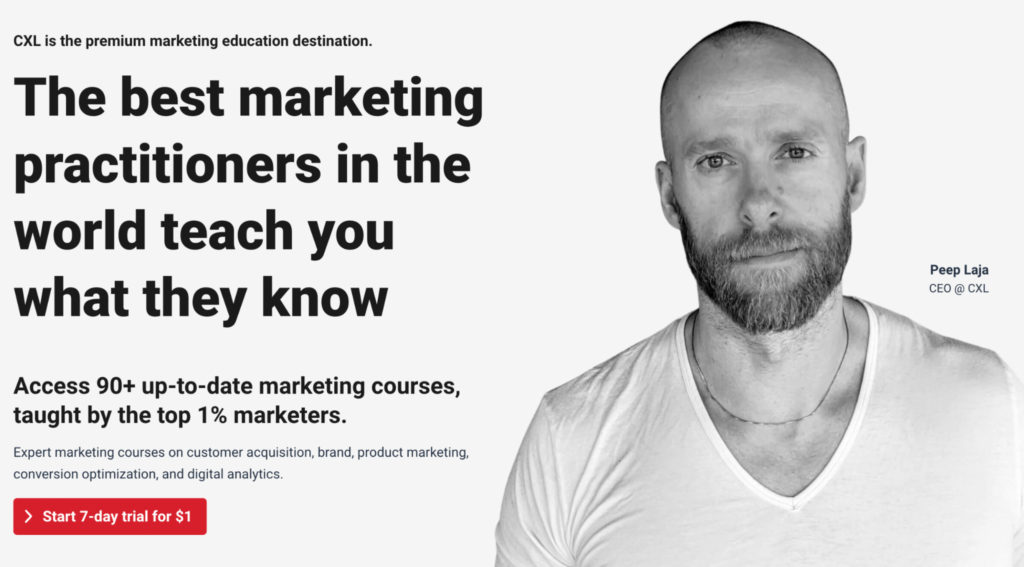
SEO tool Clearscope invites users to join their Director of SEO in a webinar.

And revenue intelligence platform Gong uses CTAs at the end of blog posts to guide readers to additional content they may find valuable:
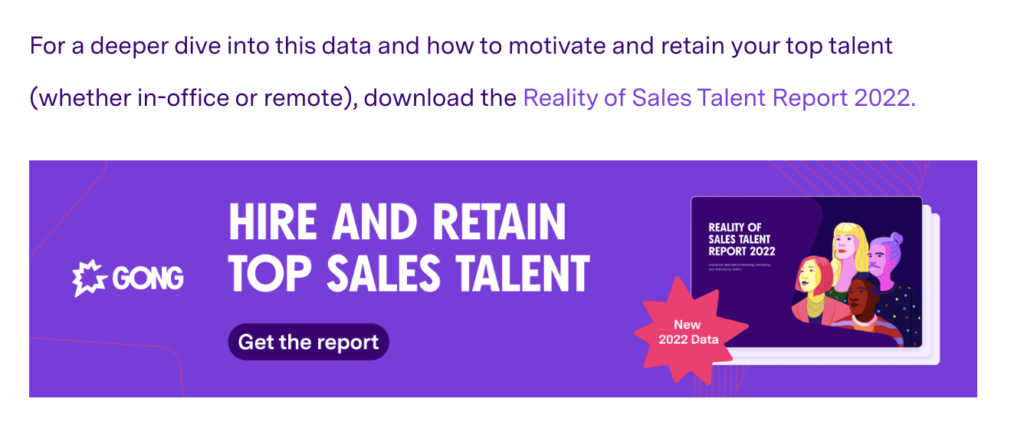
At the most basic level, these CTAs exist to give customers their next step in the buying journey.
CTAs drive the buying journey
A CTA in a brand awareness campaign will look entirely different from a CTA meant to drive sales at the bottom of the funnel.
Take this post from Mailchimp on email marketing benchmarks. Most readers will land on this page after searching for “email marketing benchmarks” on Google.

Mailchimp knows, then, that the user’s search intent is to learn more about the subject of email marketing, not about Mailchimp and its features.
So, the CTA at the bottom of this blog post directs readers to related concepts, several of which are more prescriptive and action-focused than email marketing benchmarks (a powerful way to build value for the customer and to establish your brand as an authority).
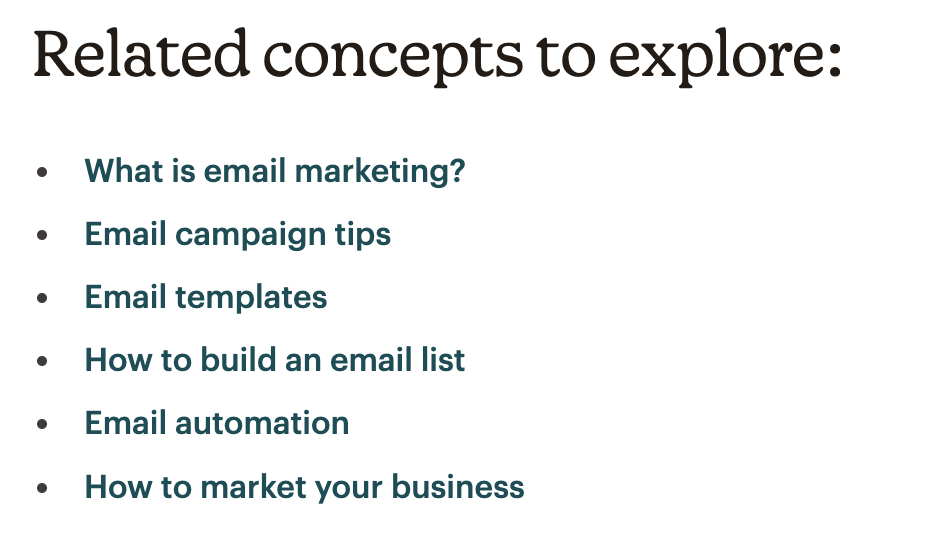
Strong CTAs go beyond “buy now”
The traditional answer as to why CTAs are important is that “customers don’t take action unless they’re told what to do.”
While this is true, it’s not the whole story. A strong call to action doesn’t just provide a path forward but removes any barriers or objections.
Consider the CTA “Sign up now” on a SaaS product landing page. This raises several buyer objections:
- Do I have to pay?
- How much does it cost?
- Am I locked into a contract?
- How long is the contract?
- What payment methods are available?
Effective CTA writing can overcome these objections simply by altering the wording.
Copper uses the copy “Try Free” to preempt and solve these objections.
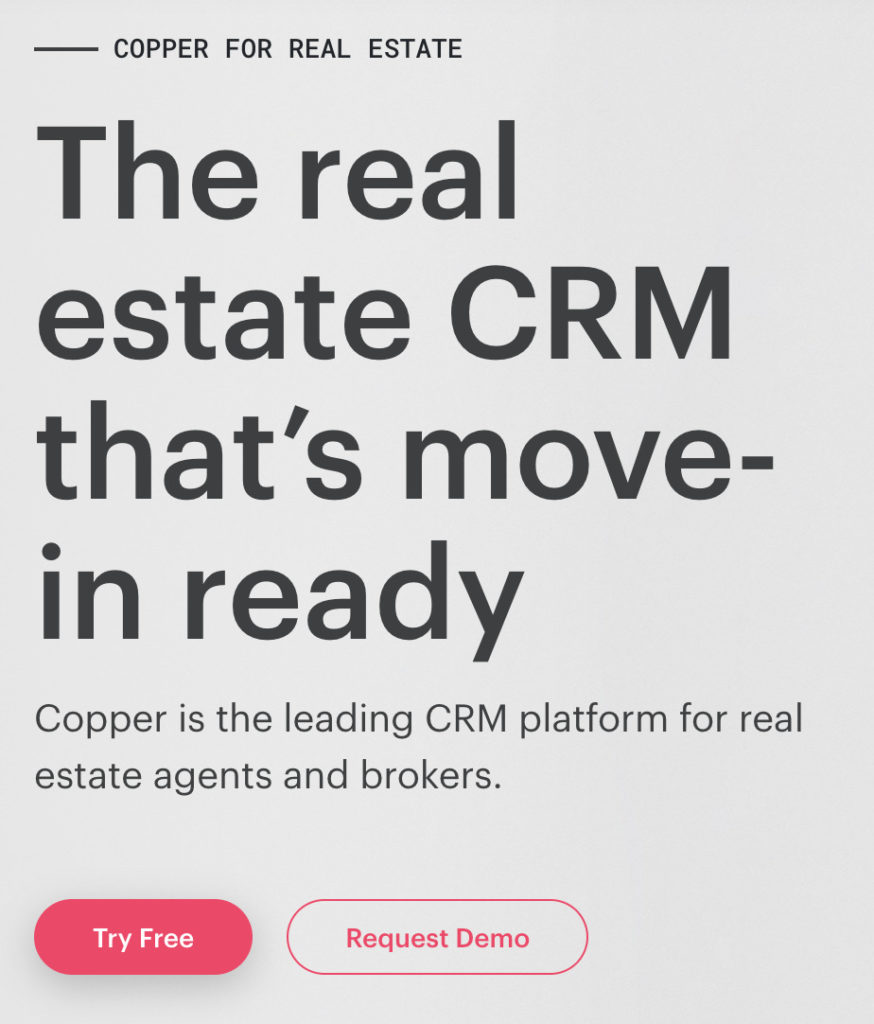
The word “Free” eliminates any concerns about cost, and the addition of the term “Try” implies a trial period, so there is no risk of signing up for a lengthy contract.
How to write a call to action that converts
CTA writing is a form of persuasive writing . Your goal is to convince readers to take a given action in as few words as possible.
A strong understanding of buyer psychology and buyer intelligence will be helpful here. You can also fast-track results with these CTA writing techniques.
Use Voice of Customer research to understand buyer goals
Voice of Customer research uses qualitative and quantitative research to uncover the wants and needs of buyers in their own words.
Then, you’ll use these insights verbatim (or close to) in your marketing material to resonate with customer desires.
This is how Copyhackers wrote Beachway Therapy Center’s landing page to drive 400% more click-throughs on the CTA.
The group mined Amazon addiction book reviews to learn about wants and pains and note memorable phrases.
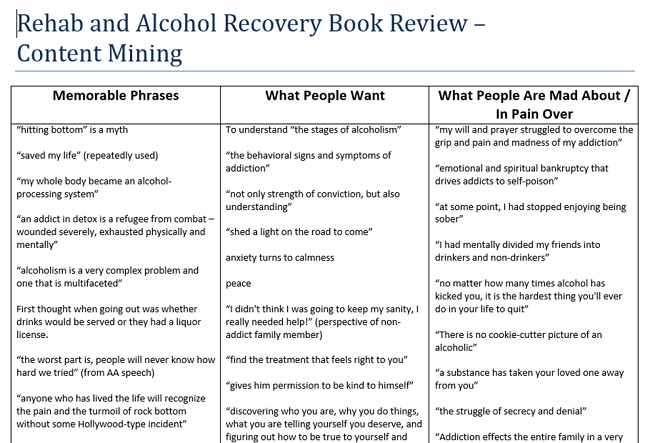
Within those reviews, they caught recurring themes and identified the messaging that resonates with their customer base. The group then applied that copy to the landing page.
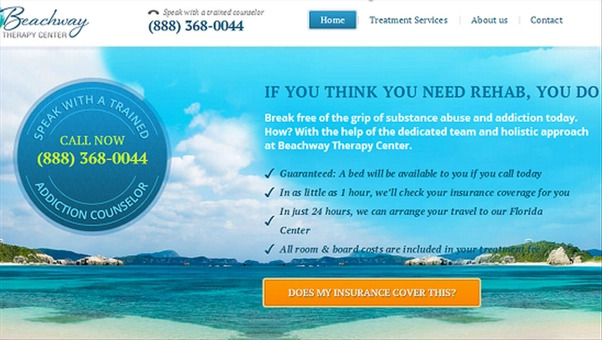
Messaging strategy agency Make Mention learned that the CTA for their client, “Start with the first hour free,” was asking for too much too soon.
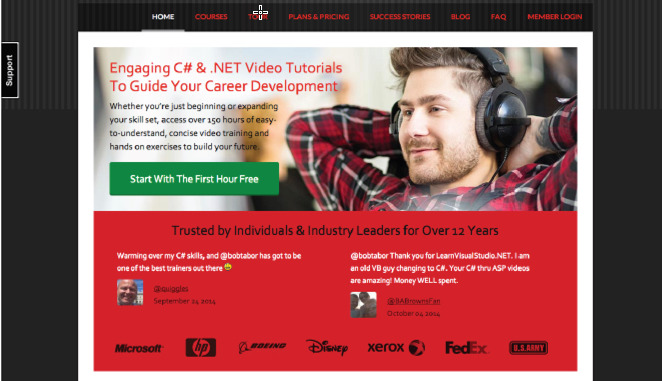
The group conducted online and email surveys and learned that users struggled to understand the course’s value and encountered friction because objections weren’t addressed.
Make Mention redid the page, injecting several phrases from the customers’ vocabulary, including:
- “practical exercises”;
- “getting your first developer job.”
They also directed the CTA button to lead to an alternative page where customers can learn more about the course.

Make Mention helped customers get more information before asking for the sale, and critically, they used the language customers use. This tweak boosted conversions on the CTA button by over 66%, leading to more check-outs from the Curriculum page than the Pricing page.
A good general rule to follow in CTA writing is to always start with an imperative. Imperatives are action words; they tell the reader to do something.
Powerful examples of action phrases include:
- Learn;
SparkToro demonstrates two examples of imperatives in action with their buttons: “Try SparkToro for free” and “See Pricing.”
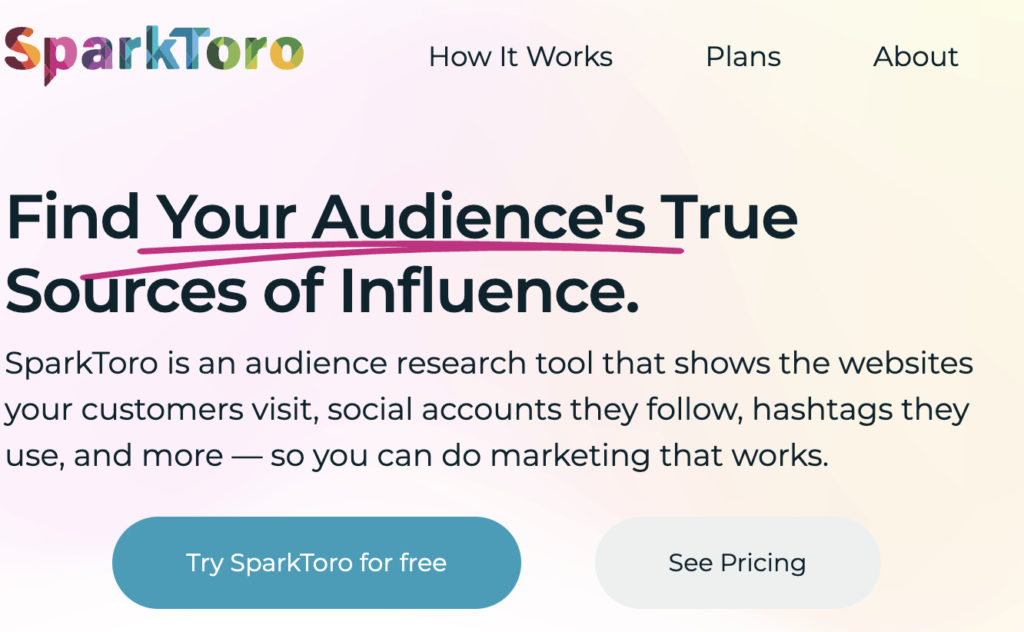
Preempt and eliminate objections
Effective call to action writing preempts objections and eliminates them early.
Take Buzzsumo , which clarifies that new users don’t have to pay a cent for 30 days, obliterating worries about forgetting they’ve started the trial and purchasing accidentally.

The most common objections you’ll face are:
- Cost (Is there one? And if so, how much?);
- Time (How long is this going to take?);
- Commitment (Am I locked into anything?).
For cost objections, use terms like “free” and “no credit card required” to clarify that there is no cost involved.
For time objections, phrases like “instantly,” “in 2 minutes,” and “now” communicate that the action will take place quickly.
Solve commitment objections by clearly outlining the trial length (“Try free for 14 days”) or with terms like “free forever” and “no credit card.”
Leverage power words to build excitement
Command words tell readers what to do. Power words make them feel excited about doing it. Combining the two is what motivates users to take action.
Examples of convincing power words to use in your CTA writing include:
- Classified;
- Minimalist;
- Irresistible;
- Effortless.
For example, GAP uses the term “unique” to encourage users to sign up for their mailing list (in exchange for a 25% discount).

Create a sense of urgency to inspire immediate action
Great call to action writing inspires readers to take action now . When done well, they create buyer FOMO (fear of missing out), motivating website visitors to act immediately.
Words like “now,” “instantly,” “limited time,” and “today” are a good starting point but are best supplemented with urgent imperatives like “seize,” “gain,” and “access.”
Youprenuer combines the imperative “Get” with the urgency-building power word “Instant” to build a compelling CTA for their email list.

Use mystery to generate curiosity
In certain cases, you’ll want to avoid mystery altogether. For instance, when crafting a CTA designed to motivate readers to sign up for a free trial, we want to clarify what customers are getting into.
But curiosity can work in our favor for downloadable content like ebooks and guides.
Terms like “discover,” “see what’s inside,” and “get the secrets” are powerful curiosity-builders that can help motivate readers to hand over their email addresses in exchange for the promised value.
“Explore” is a great example of a curiosity-building word to include in your CTAs, as demonstrated by premium vodka brand Grey Goose .

Back up your claims with social proof
CTA copy doesn’t need to sit on its own.
Great CTA writers supplement copy with social proof (testimonials, reviews, logos) to give more gravity to their message and build trust with skeptical buyers.
Juro , for example, supplements their “book a demo” CTA with review ratings from Capterra and G2.

7 impressive calls to action (and why they work so well)
Ultimately, A/B testing and experimentation will help you uncover your purpose’s perfect call to action.
Use these examples as a jumping-off point, and tweak and test as appropriate.
1. Pipedrive removes barriers to conversion
One of the biggest factors preventing readers from converting is the unknown. When faced with a CTA like “Start now,” customers wonder internally:
- What’s involved in starting?
- Do I need to get my credit card out?
- What exactly am I committing to?
You can solve these objections before they arise with careful copywriting.
Pipedrive’s homepage CTA section is a powerful example of this.

The green “Start free” call to action button immediately tells readers there’s no cost involved. The supplementary “No credit card required” copy below also helps users overcome this objection.
The addition of the simple “Full access” answers the question, “But am I just signing up to a limited version, and will I need to pay to access more sophisticated features?”
Lastly, Pipedrive does a great job of communicating why readers should click that CTA button (because Pipedrive users close 28% more deals after their first year using the CRM).
Takeaways from Pipedrive’s CTA example:
- Incorporate terms like “free” and “no credit card” to solve cost objections;
- Make it clear to users what they’re signing up for (e.g., full platform access);
- Use compelling social proof to communicate the why (answer the question, “What’s in it for me?”.
Average CTA writing leaves readers guessing:
- What am I signing up for exactly?
- What happens next?
- What if I don’t like what I see?
- Am I going to get hounded by a sales rep?
Strong CTA writing makes a reader’s next steps abundantly clear.
Take ActiveCampaign .
The exit popup on their email marketing product page aims to capture a reader’s interest (and email address) before they leave ActiveCampaign’s site.
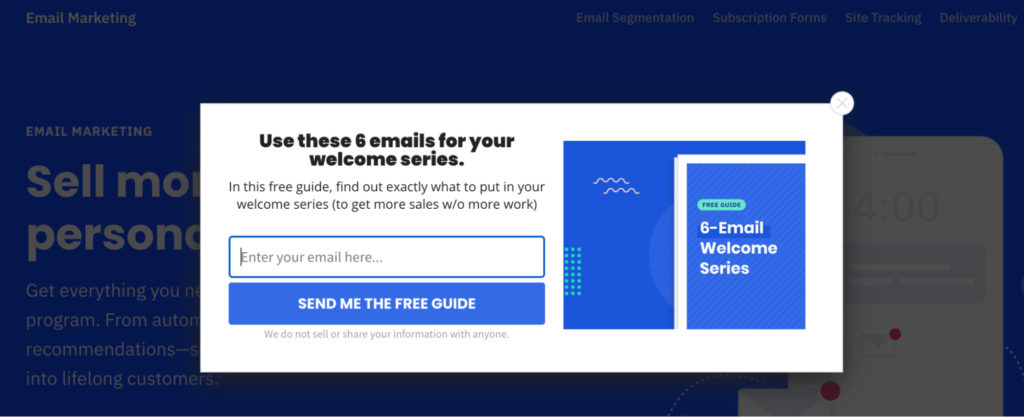
A simple “Download our guide” wouldn’t be sufficient. Those who leave a landing page without clicking an in-page CTA are clearly unconvinced, so any copy in an exit popup must be especially persuasive.
ActiveCampaign nails this in their header copy.
“Use these 6 emails for your welcome series” tells readers precisely what they’ll receive.
The use of the term “free” in the body copy eliminates cost objections, and the addition of the bracketed “to get more sales w/o more work” puts the offer in the context of the result, answering the reader’s question, “What’s in it for me?”
“Send me the free guide” (the copy in the CTA itself) is reader-focused (written in first person) and reiterates that there’s nothing to lose as the guide is free.
Lastly, the copy below the CTA button (“We do not sell or share your information with anyone”) works to convince even the most skeptical reader that they’re signing up for a safe offer.
Takeaways from ActiveCampaign’s CTA example:
- Make it abundantly clear what readers are going to receive;
- Solves the cost objection by doubling down on terms like “free”;
- Put your offer in the context of results (answer “What’s in it for me?”);
- Assure readers that their personal information will remain anonymous and won’t be sold or shared.
Vague, convoluted statements (“Helping ambitious creators design better futures”) don’t convert.
Concise, solution-focused calls to action that speak directly to outcomes (in your customers’ language) do.
Take Wordable , a platform that connects Google Docs with WordPress, HubSpot, and Medium, allowing high-volume content producers to publish to their blog in seconds.

Wordable doesn’t waste time telling readers how they’ll “Streamline and transform their content operations processes.” Instead, they jump straight to results:
- Publish in just one click;
- Export in seconds rather than hours;
- Cut back on VA or employee costs;
- Save as much as 100 hours per week in publishing time.
Then, Wordable delivers a persuasive offer, five free exports (notice the imperative “Get” kicking off the CTA copy), and eliminates any commitment objections by including the phrase “No credit card required.”
Prospects who read this CTA (and accompanying copy) aren’t left wondering what Wordable can do for them. They know exactly what problem it will solve and the results they can expect from hitting that CTA button.
Takeaways from Wordable’s CTA example:
- Speak your customers’ language (and avoid convoluted, vague, jargon-filled copy);
- Get straight to the results (What outcomes can your customer expect?);
- Back up “free” usage claims and solve commitment objectives by not requiring a credit card.
4. Jasper speaks directly to a common pain point
Though actual figures are hard to come by, marketers estimate that the average consumer sees between 4,000 and 10,000 ads per day .
Unsurprisingly, users see a large chunk of these ads ( 33% ) on social media platforms.
If you’re going to stand out from the other 3000+ ads your audience sees on these sites, you need to connect directly with their most critical challenges.
Take Jasper , an AI copywriting assistant.
Jasper’s Facebook ad speaks directly to a target audience pain point: content marketing is a time-consuming, labor-intensive process.

The video used in this digital ad is effective in and of itself (it shows the product in action, overlaid with a simple message “Write 10x faster”), but the copy below is what makes this a good CTA example:
“Create high-quality articles in seconds.”
First, Jasper begins with the action verb “create” before describing the desired outcome (high-quality articles) and the compelling benefit of their product (in seconds).
In just six words, Jasper communicates how its platform solves a common challenge for ecommerce site owners, social media managers, and digital marketing professionals.
Takeaways from Jasper’s CTA example:
- Identify a pain point that resonates with potential customers;
- Communicate how you’ll solve that pain point (i.e., your value proposition);
- Describe this benefit concisely, putting the reader as the subject.
Often, the best call-to-action examples are those that are concise. This is an especially powerful technique when writing CTAs designed to promote downloadable content such as guides, ebooks, and checklists, as it can double as an intrigue-builder.
Take email marketing platform Emma , whose simple CTA “See How” is a compelling example of how much you can achieve with just two words.

Of course, this CTA is only effective in the context of what you’ve said before:
- Your email marketing campaigns can be better (probably);
- We’re going to give you a framework for improving them.
This is an intriguing proposition (readers are asking, “Can I get more from my existing email list?”).
The call to action “See How” builds on this intrigue, inviting readers to click through and answer the question themselves.
Takeaways from Emma’s CTA example:
- Introduce a common problem;
- Imply that you’ll help readers solve it;
- Keep your CTA copy short and sweet to leverage that curiosity.
Skilled CTA writers understand how readers will respond to an offer and what objections or roadblocks will appear to prevent conversion.
Then, they address these objections directly in their copy.
Take BetterHelp , an online therapy platform that uses social media advertising in its demand generation strategy .

The intention of the above ad isn’t to convert readers into paid subscribers. It’s simply to convince ad viewers to click through to BetterHelp’s website and learn more about their product.
But, BetterHelp knows that while this is a low-commitment ask, prospective customers will have many concerns:
- What will others think if they find out I’m using online therapy?
- I’m busy. I don’t think it will fit around my schedule.
- Isn’t therapy usually super expensive?
BetterHelp solves all three objections using just three words:
- Discreet (Nobody will even know I’m using BetterHelp).
- Convenient (Therapy appointments are flexible).
- Affordable (BetterHelp is more cost-effective than traditional therapy solutions).
In this example, these three words supplement the actual call to action copy, “Online Therapy on Your Schedule,” reiterating that BetterHelp’s therapists are flexible about appointment times.
Takeaways from BetterHelp’s CTA example:
- Put yourself in the reader’s shoes: What concerns might they have that could prevent them from converting?
- Ask: What can we communicate that would quell these concerns?
- Test: What’s the best word (or phrase) to communicate that with as few words as possible?
7. ClickUp backs up its claim with a compelling guarantee
Convincing calls to action often make impressive claims.
But today’s consumers aren’t easily convinced, so if you make bold claims, be prepared to back them up.
Take ClickUp , which guarantees new users will save one day every week.
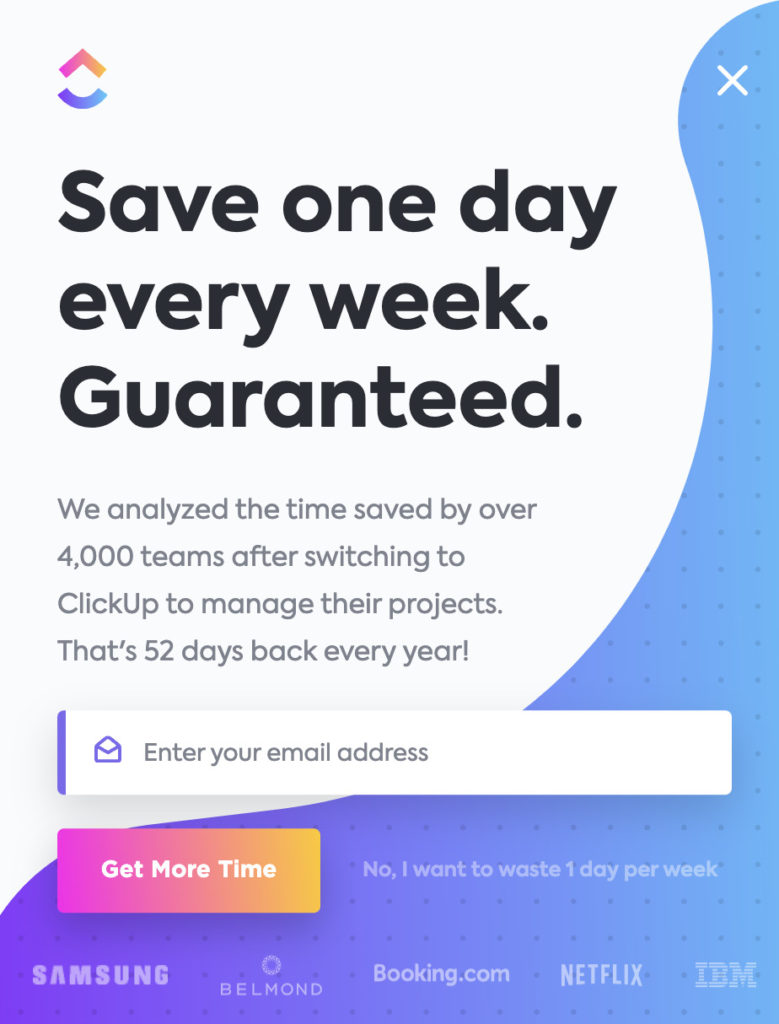
That’s a big promise, but ClickUp backs it up by providing context to their claim (we analyzed over 4,000 teams) and supplementing the popup ad with several impressive logos (Samsung, Netflix, IBM.)
But the real winner here is ClickUp’s CTA copy.
“Get More Time” is all about the result. It’s not about what ClickUp wants (“Sign up today”). It’s about what the customer needs .
Takeaways from ClickUp’s CTA example:
- If you’re going to make a bold claim, be prepared to back it up;
- Use customer logos as social proof to back up such statements;
- Frame your CTA copy from the customer’s perspective, not yours.
These call-to-action examples are a solid starting point for designing high-performing CTAs that resonate with your own audience. What works for these brands may not work for yours, so it’s always better to hypothesize and test.
CTAs that convert at high rates come from strategic experimentation. This is the only way to determine whether the word “Get” performs better than “Sign up” or “Access” for a given call to action. And it’s one of the best ways to see real business growth . Check out our A/B testing tutorial today, and become a CTA testing pro.
Related Posts

Should you say 'read more' or 'product information' in your product category view? Which is…
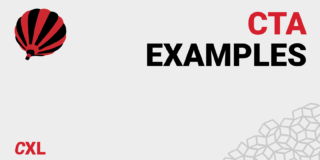
The call to action is a core component of marketing, sales, and any persuasion-based effort.…
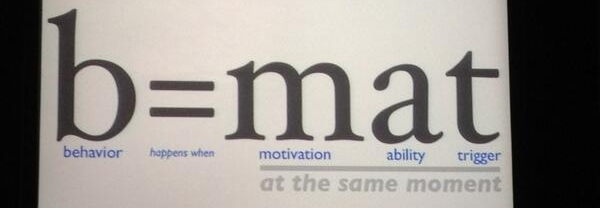
In today's review I'm assessing whether websites in question could do anything to better get…

Planning to create a promo video to increase conversions? Good idea. Table of contents1. Dollar…

Josh Krissansen
Josh is a Content Specialist at Grizzle, a content marketing & SEO agency, and a freelance content writer for B2B clients in the SaaS space.
Current article:
Search posts.
- Acquisition (193)
- Audio posts (5)
- Business Building (118)
- Copywriting (43)
- CRO & Testing (316)
- Customer Stories (7)
- Digital Analytics (67)
- Google Analytics (26)
- Marketing Tactics (50)
- Original Research (15)
- Psychology (88)
- Social Media (23)
- The Pe:p Show (49)
- User Experience & Persuasive Design (180)
Being the best is achieved through consistency
Join 130,000+ growth marketers, optimizers, analysts, and UX practitioners and get a weekly email that keeps you informed.
- Your business e-mail *
- I agree to receive updates from CXL.
- Phone This field is for validation purposes and should be left unchanged.

VisualStory®
- Duarte DataStory®
- Presentation Principles™
Slide:ology®
- Slide Design
- Speaker Coaching
- Presenting Virtually™
- Illuminate™
- Adaptive Listening™
- Team training
- Learning journeys
- Brand and product storytelling
- Keynotes and events
- Sales enablement
- Communication systems
- Accelerator Lab™
- Our culture
- Our leaders
- Case studies
- Media mentions
Guides and tools
- Learner support
The secret to writing a call to action in a persuasive speech

Nancy Duarte
A well constructed and delivered presentation changes minds and ignites action.
Yet, there’s a key part of a presentation that doesn’t get mentioned enough — the call to action or CTA — and, a clear CTA creates a critical turning point in your presentation (or any other form of persuasive communications too).
The call to action which comes right before the end of a persuasive speech is where you clearly tell the audience a role they can play after they leave your talk. The CTA gives audience members concrete tasks to tackle, and these tasks are ones that must be completed in order to bring your ideas to fruition. And, it’s a key part of what makes your speech persuasive.
An audience might be thoroughly gripped by your narrative and convinced to believe what you do–but if they leave not knowing what they are supposed to do with your ideas, your presentation will have been–essentially–fruitless.
Because CTAs are such an important part of a presentation, it’s essential to make sure that the one you deliver lands with the people hearing it. The way to ensure that you write a call to action that persuades is to keep in mind that one size does NOT fit all—and you’ve got to tailor your CTAs.
People respond to different types of calls to action based on their temperaments, daily activities, goals, and more. So, it’s important to get to know who is in your audience before you decide how you’re going to deliver their post-talk “to-dos.” Once you do, you can ensure your call actually gets a response.
Who is in your audience, and what makes them tick?

There are four distinct skills your audience brings to help with your CTA: Doers, Suppliers, Influencers, and Innovators. To get your audience to act, your CTAs have to strike a chord and make sense with the skills they bring to the table. Taking action will seem natural for them when they can respond with an action that resonates with them. Audiences have a mix of all these skills, and you should appeal to each of them in your presentations.
Getting “doers“ to do something
Doers are the worker bees of an organization. They are the ones that hear what needs to get done – and then do it. Doers don’t shy away from physical tasks, and have the ability to round up the troops to inspire action in others, as well. Doers make an organization run, day in and day out.
If you’re speaking to doers, you’ll want to craft your CTA so that it includes action words that clearly explain what the doers should do. You may want to ask them to assemble, gather, attempt, or respond.
Motivating suppliers to share
Suppliers are usually not as action-oriented as doers. However, they have a lot of resources at their disposal – like money, manpower, materials, etc. Because of the amount of resources they have, suppliers have the means to help people move forward. They can get you what you resources you don’t have yourself.
Suppliers in your audience may be execs who could give you staff–or, investors who are trying to decide whether they want to put their money into a venture – or not.

To appeal to suppliers, you need to use different words than you did with the doers, since they’re not the ones that are going to be hitting the ground running to complete tasks. Instead, you’ll want to ask them to share their resources. You may want to use words like acquire, fund, support, or provide. These can help to appeal to the fact that they have something to give in order to make a change happen.
Influencing on your behalf
Influencers have the power to sway . They can change the minds of individuals and groups – large or small. Influencers are the people who mobilize others. They also evangelize ideas, and they know how to get people to change their beliefs and behavior.
Many influencers are leaders and others look up to them and follow their advice. Influencers can also be people in the spotlight, who people tend to be examples–like celebrities or public figures.
When you craft a call to action for an audience of influencers, you want to appeal to their ability to appeal to other people. Great call to action phrases for influencers include empower, convert, or promote. Many have social channels where they can share with others what you need for your idea to become reality.
Inviting others to innovate
The last type of audience member is the innovator. Innovators are people who can think outside of the box when they hear an idea, then think of ways to modify that idea. Innovators have outstanding brains in their heads. They can dream up strategies, clarify perspectives, and invent products. These people can generate something new where nothing existed before.
Anybody can be an innovator. But, often, innovators are founders of companies or creators of new products. They can be engineers, artists, or entrepreneurs; they handle fewer day-to-day tasks and more of the conceptual work.
To get support from an innovator, appeal to their ability to create things. The best call to action phrases for innovators include offers to invent, discover, pioneer, or create. You want to spur an audience of innovators to leave ready to make something new.
Make taking action sound irresistible
Appealing to what motivates various audience members is important to inspire action. However, to make sure your well-tailored CTAs lands, you shouldn’t end with your call to action. Nobody ever wants to simply be saddled with a lengthy to-do list.
Instead, after you deliver your CTA, paint a picture of what is going to happen for audience members once they complete the requested action. Throwing out a CTA creates curiosity for listeners; they want that curiosity satisfied by understanding what will happen after the action is over. This satisfaction – and a picture of what the future could look like – will inspire people to act.
Alfred Chuang, founder and CEO of Magnet Systems, recently delivered a UC Davis Commencement speech that contained an example of powerful a CTA that describes what will happen if listeners choose to act. Chuang encouraged the audience of engineering graduates to keep working on innovative projects and to accept the power of an immigrant-rick workforce.
He ended: “A new world is on the horizon. And it will be more incredible than any of us can possibly imagine. Our greatest innovations are ahead of us, not behind. But we need great engineers to build that world for us. And that’s you. We need you to not give up. Ever. We need you to finish your projects. Done, done, done. We need you to leverage the power of an immigrant-rich workforce. And we need you all to be a little insane.”
If you deliver a presentation that is gripping and empathetic, you’ve almost delivered the perfect presentation. All that’s left is including a CTA that clearly explains what listeners could do to help push your idea forward –and an ending that paints a picture of what the world will look like if they help. Then, you can leave your presentation knowing that you’ve delivered a talk that’s going to move people to act.

Check out these related courses
Adaptive Listening™
Build trust and traction
Uncover a better way to listen that goes beyond active listening and paying attention. Learn about the way you prefer to listen, and adapt to meet the needs of others.
Structure and storyboard a talk
Analyze your audience and organize your ideas into a story structure that will move them. Transform content into visual concepts and build a storyboard for your presentation.
Illuminate™
Drive strategic change
Craft an effective communication strategy that sparks and sustains change with empathetic speeches, stories, ceremonies, and symbols that motivate and inspire teams.
Craft a persuasive talk
Learn how the world’s greatest speakers use story to persuade. Develop a story structure that powerfully expresses your ideas, applying the principles of empathy, contrast, and variety.
Presentation Principles™
Learn presentation basics
Follow a step-by-step method to write compelling stories, amplify ideas visually, and present with confidence while learning at your own pace.
Turn ideas into visuals
Use visual thinking and design principles to transform information into effective and memorable graphics for presentations.
Create “skimmable” documents
Build helpful pre-reads and impactful leave-behinds with presentation software to support knowledge sharing and decision-making.
Check out these related resources

Presentation storytelling 101: Your audience is the hero
Starting off your presentation about you and your company is a common mistake we see. Learn how to make your audience the hero (and not you) and why it’s a timeless story principle that can make every presentation a success.

The art of document design: Tips and tricks
If you need better pre-reads or leave-behinds, you need document design principles. Learn our best tips and download our template to get started.

3 secrets to choosing and designing unforgettable visual aids
Learn best practices when considering visual aids and how to design a memorable presentation deck.

Resonate® ebook
A free multimedia version of Nancy Duarte’s award-winning book, Resonate: Present Visual Stories that Transform Audiences.

The secret structure of great talks
From the “I have a dream” speech to Steve Jobs’ iPhone launch, many great talks have a common structure that helps their message resonate with listeners. Watch Nancy Duarte’s TEDx Talk that’s garnered over 3 million views.

Presentation formats guide
Get tips on how to determine your presentation format. This guide will help you consider audience size, presentation setting, and the delivery method that best suits your communication needs.
Argumentative Essay – Outline, Form, and Examples
What is an argumentative essay.
An argumentative essay requires the writer to investigate a specific topic by collecting and evaluating evidence to establish a position on the subject matter.
When preparing to compose a good argumentative essay, utilize the following steps:
Step 1: Select a topic.
Step 2: Identify a position.
Step 3: Locate appropriate resources.
Step 4: Identify evidence supporting the position. ( NOTE: If there is little evidence in support of the claim, consider re-examining the main argument.)

When gathering evidence, use credible sources . To determine the credibility of the source, consider authority, currency, accuracy, and objectivity:
Who is the author ? Are they an expert in the field? Has a reputable publisher published the work?
How current is the information in the source? Does the currency of the source matter? Does the age of the source impact the content? Is there newer information that disproves the source’s information?
Can other sources verify the accuracy of the information? Does the information contradict that found in other commonly accepted sources?
Is there any evidence of bias, or is the source objective ? Is the research sponsored by an organization that may skew the information?
The following are typically recognized as providing appropriate, credible research material:
Peer-reviewed journals/research papers
Government agencies
Professional organizations
Library databases
Reference books

Writers should avoid using the following sources:
Social media posts
Out-of-date materials
Step 5: Utilize the research to determine a thesis statement that identifies the topic, position, and support(s).
Step 6: Use the evidence to construct an outline, detailing the main supports and relevant evidence.

Argumentative essay outline
After gathering all of the necessary research, the next step in composing an argumentative essay focuses on organizing the information through the use of an outline:
Introduction
Attention Grabber/Hook
Background Information: Include any background information pertinent to the topic that the reader needs to know to understand the argument.
Thesis: State the position in connection to the main topic and identify the supports that will help prove the argument.
Topic sentence
Identify evidence in support of the claim in the topic sentence
Explain how the evidence supports the argument
Evidence 3 (Continue as needed)
Support 2 (Continue as needed)
Restate thesis
Review main supports
Concluding statement
Invite the audience to take a specific action.
Identify the overall importance of the topic and position.

How to write an argumentative essay
Regardless of the writer’s topic or point of view, an argumentative essay should include an introductory paragraph, body paragraphs, a conclusion, and works cited.
Background information
Body Paragraphs
Analysis of evidence
Rephrased thesis
Review of main ideas
Call to action
Works Cited

Argumentative essay introduction
The introduction sets the tone for the entire paper and introduces the argument. In general, the first paragraph(s) should attract the reader’s attention, provide relevant context, and conclude with a thesis statement.
To attract the reader's attention , start with an introductory device. There are several attention-grabbing techniques, the most common of which consist of the following:
The writer can emphasize the topic’s importance by explaining the current interest in the topic or indicating that the subject is influential.
Pertinent statistics give the paper an air of authority.
There are many reasons for a stimulating statement to surprise a reader. Sometimes it is joyful; sometimes it is shocking; sometimes it is surprising because of who said it.
An interesting incident or anecdote can act as a teaser to lure the reader into the remainder of the essay. Be sure that the device is appropriate for the subject and focus of what follows.
Provide the reader with relevant context and background information necessary to understand the topic.
Conclude with a thesis statement that identifies the overall purpose of the essay (topic and position). Writers can also include their support directly in the thesis, which outlines the structure of the essay for the reader.
Avoid the following when writing the introduction to argumentative writing:
Starting with dictionary definitions is too overdone and unappealing.
Do not make an announcement of the topic like “In this paper I will…” or “The purpose of this essay is to….”
Evidence supporting or developing the thesis should be in the body paragraphs, not the introduction.
Beginning the essay with general or absolute statements such as “throughout history...” or “as human beings we always...” or similar statements suggest the writer knows all of history or that all people behave or think in the same way.
Argumentative essay thesis
The thesis statement is the single, specific claim the writer sets out to prove and is typically positioned as the last sentence of the introduction . It is the controlling idea of the entire argument that identifies the topic, position, and reasoning.
When constructing a thesis for an argumentative paper, make sure it contains a side of the argument, not simply a topic. An argumentative thesis identifies the writer’s position on a given topic. If a position cannot be taken, then it is not argumentative thesis:
Topic: Capital punishment is practiced in many states.
Thesis: Capital punishment should be illegal.
While not always required, the thesis statement can include the supports the writer will use to prove the main claim. Therefore, a thesis statement can be structured as follows:
TOPIC + POSITION (+ SUPPORTS)
No Supports: College athletes (TOPIC) should be financially compensated (POSITION).
Supports: College athletes (TOPIC) should be financially compensated (POSITION) because they sacrifice their minds and bodies (SUPPORT 1), cannot hold
Argumentative essay body paragraphs
Body paragraphs can be of varying lengths, but they must present a coherent argument unified under a single topic. They are rarely ever longer than one page, double-spaced; usually they are much shorter.
Lengthy paragraphs indicate a lack of structure. Identify the main ideas of a lengthy paragraph to determine if they make more sense as separate topics in separate paragraphs.
Shorter paragraphs usually indicate a lack of substance; there is not enough evidence or analysis to prove the argument. Develop the ideas more or integrate the information into another paragraph.
The structure of an argumentative paragraph should include a topic sentence, evidence, and a transition.
The topic sentence is the thesis of the paragraph that identifies the arguable point in support of the main argument. The reader should know exactly what the writer is trying to prove within the paragraph by reading the first sentence.
The supporting evidence and analysis provide information to support the claim. There should be a balance between the evidence (facts, quotations, summary of events/plot, etc.) and analysis (interpretation of evidence). If the paragraph is evidence-heavy, there is not much of an argument; if it is analysis-heavy, there is not enough evidence in support of the claim.
The transition can be at the beginning or the end of a paragraph. However, it is much easier to combine the transition with the concluding observation to help the paragraphs flow into one another. Transitions in academic writing should tell the reader where you were, where you are going, and relate to the thesis.
Some essays may benefit from the inclusion of rebuttals to potential counterarguments of the writer’s position.
Argumentative essay conclusion
The conclusion should make readers glad they read the paper. It can suggest broader implications that will not only interest readers but also enrich their understanding in some way. There are three aspects to follow when constructing the conclusion: rephrase the thesis, synthesize information, and call the reader to action.
Rephrased the thesis in the first sentence of the conclusion. It must be in different words; do not simply write it verbatim.
Synthesize the argument by showing how the paper's main points support the argument.
Propose a course of action or a solution to an issue. This can redirect the reader's thought process to apply the ideas to their life or to see the broader implications of the topic.
Avoid the following when constructing the conclusion:
Beginning with an unnecessary, overused phrase such as "in conclusion," "in summary," or "in closing;" although these phrases can work in speeches, they come across as trite in writing
Introducing a new idea or subtopic in the conclusion
Making sentimental, emotional appeals that are out of character with the rest of the paper
Including evidence (quotations, statistics, etc.) that should be in the body of the paper
Argumentative essay examples
Examples of argumentative essays vary depending upon the type:
Academic essays differ based upon the topic and position. These essays follow a more traditional structure and are typically assigned in high school or college. Examples of academic argumentative essay topics include the following:
Advantages or disadvantages of social media
Animal testing
Art education
Benefit or detriment of homework
Capital punishment
Class warfare
Immigration
School uniforms
Universal healthcare
Violence in video games
Argumentative literary essays are typically more informal and do not follow the same structure as an academic essay. The following are popular examples of argumentative literary essays:
“Letter from Birmingham Jail” by Martin Luther King, Jr.
“Death of the Moth” by Virginia Woolf
“Shooting an Elephant” by George Orwell
“Thoughts for the Times on War and Death” by Sigmund Freud
“Does the Truth Matter? Science, Pseudoscience, and Civilization” by Carl Sagan
“Self-Reliance” by Ralph Waldo Emerson
Business growth
Marketing tips
16 call to action examples (and how to write a CTA)

What comes to mind when I try to think of a powerful CTA (call to action) is the one my dad expertly executed daily by bellowing at me to get a job . Fresh from a college experience that promised the world but mainly delivered a mountain of student debt, I was under the assumption that adulthood was supposed to be full of quirky adventures and unexpected meet-cutes, not unsolicited career advice from a man who still struggles to connect to Bluetooth.
Eventually, his CTA successfully motivated me to become a productive member of society. And that's the magic of a compelling CTA—it jolts you out of your passiveness and into action. In my case, I got a job despite a lifelong belief that work is something to avoid unless absolutely necessary. (Look at me now, Dad!)
Just as personal CTAs can lead to transformative life decisions, marketing CTAs have the potential to significantly impact user engagement and conversion. Want to craft your own magnetic calls to action? Keep reading for tips and examples of what makes great CTAs, well, great.
Table of contents:
What is a call to action?
A call to action is a prompt or message, usually formatted as a button or link, that encourages the audience to take a specific action.
CTAs are commonly used in marketing and sales contexts to guide users toward the next step in their journey, whether that's purchasing a product, signing up for a newsletter, or forwarding that chain email to all of their friends to avoid eight years of bad luck.
I know what you're thinking: "I'm a human adult with a brain. I'm not going to let a shiny button on the internet tell me what to do." But the reality is that the psychology behind CTAs taps into our innate desires and instincts, making us more inclined to follow through. Remember that one time you got lost down a YouTube rabbit hole, and six hours later, you're watching a documentary on bioluminescence in deep sea creatures? You have a few "Watch next" or "Smash that like button!" CTAs to thank.
Types of CTAs
You should calibrate your call to action with the relevant stage of a customer's journey. From the curious browser lured in by a "Learn more" button, to the nearly convinced shopper beckoned with a "Why choose us?" link, and finally to the ready-to-purchase consumer presented with a decisive "Buy now" directive—you want to ensure the user is always met with a suitable and enticing invitation, guiding them seamlessly down the funnel. Here's a primer on some of the most common types of CTAs.
|
|
|
|
|---|---|---|---|
| Encourages users to fill out a form, providing their information for various purposes | Contact page, request for quote page, or as part of lead generation forms | "Get a free quote" |
| Invites users to explore further content by clicking on a link or button | End of blog posts, related articles sections, or teasers | "Want to learn more? Click here to read the full article" |
| Directs users to a page or section highlighting the key features of a product or service | Homepage, product pages, or service descriptions | "Discover the key features that make our new smartphone stand out" |
| Encourages users to share content or products on their social media platforms | Near the content being shared, such as articles, images, or videos | "Share this amazing deal on Facebook" |
| Guides potential customers toward making a purchase after they've shown interest or engaged with your content | Product pages, shopping carts, or as part of drip marketing campaigns | "Add to cart and enjoy 20% off your first purchase" |
| Used to seal the deal or complete a transaction, often found in the final steps of the checkout process | Product pages, checkout pages, or limited-time offer banners | "Limited stock available. Buy now to secure your item!" |
| Promotes an upcoming event and encourages users to register or learn more about it | Event's landing page, email invitations, or display banners | "Register for our webinar" |
| Suggests other relevant content to keep users engaged and exploring your website | End of articles, blog posts, or in related articles sections | "Explore more on this topic" |
The effectiveness of a CTA depends on its copy, design, placement, and relevance to the user. The choice of words can significantly impact user engagement, as phrases like "Snag your copy" might resonate more than a generic "Download now," depending on your audience. Identify which action(s) will bring the most value to your business, then use your CTA to steer users in the right direction.
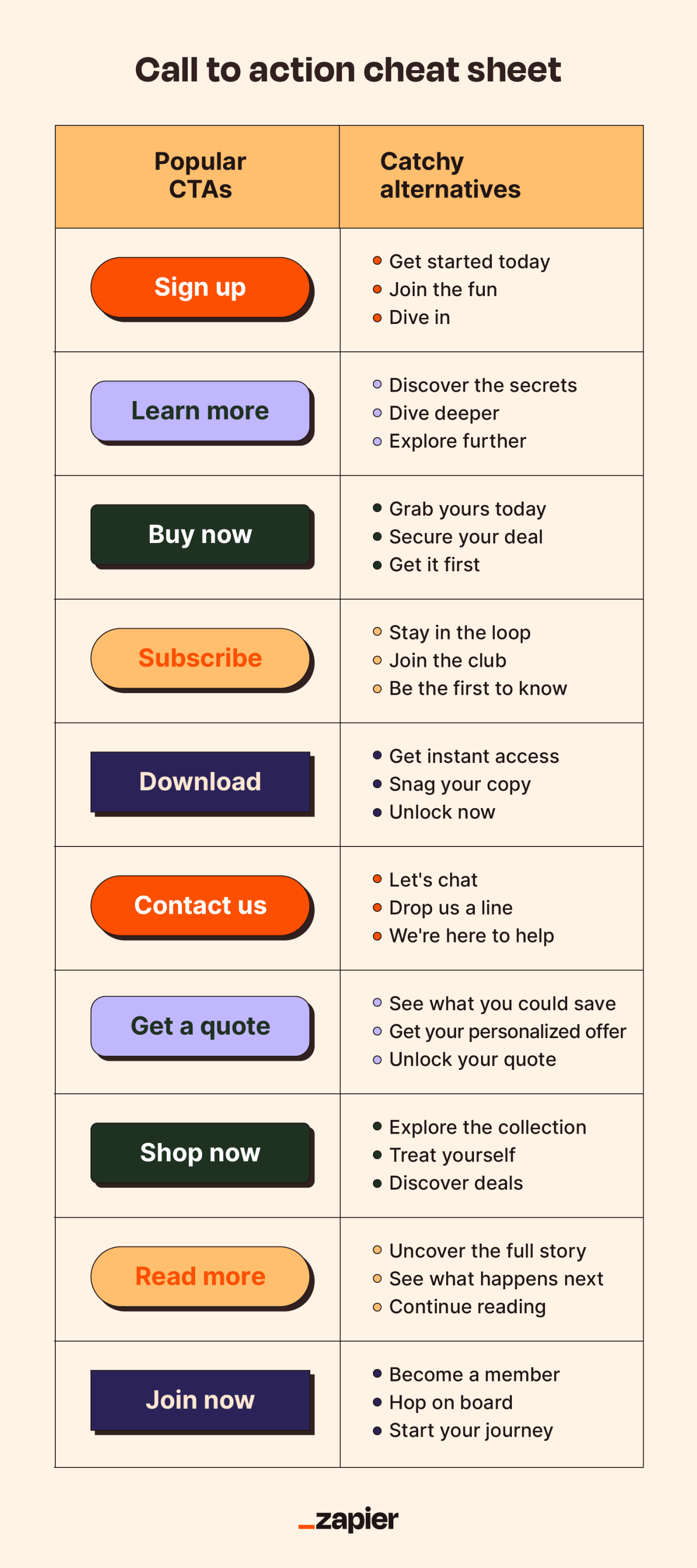
Why calls to action work
As a user of the beloved internet, you've absolutely seen calls to action that were pushy or patronizing, begging the question: "do I really need someone to tell me where to click?" But just like the difference between an aggressive sales rep and a sales rep that actually listens, a CTA that's written with care can get you a conversion without the negative connotations.
Why? Because having a strong CTA in your online sales pitch fits the psychology of your visitors.
But more than that, a call to action—like any good sales closer—acts as a climax to the pitch. It serves the same function as a joke's punchline, and without a CTA, the visitor is left in a sort of directionless limbo.
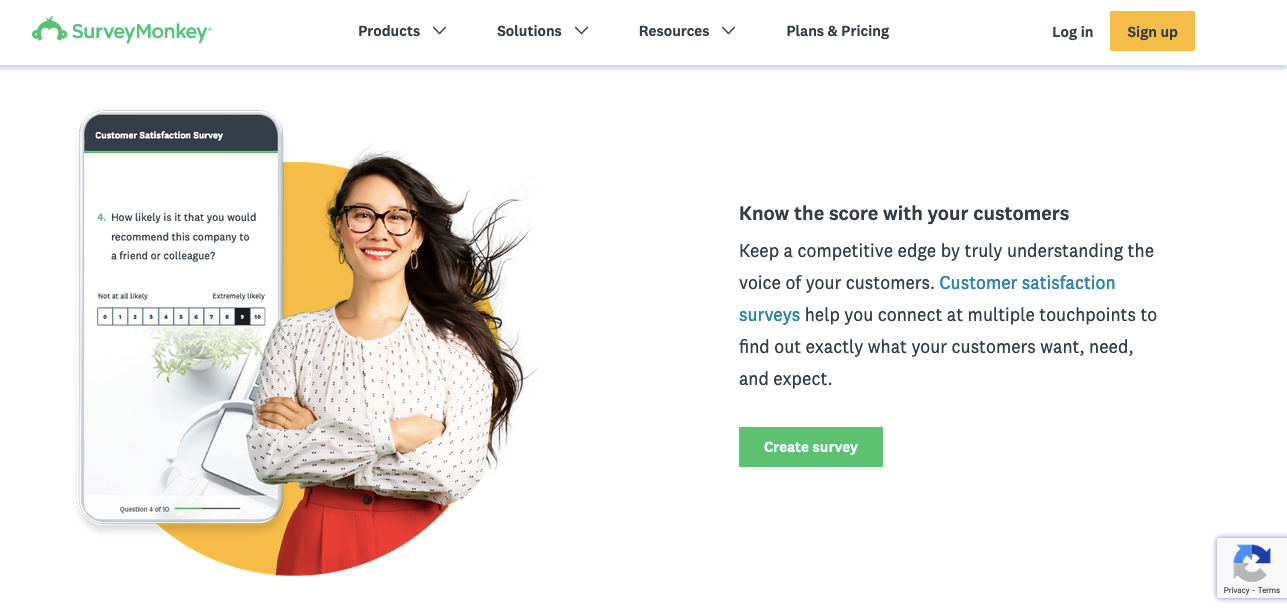
All in all, the call to action is the best online equivalent we can get to a personalized, face-to-face sales closer. We may not be able to tailor our final pitch to a particular customer, but we can use the same techniques and strategies on a broader, more inclusive scale. And therein lies the art of writing a CTA.
How to write a call to action
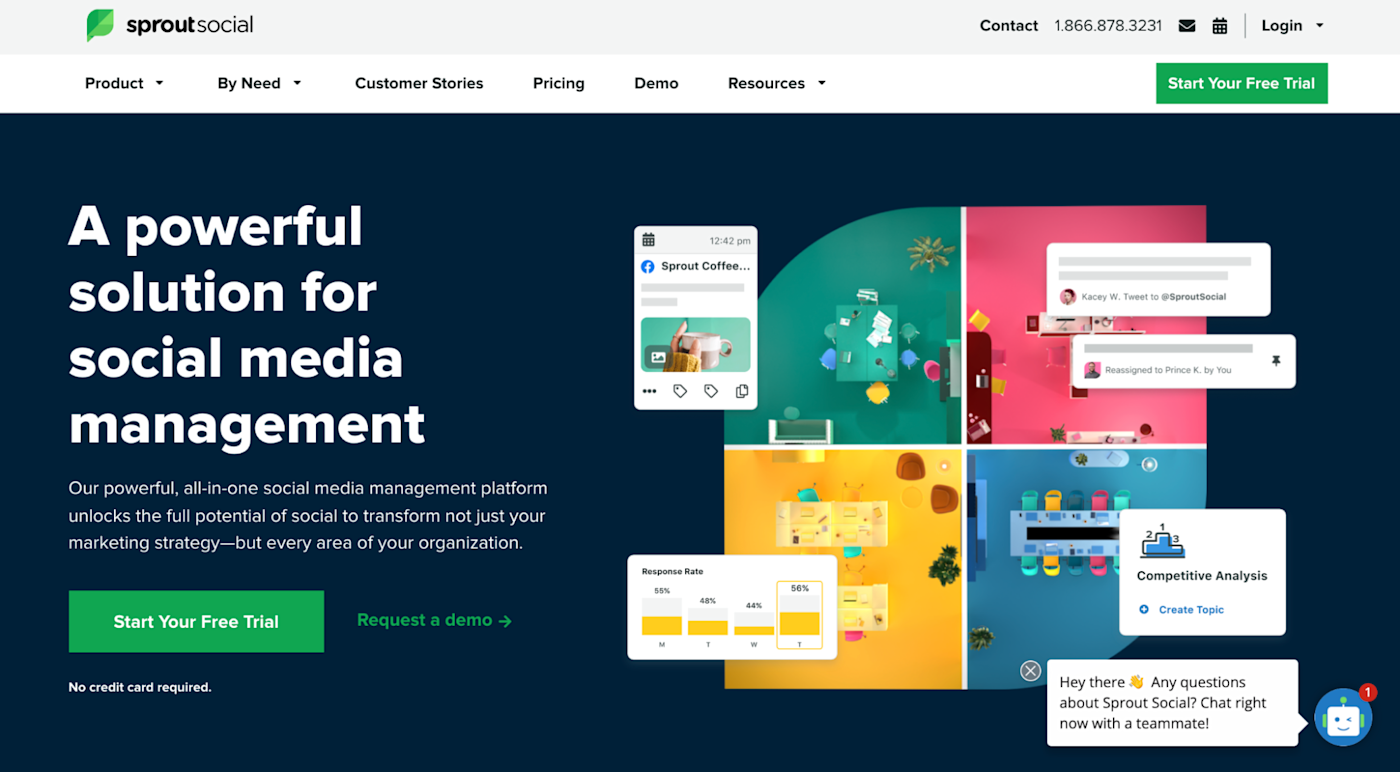
Your calls to action should be unique, specific to where it's featured as well as your particular audience and targets. That said, the best CTAs do share some characteristics that you can apply wherever they may be.
If you're looking for one secret to effective CTAs, here it is: give them a reason to click, share, or hand over their email address . More important than the wording, placement, or color of your CTA is the underlying incentive a person has to follow it. How will answering your call to action help them?
A good call to action restates its benefit bluntly and succinctly.
If you're offering a discount, remind them what percentage.
If they're getting a free PDF, mention the words "free" and "PDF."
If you're using a standard link, typically you write the incentive in your CTA's anchor text (the clickable text). In the case of social media posts and ads, you should reserve the last line in your message for your call to action, so mention any benefits there.
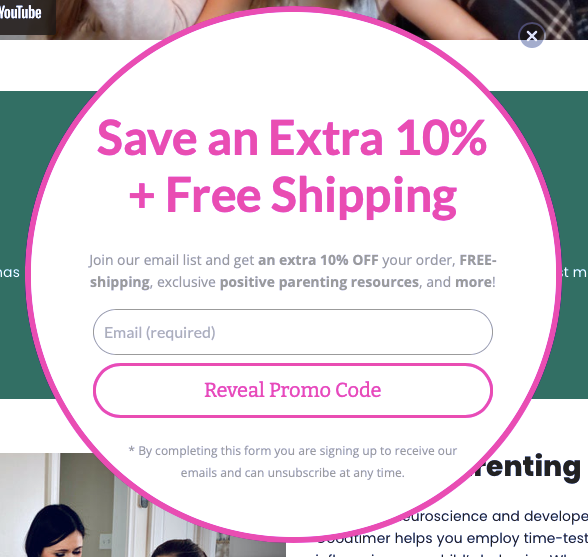
If you're using a button CTA, you have to limit the number of characters you use, so it's better to add secondary text. While the button can say something basic like "buy now," nearby you should include a line or two to remind visitors about the advantages to clicking.
Transparency
For starters, say exactly what will happen when you click. Remove all mystery with specifics. For example, saying "start your download automatically" is more descriptive than "click here to download." (For button CTAs, with limited space, you can include secondary text nearby.)
You want to acknowledge any user doubts and assuage their fears. If visitors are worried about security, they're not going to click, so reassure them that you understand their concerns. One of the big fears, in the case of email signups, is spam. You might want to gently remind visitors that you won't share their information and that you'll only email them once a week, twice a month, or whatever the case is, to keep their imagination in check.
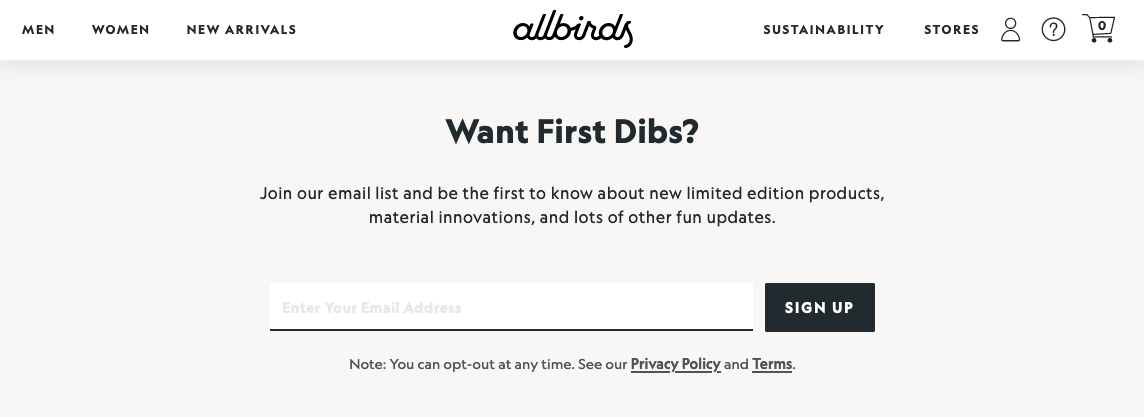
You can build trust just by being upfront about everything from the beginning. You'll find people are more receptive to your CTA pitches when they know precisely what to expect.
Command and wording
Don't be shy about calls to action! Some people soften their language to avoid being pushy, but CTAs should be strong and unapologetic. After all, if you followed rule #1 (incentive), then what you're offering is beneficial to the visitor.
That's not to say you should be rude or demanding (please don't); there's a perfect balance somewhere in there between a strong suggestion and a forceful command. Above all, the reader must always feel they have a choice; your call to action is there to convince them of the choice you think they should make.
Share this post
Join our newsletter
Subscribe for more deals
This makes the statement sound stronger, and at the same time, clearly communicates what the user should do.
Likewise, avoid wording that weakens your call to action, including "please" (no matter what Grammarly tells you) and modifiers like "could" and "would." There's a time and place for gentle language, but calls to action are not one of them.
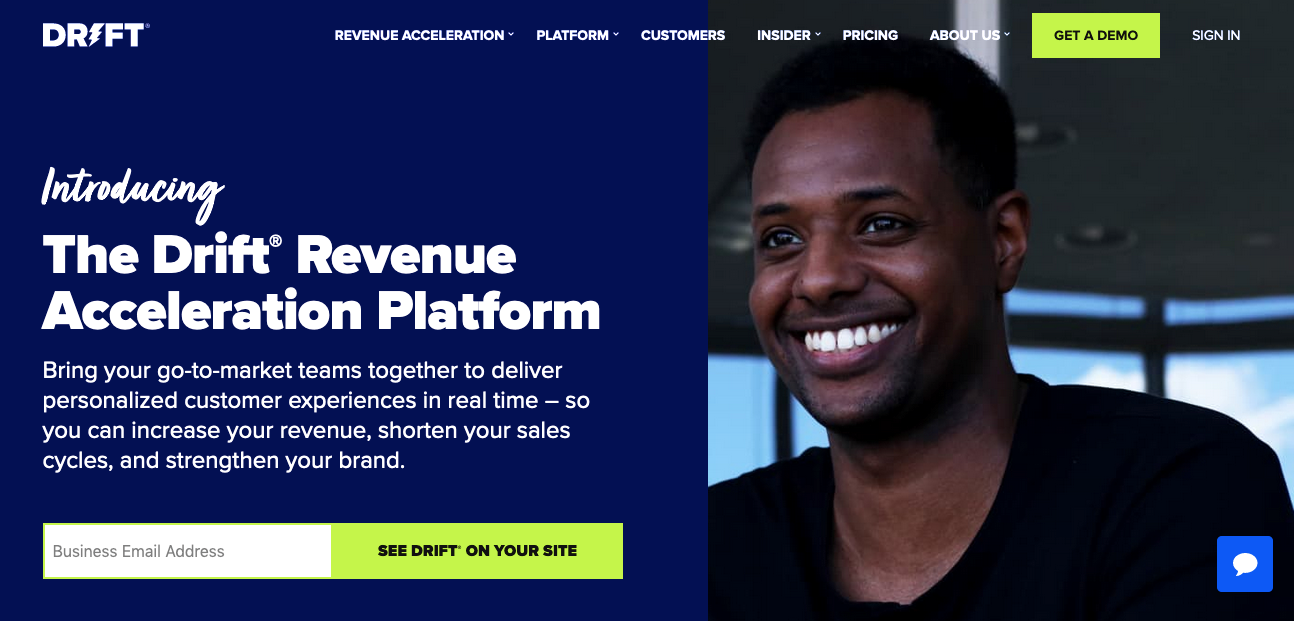
Word choice is important to CTAs, not only for making a persuasive argument, but also for fitting the space allotted.
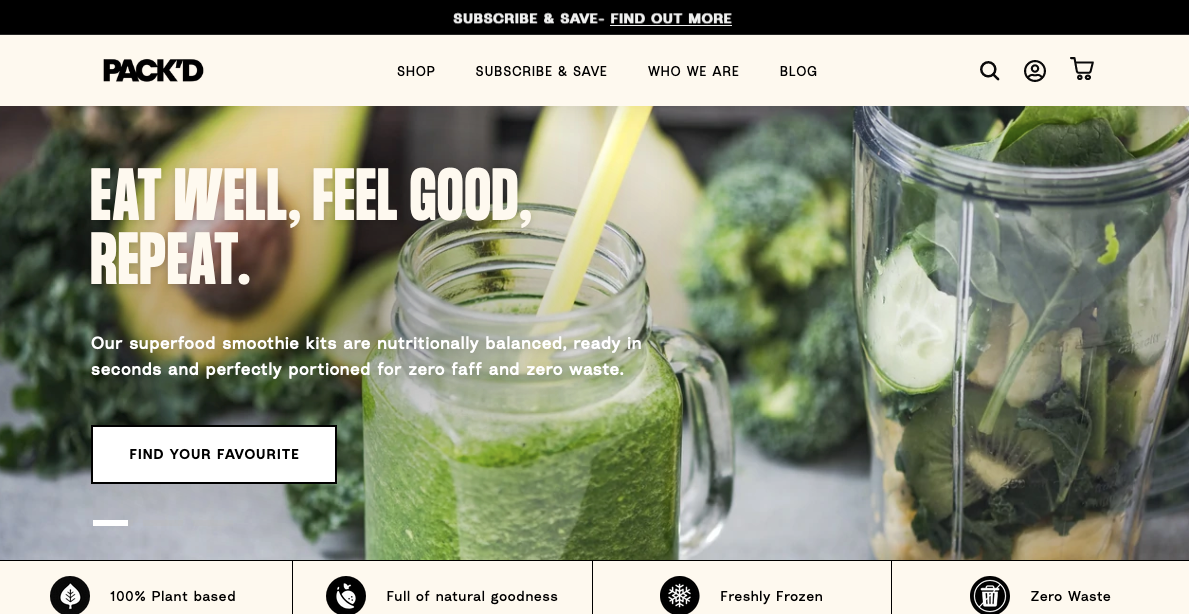
They're not foolproof, but in my experience, these words tend to improve CTA performance and the effectiveness of most sales copy. And because most of them are short, you should have no problem fitting them into your CTA space.
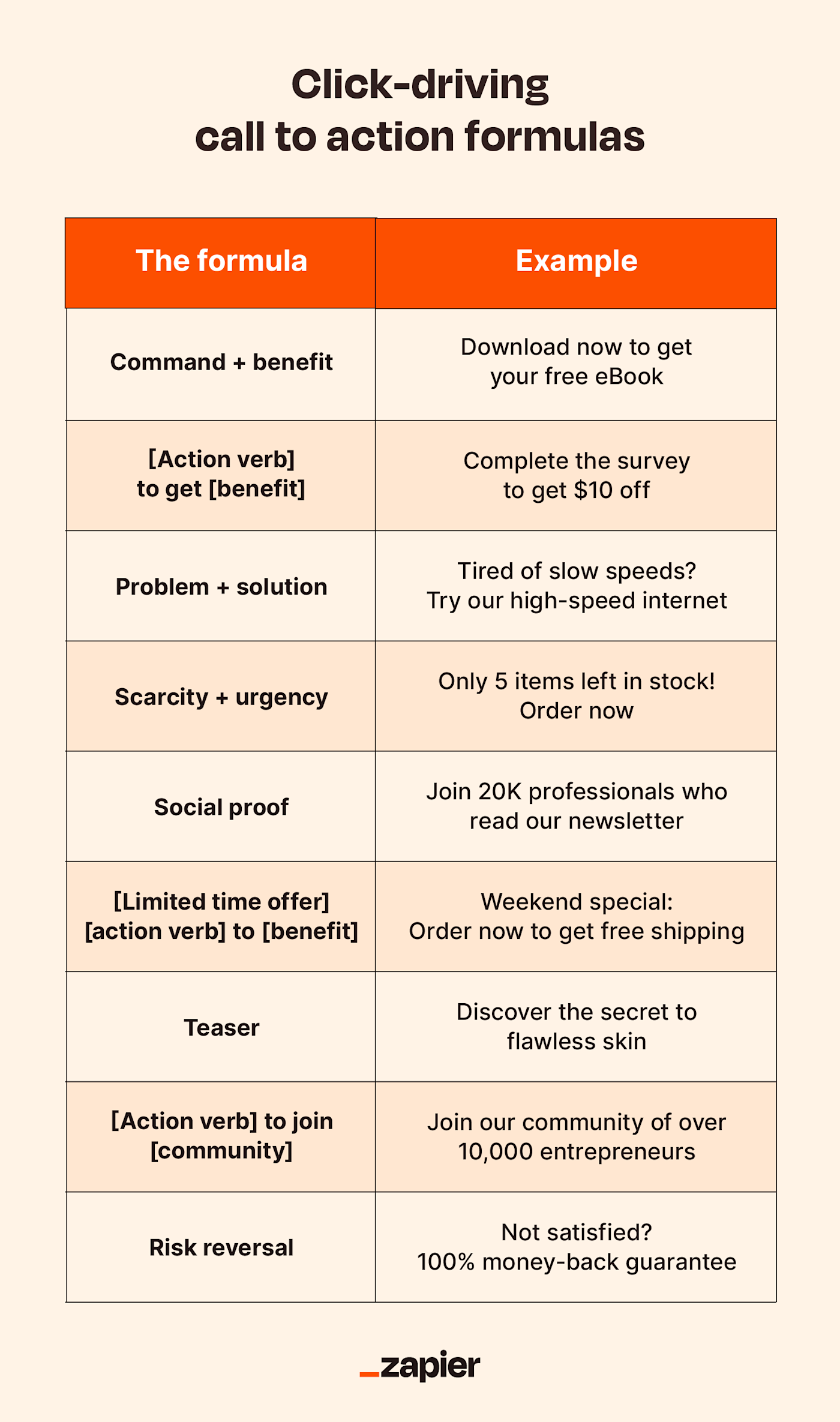
How to design a call to action
Now that we've covered the writing, let's talk about how your CTA should look. The design, layout, and typography of your call to action all play major roles in its success.
CTA design best practices
If you're placing your call to action on a web page or other content you design yourself, you want to place it at the top of your visual hierarchy. Your CTA should be the most noticeable element on the page. To achieve this, you want to pull out all your design tricks:
Contrasting colors: CTAs should generally contrast with the rest of the page's design. Visitors shouldn't have to work to find what to do next. Use a vibrant color for your CTA, especially against a dull background. Can you spot it from six feet away? Good.
Optimal size: Make the button and text larger than the surrounding elements but not so large that it overwhelms other content. It should also be easily clickable, especially on mobile devices.
Clear typography: Use a legible font that complements your brand. Ensure the text is large enough to read but doesn't crowd the button. You can play with typography to emphasize key words. Commonly, operative words like "free" are set in a different color or sometimes even a different font to attract more attention.
Negative space: Surround your call to action with plenty of negative, or empty, space. Setting your CTA apart from the other elements makes it more noticeable and gives it more importance in the eyes of your visitors.
Emoji use: Some brands find success with emojis, but if you choose that approach, remember that a little goes a long way.
Consistent styling: While CTAs should stand out, they should still align with your brand's overall design aesthetic. Consistency in design builds trust.
Call to action testing and iteration
Last but not least, you should evaluate how successful your final call to action is and identify room for improvement. Creating your CTA may feel like a lot of guesswork and shooting in the dark—because it is. Testing it is much more clear cut.
To get a basic idea of your CTA's performance, take a look at your analytics. Compare the page traffic to the number of conversions, and see what percentage of your total visitors clicked.
If your conversion rate is significantly lower, it's worth doing an A/B test on your design and copy. Try two different versions of your call to action, experimenting with different phrasing, colors, or fonts, and see which one performs better with your target audience. It's the most efficient way to reveal what works and what doesn't with concrete, empirical data, ensuring your CTA resonates with the target audience and drives the desired action.
16 call to action examples (and why they work)
Let's dissect some real-life CTA examples to learn how to use strategic copy, design, and placement to transform an ordinary CTA into a magnetic, can't-resist-clicking force.
1. JD + Kate Industries

CTA placement: Exit intent popup
CTA type: Lead to purchase
What it does right: Attention-grabbing, offers a valuable incentive, humorous and lighthearted
The brazen use of "WAIT" isn't a gentle suggestion; it's a command. Like someone grabbing your elbow just as you're about to duck out without a goodbye. It's intrusive, but in a way that makes you think, "Alright, what did I miss?"
Combine that with the sheer audacity of telling someone they've forgotten to buy not just one candle but HUNDREDS of candles. It's dramatic, it's over-the-top, and frankly, it's memorable. With copy like that, it's hard to resist giving away your email address because one can only wonder what their emails would be like.
2. Giftwrap.ai

CTA placement: Display ad
CTA type: Lead generation
What it does right: Engaging, personalized, visually appealing
It's refreshing to see something that doesn't pretend to know you better than you know yourself. Instead of telling you what your significant other might want, it's asking you to fill in the blanks. A little bit of personalization without the personal touch. Clever, really.
As for the CTA button, the emoji is a nice touch. Plus, the use of "show" rather than "buy" or "see" is like a little magic trick. "Voila! Here are your gift options."
3. Who Gives A Crap

CTA placement: Facebook ad
What it does right: Benefit-oriented language makes the CTA more appealing to users and encourages them to take action
By comparing "Us" and "Them," they're not only offering a quantitative argument (385 sheets versus a paltry 299), but they're also injecting a bit of humor. And while I've never been one to count sheets, if you're telling me I get more for my money and it'll look cute next to my collection of HUNDREDS of candles, I'm sold. Also, describing the competitor as "objectively very boring" is a sentiment I've often used to describe my social life, but to see it on toilet paper? Well, that's something.
"28% cheaper than Charmin," followed by a "Shop Now" button isn't just a call to action; it's a call to revolution! A revolution of, well, saving on toilet paper and perhaps bringing a touch of flair to a decidedly unglamorous aspect of life.
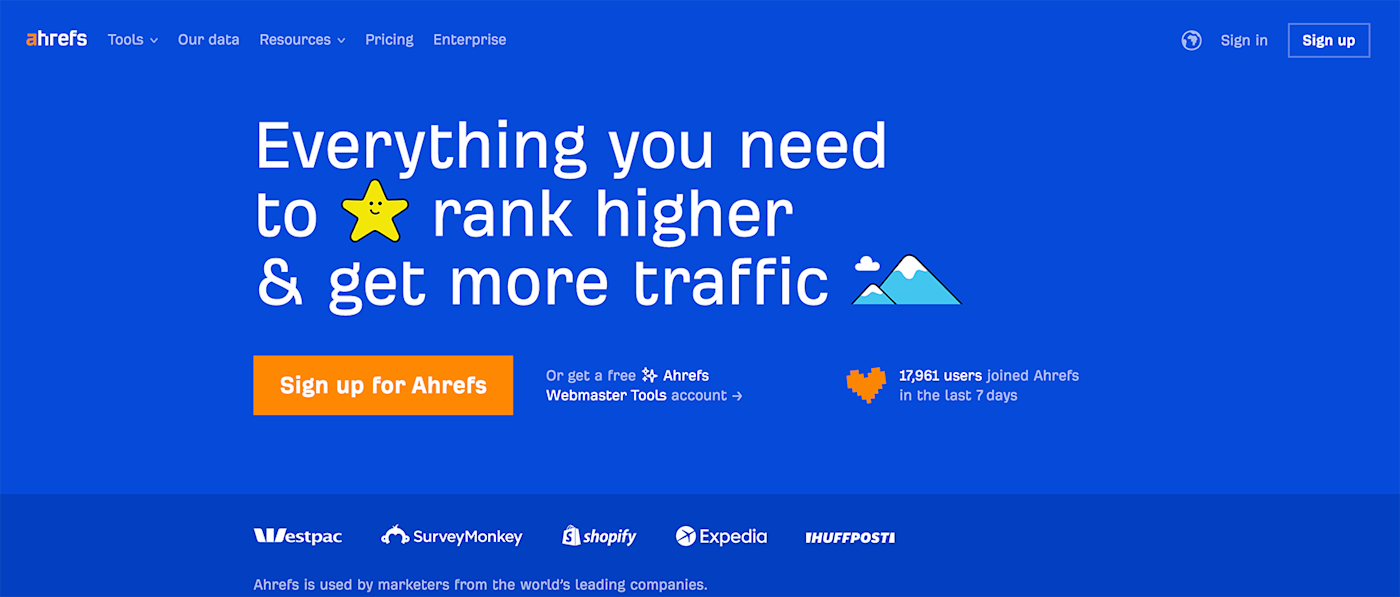
CTA placement: Homepage header
What it does right: Creates curiosity, addresses pain points, social proof
There's something oddly reassuring about a direct, no-nonsense headline promising exactly what every website on this overcrowded internet wants: visibility.
The name-dropping of heavy-hitter customers serves as a strong endorsement. It's not saying, "Look who trusts us," but rather, "Look who you'd be in company with." And that "17,961 users joined Ahrefs in the last 7 days" is a nice touch. It's not boastful, but it's certainly not modest. It's a subtle prod to the undecided that says, "While you're contemplating, thousands have already decided."
This CTA is a perfect blend of self-assuredness, social proof, and just the right amount of peer pressure.
5. Ruggable

CTA placement: eCommerce email
CTA type: Limited-time offer
What it does right: Straightforward, creates a sense of urgency, sparks curiosity
There's something unapologetically direct about this ad. "Final hours to save until next week Black Friday"—it's not asking you, it's telling you. Time's running out, and if you're the type who thrives on the thrill of a last-minute decision, this is your moment.
The CTA is a master class in suspense. That "% OFF" lurking behind the button is like when someone says they've got news, but they'll tell you later—except instead of being left alone with your intrusive thoughts, conjuring up worst-case scenarios, you get a sweet discount on a cute, machine-washable rug.
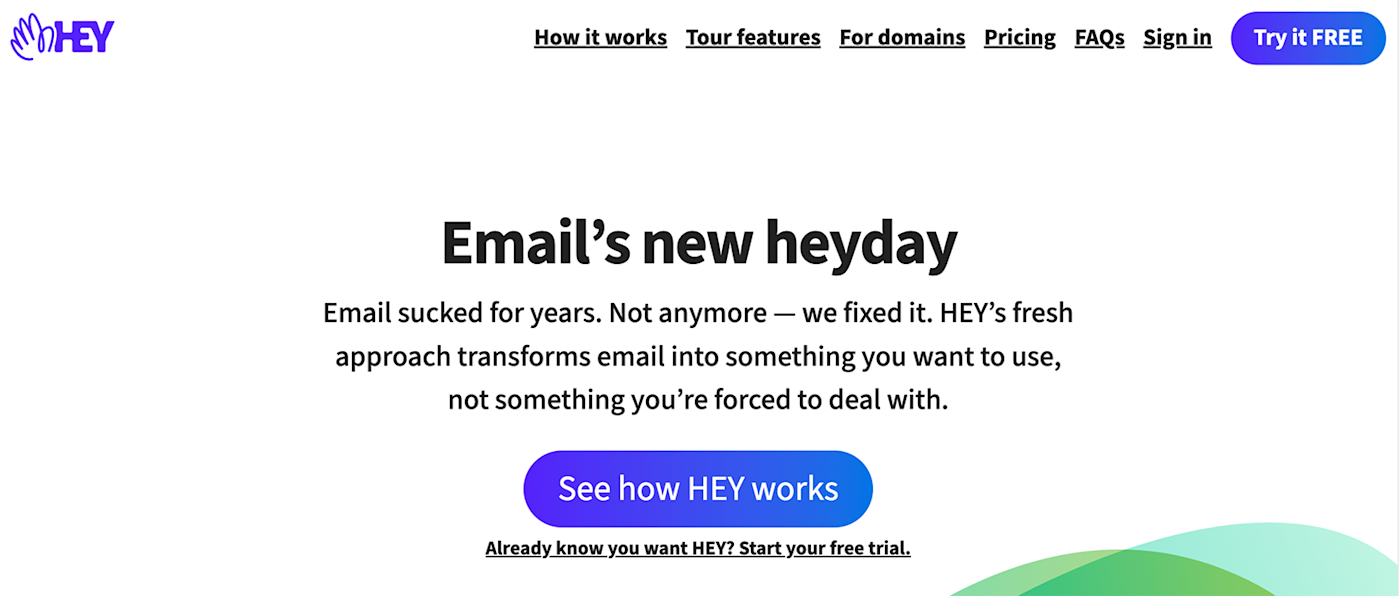
CTA type: Product demo
What it does right: Solution-oriented, benefit-driven, relatable
"Email sucked for years. Not anymore—we fixed it." You mean that thing everyone's been complaining about since the dawn of the internet? It's about time, and I'm all ears.
The rest of the copy succinctly addresses customer pain points and aspirational desires. It paints a picture of a world where checking your email might feel more like reading a postcard from a friend rather than sifting through a pile of bills.
The CTA button, "See how HEY works," is straightforward. No flowery language, no over-the-top promises. Just a simple invitation.
7. Big Blanket Co

What it does right: Creates a sense of urgency, visually appealing, reassuring
The urgency of "limited quantities available...Reserve yours now before it's too late" is classic retail psychology. It's both an announcement and a challenge, like when a kid hears the whistle signaling the end of adult swim and races to be the first one to cannonball into the pool.
The "Limited Restock [Massive 10'x10' Blankets] 100 Night Guarantee + Free Shipping" is the clincher. It promises a combination of rarity, quality, reliability, and convenience, like a call to action Megazord.
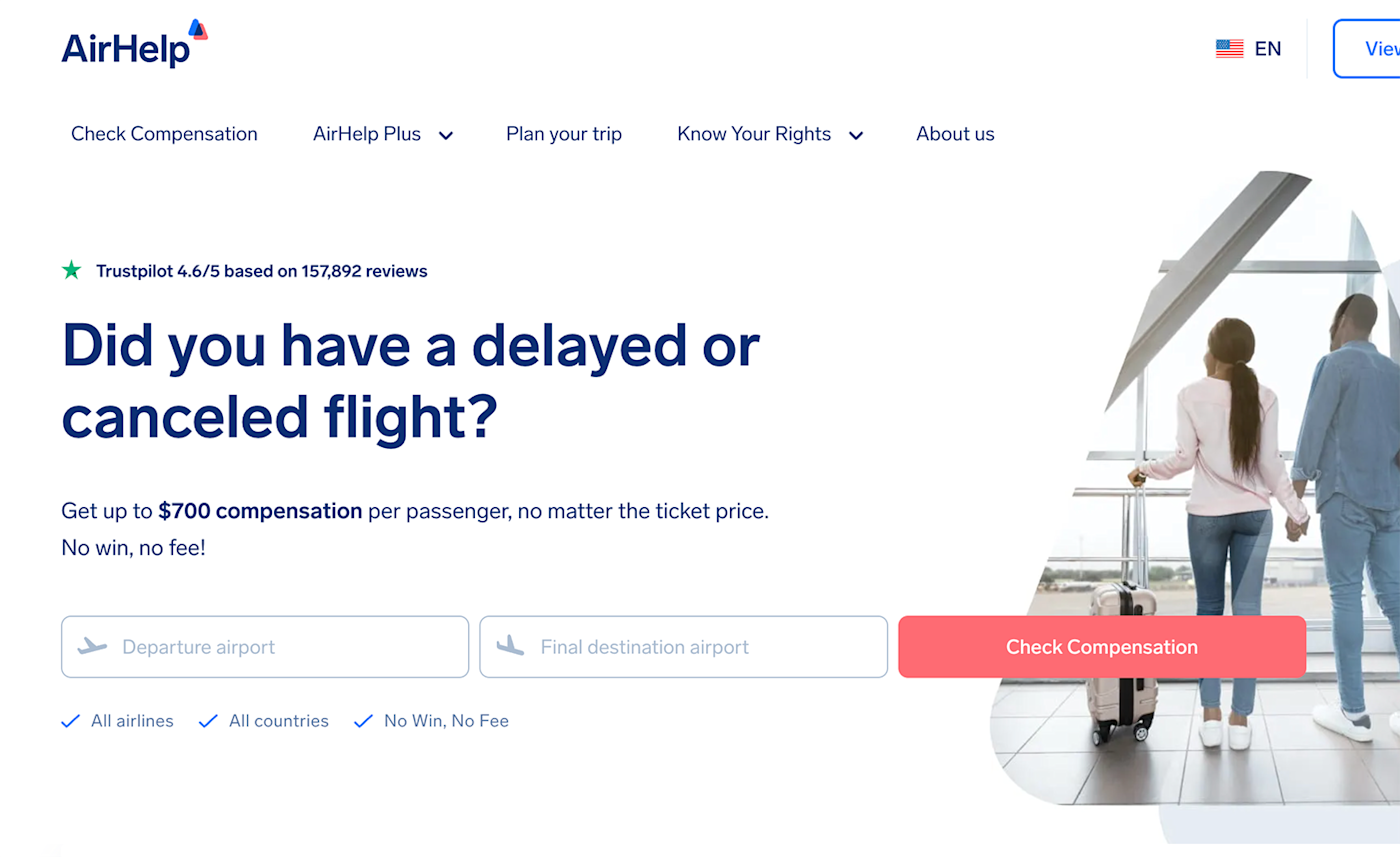
What it does right: Addresses pain points, benefit-oriented, actionable
The genius of this homepage lies not just in its promises but in its initial question—a direct prod at the pain point of its target audience that immediately evokes a visceral response. Most, if not all, travelers will mentally answer "yes" to this, recalling their own airport nightmares. It's a calculated reminder of a situation everyone wants to avoid, making the solution they offer even more enticing.
"Get up to $700 compensation per passenger, no matter the ticket price." The clarity here is commendable. They're not promising the world, but a very tangible, specific amount. And the Trustpilot rating is a nod to credibility. It's like a friend vouching for a restaurant they swear by, but in this case, it's 157,892 friends.
The two fields for the departure and destination airports are a clever touch. It's interactive, pulling me in, like when a quiz promises to tell me which '90s sitcom character I am based on my questionable life choices. (I'm George Costanza.) The button, with its sharp contrast to the rest of the page, effectively captures attention while still aligning with the brand's colors and aesthetic. "Check compensation" offers an inviting, low-effort action, subtly guiding users toward their potential relief without overwhelming them.
In a world where we're constantly sold solutions to problems we didn't know we had, this CTA addresses a very real grievance with a straightforward promise. And in the often convoluted world of travel woes, that's a breath of fresh, cabin-pressurized air.
9. Crazy Egg

What it does right: Actionable, benefit-oriented, simple
Crazy Egg's CTA isn't trying too hard to impress. It's just good—well thought out, concise, and to the point.
First, the headline: "Make your website better. Instantly." A rather bold proclamation but commendably straightforward. Its use of the word "instantly" suggests that Crazy Egg has the answers, and they're not going to waste your time.
The "Show me my Heatmap" CTA button is, once again, admirably direct. It's not pleading for a click or asking for a moment of your time. It's telling you, in no uncertain terms, what's on the other side of that click.
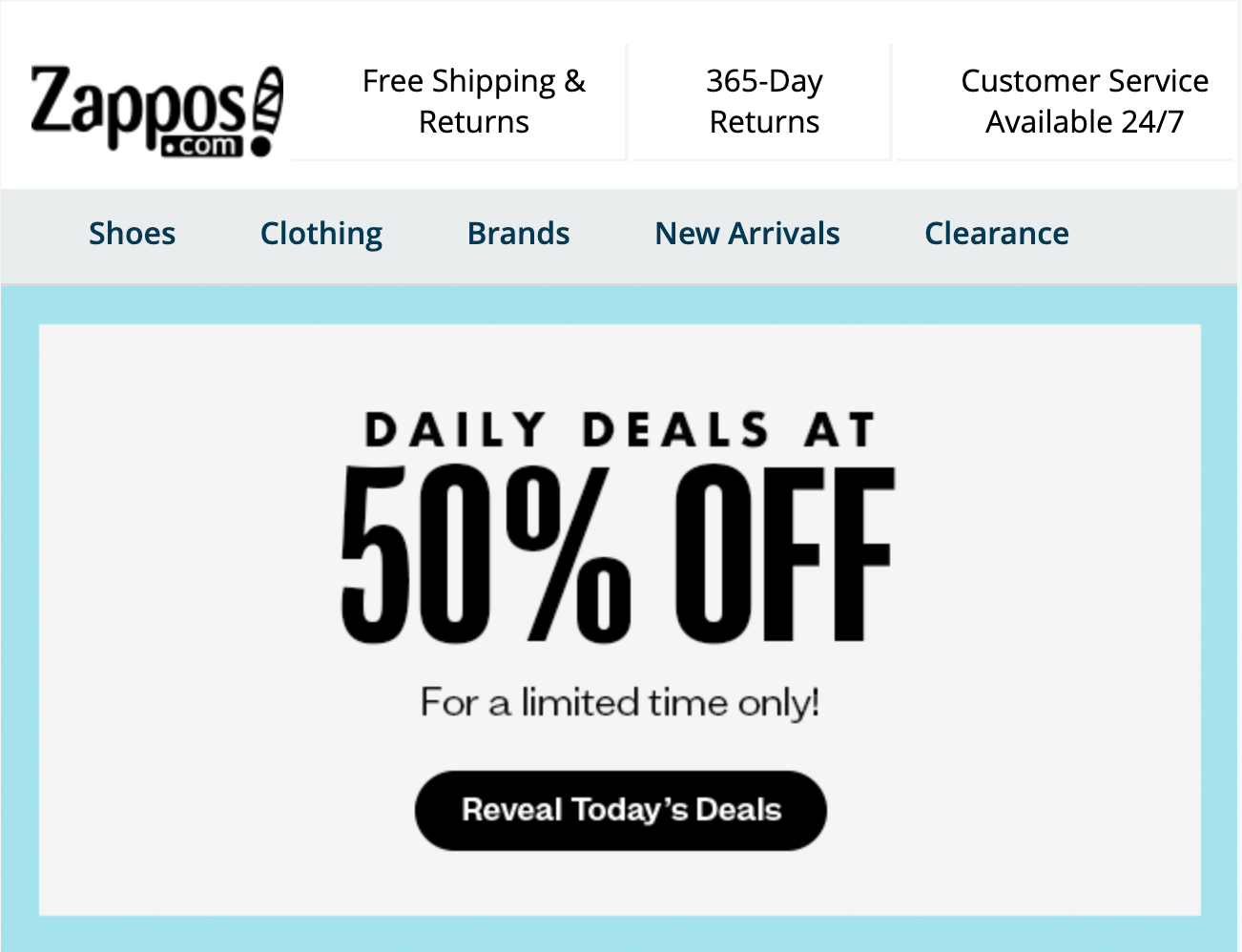
What it does right: Clear and concise, visually appealing, strong call to action verb
First off, big ups to Zappos for not making me do math. Half off? I'm already intrigued and haven't even seen the shoes yet.
"Reveal today's deals" feels like a game show moment. What's behind door number one? A pair of boots? New house slippers? It's that momentary thrill, like unwrapping a gift—even if you end up paying for it yourself.
In an endless sea of emails screaming for attention, this one from Zappos does what it needs to do: it grabs you, shakes you gently by the shoulders, and says, "Hey, want something good for half off?" And in this economy, who can say no?
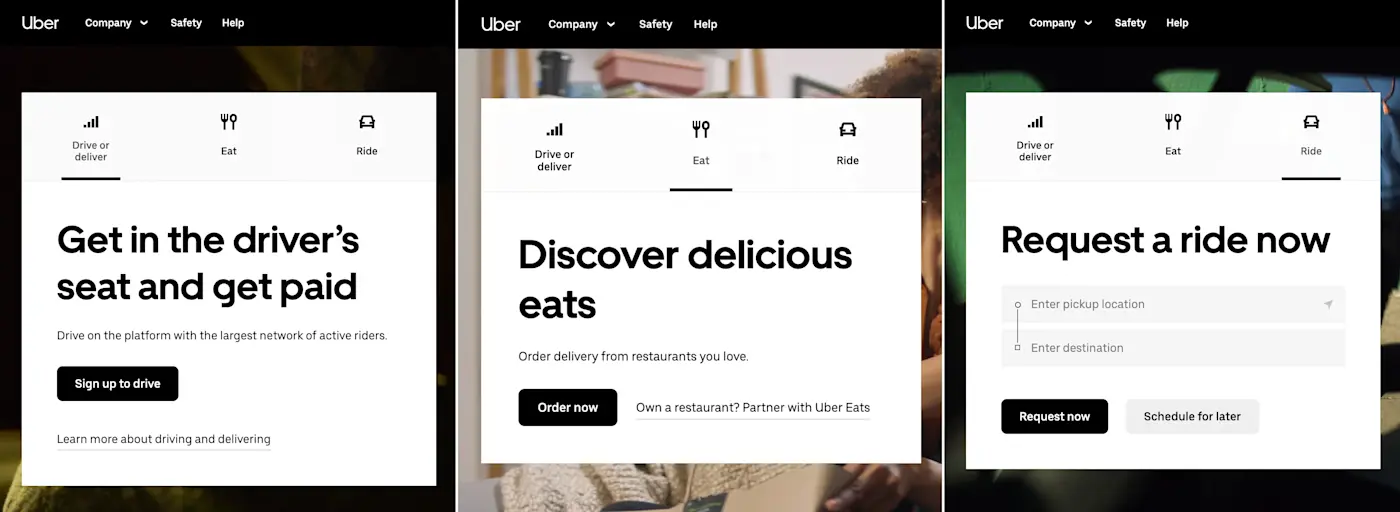
CTA placement: Landing page header
What it does right: Interactive and dynamic, personalized, sparks curiosity
By providing three clear choices (drive or deliver, eat, and ride), Uber shows that they understand and cater to the diverse needs of their users. This personalized approach instantly makes the user feel valued and attended to, whether they need a ride to the airport or just want to stuff their face.
The interactive nature of this dynamic content creates a sense of empowerment and involvement for the user. Even the tens of people unfamiliar with all of Uber's offerings will be intrigued by the distinct options, sparking curiosity and potentially leading them to explore other services beyond their original intention.
12. CareerBuilder
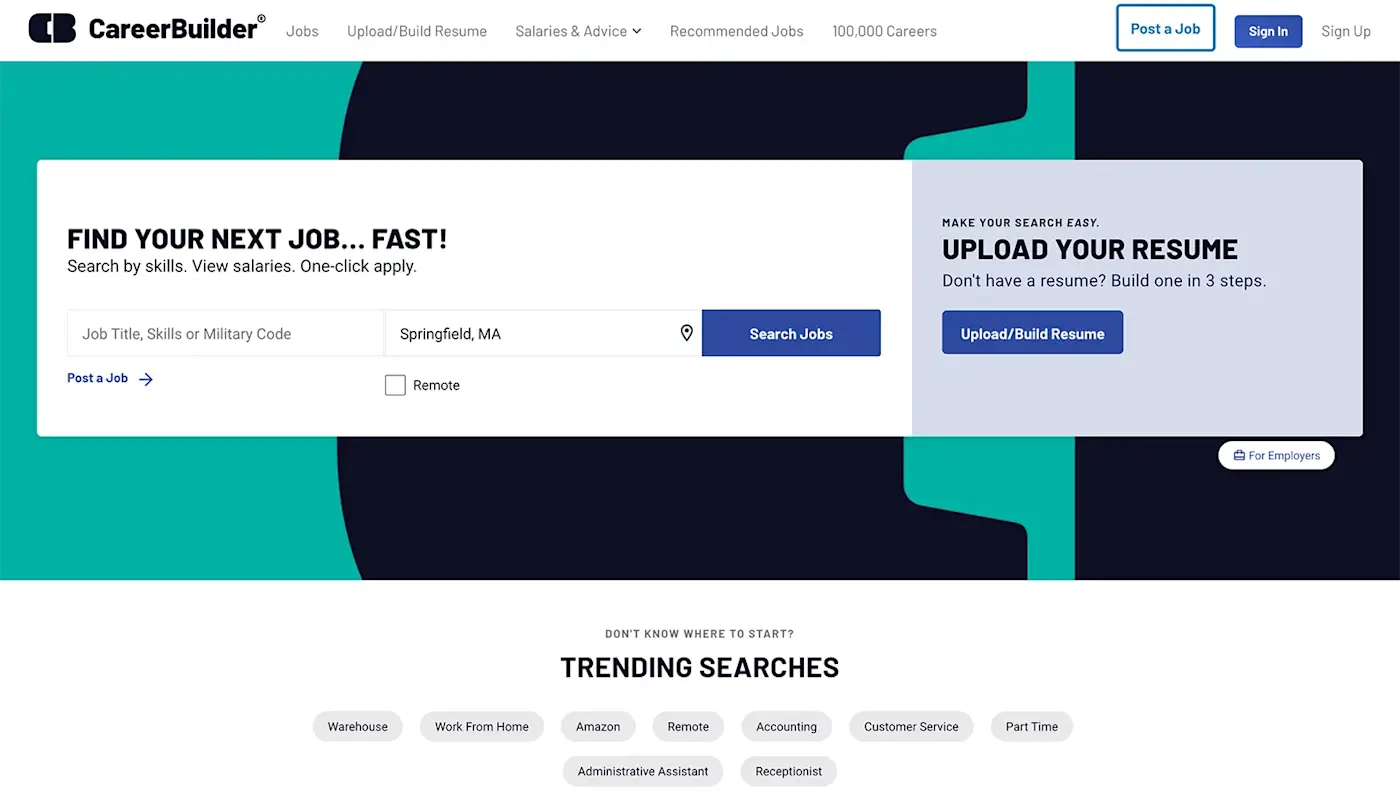
What it does right: Clear and concise, click-worthy secondary CTA
"Find your next job…fast!" Who are you, my dad? Although I suppose if someone's clicking their way onto a job-finding website, they're there for one reason: to snag a job, and preferably one that doesn't make them want to put a campfire out with their face.
CareerBuilder doesn't dilly-dally—they allow you to type in your wildly specific and/or desperate job requirements. And who's going to turn down the resume help offered in the secondary CTA? Talk about a lead magnet.
13. Airtable
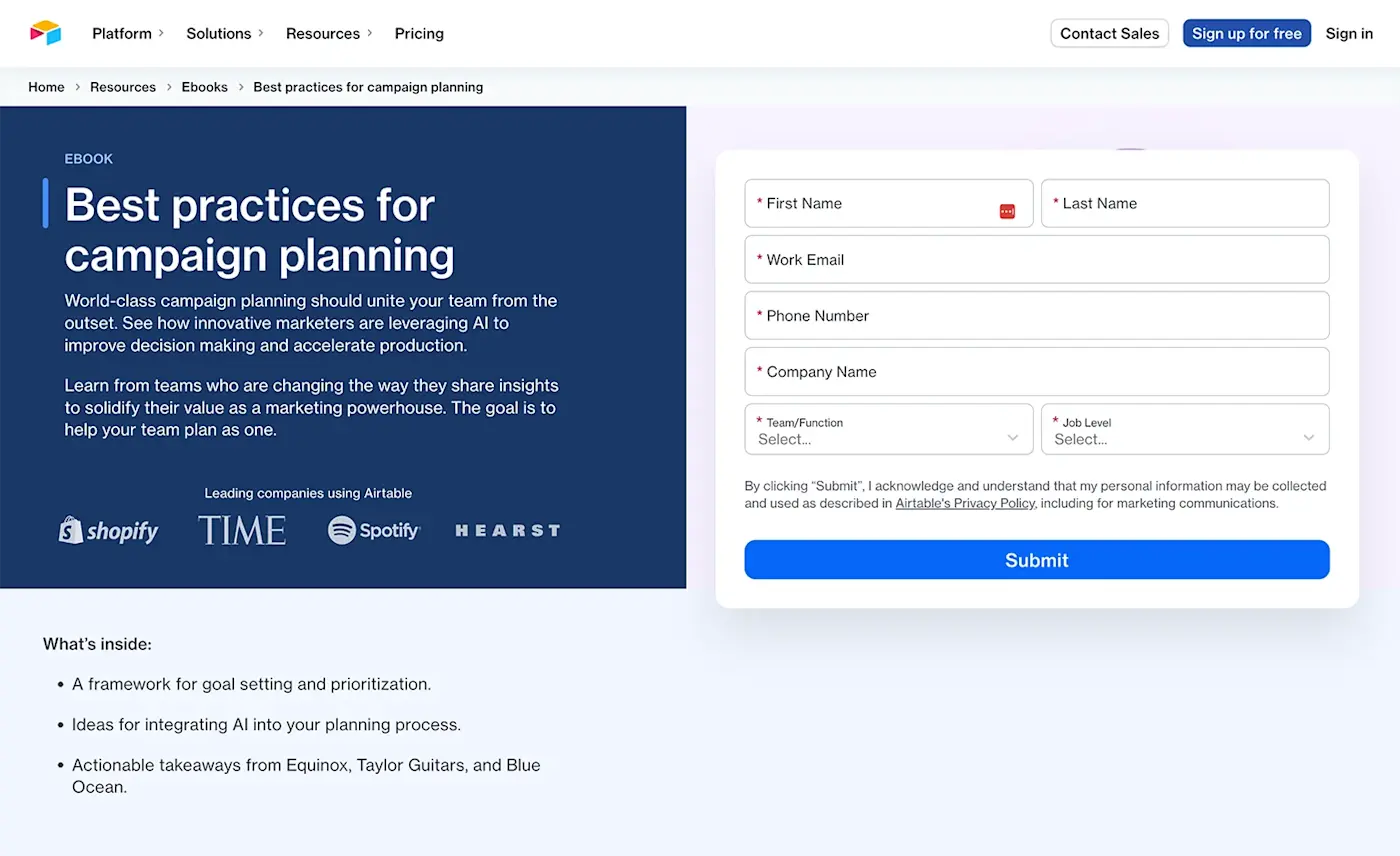
CTA type: Gated content
What it does right: Social proof, sneak preview, clear and concise
You may be wondering why I included a very basic "submit" button in a CTA showcase, but pairing a straightforward button with great supporting elements like the headline, social proof, and sneak preview, is like sipping top-shelf wine from an old jelly jar. Sometimes, the simple stuff just ties everything together.
The large headline is as direct as my comments on whether a hotdog is a sandwich. (It's not.) Aimed at the so-called professionals in campaign planning, it speaks to a certain crowd, much like literally anything speaks to Swifties looking for Taylor's latest Easter egg.
The mention of leading companies like Shopify, Time magazine, Spotify, and Hearst adds credibility and trustworthiness. It's basically saying, "If these giants trust us, maybe you, in your comparatively minuscule existence, should, too."
The bullet list detailing what's inside the eBook provides clarity on the content, letting users know exactly what to expect, including insider tidbits from recognized brands. So, not only do you get smarter, but you also get to casually name-drop at the next girls' night. "I've been implementing campaign planning strategies inspired by Equinox and Taylor Guitars. NBD."
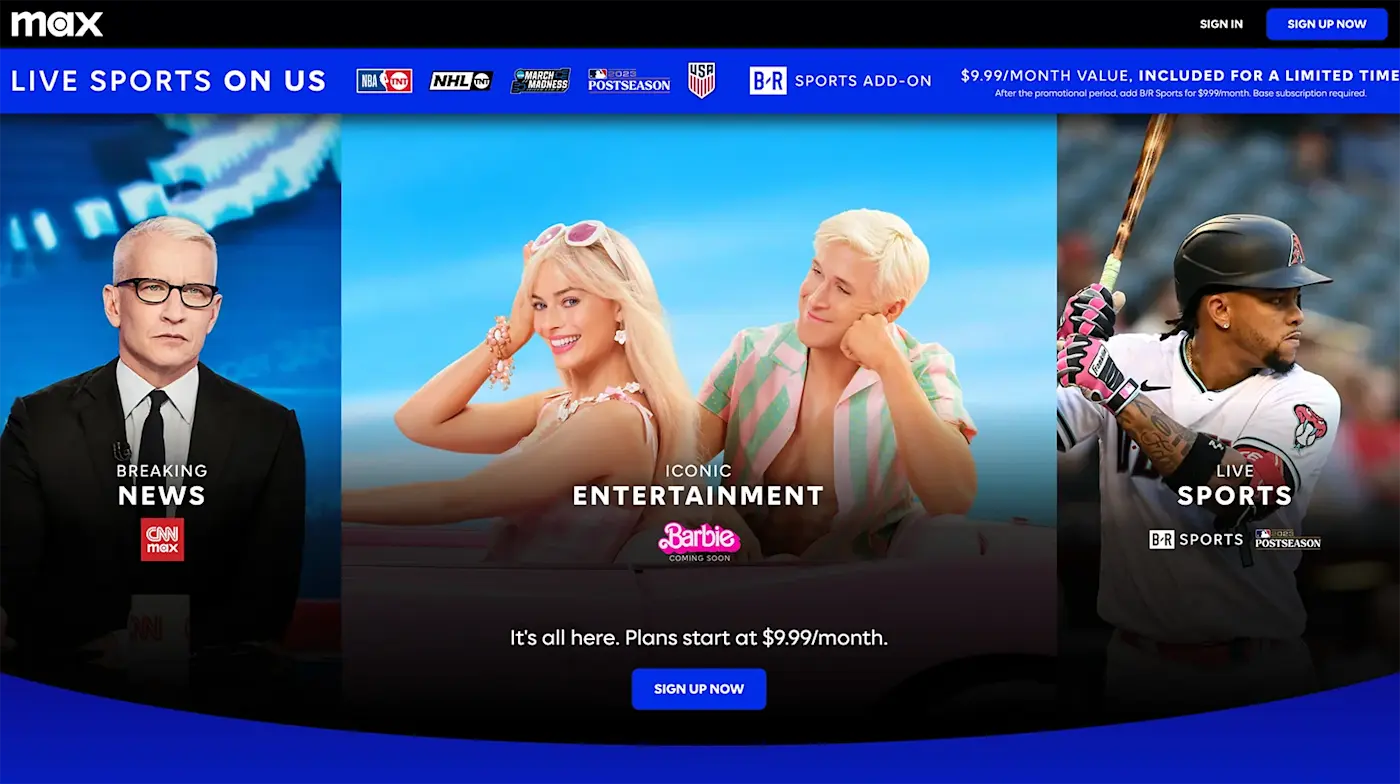
CTA type: Closing the sale
What it does right: Showcases diverse selection, clear and concise, highlights affordability
Max presents an impactful CTA through the Neapolitan ice cream of hero images, featuring Anderson Cooper, Ketel Marte, and Margot Robbie with Ryan Gosling. Collectively, these three flavors depict a panoramic view of Max's offerings, emphasizing a wide variety of choices only rivaled by the Cheesecake Factory menu.
In a world drowning in content, they've managed, quite succinctly, to sum it all up with "It's all here. Plans start at $9.99/month." The ensuing "Sign up now" button invites visitors to subscribe, anchoring the CTA by providing a straightforward pathway to accessing all the consumable content your heart desires.
15. Adobe Stock

CTA placement: Google Search ad
CTA type: Free trial
What it does right: Benefit-oriented, actionable, relevant to the target audience
This paid search ad nails the CTA with a clear and easy-to-understand message. The headline "Free trial - Find the right image faster" immediately grabs attention by offering a low-risk way to experience the service. It also addresses a common pain point for users, highlighting the platform's efficiency.
In very few words, Adobe found a way to combine attention-grabbing language, address user concerns, highlight the platform's strengths, and offer a valuable deal, making for a cleverly crafted CTA. If I were into such things, I might even click on it. But I have people for that.

CTA placement: Email
CTA type: Event promotion
What it does right: Multiple engagement opportunities, attention-grabbing, personalized
Much like the free sample stations at Costco, the strategic placement of three CTA buttons ensures the reader has multiple opportunities to engage, regardless of how far they wander (or scroll).
The header image immediately grabs attention with its vibrant graphic detailing key event highlights. This provides a quick snapshot of what to expect and builds anticipation.
Personalizing the body of the email to address readers by name creates a sense of intimacy. Instantly, they're all ears and feeling special.
Improve your CTAs now, free!
While my dad's approach might have lacked the finesse of a well-designed button or the allure of clever copy, the sentiment was clear. And that's the heart of every good CTA. Whether you're nudging a visitor to make a purchase or nudging your offspring out of the nest, the principle remains the same. CTAs are about engaging your audience, prompting action, and, occasionally, a very pointed reminder to update your LinkedIn profile.
Related reading:
Get productivity tips delivered straight to your inbox
We’ll email you 1-3 times per week—and never share your information.

Allisa Boulette
Based in New England, Allisa is a content marketer and small business owner who hopes to make the internet a more interesting place than she found it. When she’s not working, you can find her lying very still not doing anything.
Related articles

How to build a LinkedIn marketing strategy from scratch
How to build a LinkedIn marketing strategy...

How to build a Discord community for your brand
How to build a Discord community for your...

Google Local Services Ads: What they are and how to use them
Google Local Services Ads: What they are and...

14 content marketing examples to get the creative juices flowing
14 content marketing examples to get the...
Improve your productivity automatically. Use Zapier to get your apps working together.


What is an Argumentative Essay? How to Write It (With Examples)

We define an argumentative essay as a type of essay that presents arguments about both sides of an issue. The purpose is to convince the reader to accept a particular viewpoint or action. In an argumentative essay, the writer takes a stance on a controversial or debatable topic and supports their position with evidence, reasoning, and examples. The essay should also address counterarguments, demonstrating a thorough understanding of the topic.
Table of Contents
What is an argumentative essay .
- Argumentative essay structure
- Argumentative essay outline
- Types of argument claims
How to write an argumentative essay?
- Argumentative essay writing tips
- Good argumentative essay example
How to write a good thesis
- How to Write an Argumentative Essay with Paperpal?
Frequently Asked Questions
An argumentative essay is a type of writing that presents a coherent and logical analysis of a specific topic. 1 The goal is to convince the reader to accept the writer’s point of view or opinion on a particular issue. Here are the key elements of an argumentative essay:
- Thesis Statement : The central claim or argument that the essay aims to prove.
- Introduction : Provides background information and introduces the thesis statement.
- Body Paragraphs : Each paragraph addresses a specific aspect of the argument, presents evidence, and may include counter arguments. Articulate your thesis statement better with Paperpal. Start writing now!
- Evidence : Supports the main argument with relevant facts, examples, statistics, or expert opinions.
- Counterarguments : Anticipates and addresses opposing viewpoints to strengthen the overall argument.
- Conclusion : Summarizes the main points, reinforces the thesis, and may suggest implications or actions.

Argumentative essay structure
Aristotelian, Rogerian, and Toulmin are three distinct approaches to argumentative essay structures, each with its principles and methods. 2 The choice depends on the purpose and nature of the topic. Here’s an overview of each type of argumentative essay format.
| ) | ||
| : Introduce the topic. Provide background information. Present the thesis statement or main argument. | : Introduce the issue. Provide background information. Establish a neutral and respectful tone. | : Introduce the issue. Provide background information. Present the claim or thesis. |
| : Provide context or background information. Set the stage for the argument. | : Describe opposing viewpoints without judgment. Show an understanding of the different perspectives. | : Clearly state the main argument or claim. |
| : Present the main argument with supporting evidence. Use logical reasoning. Address counterarguments and refute them. | : Present your thesis or main argument. Identify areas of common ground between opposing views. | : Provide evidence to support the claim. Include facts, examples, and statistics. |
| : Acknowledge opposing views. Provide counterarguments and evidence against them. | : Present your arguments while acknowledging opposing views. Emphasize shared values or goals. Seek compromise and understanding. | : Explain the reasoning that connects the evidence to the claim. Make the implicit assumptions explicit. |
| : Summarize the main points. Reassert the thesis. End with a strong concluding statement. | : Summarize areas of agreement. Reiterate the importance of finding common ground. End on a positive note. | : Provide additional support for the warrant. Offer further justification for the reasoning. |
| Address potential counterarguments. Provide evidence and reasoning to refute counterclaims. | ||
| Respond to counterarguments and reinforce the original claim. | ||
| Summarize the main points. Reinforce the strength of the argument. |
Have a looming deadline for your argumentative essay? Write 2x faster with Paperpal – Start now!
Argumentative essay outline
An argumentative essay presents a specific claim or argument and supports it with evidence and reasoning. Here’s an outline for an argumentative essay, along with examples for each section: 3
1. Introduction :
- Hook : Start with a compelling statement, question, or anecdote to grab the reader’s attention.
Example: “Did you know that plastic pollution is threatening marine life at an alarming rate?”
- Background information : Provide brief context about the issue.
Example: “Plastic pollution has become a global environmental concern, with millions of tons of plastic waste entering our oceans yearly.”
- Thesis statement : Clearly state your main argument or position.
Example: “We must take immediate action to reduce plastic usage and implement more sustainable alternatives to protect our marine ecosystem.”
2. Body Paragraphs :
- Topic sentence : Introduce the main idea of each paragraph.
Example: “The first step towards addressing the plastic pollution crisis is reducing single-use plastic consumption.”
- Evidence/Support : Provide evidence, facts, statistics, or examples that support your argument.
Example: “Research shows that plastic straws alone contribute to millions of tons of plastic waste annually, and many marine animals suffer from ingestion or entanglement.”
- Counterargument/Refutation : Acknowledge and refute opposing viewpoints.
Example: “Some argue that banning plastic straws is inconvenient for consumers, but the long-term environmental benefits far outweigh the temporary inconvenience.”
- Transition : Connect each paragraph to the next.
Example: “Having addressed the issue of single-use plastics, the focus must now shift to promoting sustainable alternatives.”
3. Counterargument Paragraph :
- Acknowledgement of opposing views : Recognize alternative perspectives on the issue.
Example: “While some may argue that individual actions cannot significantly impact global plastic pollution, the cumulative effect of collective efforts must be considered.”
- Counterargument and rebuttal : Present and refute the main counterargument.
Example: “However, individual actions, when multiplied across millions of people, can substantially reduce plastic waste. Small changes in behavior, such as using reusable bags and containers, can have a significant positive impact.”
4. Conclusion :
- Restatement of thesis : Summarize your main argument.
Example: “In conclusion, adopting sustainable practices and reducing single-use plastic is crucial for preserving our oceans and marine life.”
- Call to action : Encourage the reader to take specific steps or consider the argument’s implications.
Example: “It is our responsibility to make environmentally conscious choices and advocate for policies that prioritize the health of our planet. By collectively embracing sustainable alternatives, we can contribute to a cleaner and healthier future.”

Types of argument claims
A claim is a statement or proposition a writer puts forward with evidence to persuade the reader. 4 Here are some common types of argument claims, along with examples:
- Fact Claims : These claims assert that something is true or false and can often be verified through evidence. Example: “Water boils at 100°C at sea level.”
- Value Claims : Value claims express judgments about the worth or morality of something, often based on personal beliefs or societal values. Example: “Organic farming is more ethical than conventional farming.”
- Policy Claims : Policy claims propose a course of action or argue for a specific policy, law, or regulation change. Example: “Schools should adopt a year-round education system to improve student learning outcomes.”
- Cause and Effect Claims : These claims argue that one event or condition leads to another, establishing a cause-and-effect relationship. Example: “Excessive use of social media is a leading cause of increased feelings of loneliness among young adults.”
- Definition Claims : Definition claims assert the meaning or classification of a concept or term. Example: “Artificial intelligence can be defined as machines exhibiting human-like cognitive functions.”
- Comparative Claims : Comparative claims assert that one thing is better or worse than another in certain respects. Example: “Online education is more cost-effective than traditional classroom learning.”
- Evaluation Claims : Evaluation claims assess the quality, significance, or effectiveness of something based on specific criteria. Example: “The new healthcare policy is more effective in providing affordable healthcare to all citizens.”
Understanding these argument claims can help writers construct more persuasive and well-supported arguments tailored to the specific nature of the claim.
If you’re wondering how to start an argumentative essay, here’s a step-by-step guide to help you with the argumentative essay format and writing process.
- Choose a Topic: Select a topic that you are passionate about or interested in. Ensure that the topic is debatable and has two or more sides.
- Define Your Position: Clearly state your stance on the issue. Consider opposing viewpoints and be ready to counter them.
- Conduct Research: Gather relevant information from credible sources, such as books, articles, and academic journals. Take notes on key points and supporting evidence.
- Create a Thesis Statement: Develop a concise and clear thesis statement that outlines your main argument. Convey your position on the issue and provide a roadmap for the essay.
- Outline Your Argumentative Essay: Organize your ideas logically by creating an outline. Include an introduction, body paragraphs, and a conclusion. Each body paragraph should focus on a single point that supports your thesis.
- Write the Introduction: Start with a hook to grab the reader’s attention (a quote, a question, a surprising fact). Provide background information on the topic. Present your thesis statement at the end of the introduction.
- Develop Body Paragraphs: Begin each paragraph with a clear topic sentence that relates to the thesis. Support your points with evidence and examples. Address counterarguments and refute them to strengthen your position. Ensure smooth transitions between paragraphs.
- Address Counterarguments: Acknowledge and respond to opposing viewpoints. Anticipate objections and provide evidence to counter them.
- Write the Conclusion: Summarize the main points of your argumentative essay. Reinforce the significance of your argument. End with a call to action, a prediction, or a thought-provoking statement.
- Revise, Edit, and Share: Review your essay for clarity, coherence, and consistency. Check for grammatical and spelling errors. Share your essay with peers, friends, or instructors for constructive feedback.
- Finalize Your Argumentative Essay: Make final edits based on feedback received. Ensure that your essay follows the required formatting and citation style.
Struggling to start your argumentative essay? Paperpal can help – try now!
Argumentative essay writing tips
Here are eight strategies to craft a compelling argumentative essay:
- Choose a Clear and Controversial Topic : Select a topic that sparks debate and has opposing viewpoints. A clear and controversial issue provides a solid foundation for a strong argument.
- Conduct Thorough Research : Gather relevant information from reputable sources to support your argument. Use a variety of sources, such as academic journals, books, reputable websites, and expert opinions, to strengthen your position.
- Create a Strong Thesis Statement : Clearly articulate your main argument in a concise thesis statement. Your thesis should convey your stance on the issue and provide a roadmap for the reader to follow your argument.
- Develop a Logical Structure : Organize your essay with a clear introduction, body paragraphs, and conclusion. Each paragraph should focus on a specific point of evidence that contributes to your overall argument. Ensure a logical flow from one point to the next.
- Provide Strong Evidence : Support your claims with solid evidence. Use facts, statistics, examples, and expert opinions to support your arguments. Be sure to cite your sources appropriately to maintain credibility.
- Address Counterarguments : Acknowledge opposing viewpoints and counterarguments. Addressing and refuting alternative perspectives strengthens your essay and demonstrates a thorough understanding of the issue. Be mindful of maintaining a respectful tone even when discussing opposing views.
- Use Persuasive Language : Employ persuasive language to make your points effectively. Avoid emotional appeals without supporting evidence and strive for a respectful and professional tone.
- Craft a Compelling Conclusion : Summarize your main points, restate your thesis, and leave a lasting impression in your conclusion. Encourage readers to consider the implications of your argument and potentially take action.

Good argumentative essay example
Let’s consider a sample of argumentative essay on how social media enhances connectivity:
In the digital age, social media has emerged as a powerful tool that transcends geographical boundaries, connecting individuals from diverse backgrounds and providing a platform for an array of voices to be heard. While critics argue that social media fosters division and amplifies negativity, it is essential to recognize the positive aspects of this digital revolution and how it enhances connectivity by providing a platform for diverse voices to flourish. One of the primary benefits of social media is its ability to facilitate instant communication and connection across the globe. Platforms such as Facebook, Twitter, and Instagram break down geographical barriers, enabling people to establish and maintain relationships regardless of physical location and fostering a sense of global community. Furthermore, social media has transformed how people stay connected with friends and family. Whether separated by miles or time zones, social media ensures that relationships remain dynamic and relevant, contributing to a more interconnected world. Moreover, social media has played a pivotal role in giving voice to social justice movements and marginalized communities. Movements such as #BlackLivesMatter, #MeToo, and #ClimateStrike have gained momentum through social media, allowing individuals to share their stories and advocate for change on a global scale. This digital activism can shape public opinion and hold institutions accountable. Social media platforms provide a dynamic space for open dialogue and discourse. Users can engage in discussions, share information, and challenge each other’s perspectives, fostering a culture of critical thinking. This open exchange of ideas contributes to a more informed and enlightened society where individuals can broaden their horizons and develop a nuanced understanding of complex issues. While criticisms of social media abound, it is crucial to recognize its positive impact on connectivity and the amplification of diverse voices. Social media transcends physical and cultural barriers, connecting people across the globe and providing a platform for marginalized voices to be heard. By fostering open dialogue and facilitating the exchange of ideas, social media contributes to a more interconnected and empowered society. Embracing the positive aspects of social media allows us to harness its potential for positive change and collective growth.
- Clearly Define Your Thesis Statement: Your thesis statement is the core of your argumentative essay. Clearly articulate your main argument or position on the issue. Avoid vague or general statements.
- Provide Strong Supporting Evidence: Back up your thesis with solid evidence from reliable sources and examples. This can include facts, statistics, expert opinions, anecdotes, or real-life examples. Make sure your evidence is relevant to your argument, as it impacts the overall persuasiveness of your thesis.
- Anticipate Counterarguments and Address Them: Acknowledge and address opposing viewpoints to strengthen credibility. This also shows that you engage critically with the topic rather than presenting a one-sided argument.
How to Write an Argumentative Essay with Paperpal?
Writing a winning argumentative essay not only showcases your ability to critically analyze a topic but also demonstrates your skill in persuasively presenting your stance backed by evidence. Achieving this level of writing excellence can be time-consuming. This is where Paperpal, your AI academic writing assistant, steps in to revolutionize the way you approach argumentative essays. Here’s a step-by-step guide on how to use Paperpal to write your essay:
- Sign Up or Log In: Begin by creating an account or logging into paperpal.com .
- Navigate to Paperpal Copilot: Once logged in, proceed to the Templates section from the side navigation bar.
- Generate an essay outline: Under Templates, click on the ‘Outline’ tab and choose ‘Essay’ from the options and provide your topic to generate an outline.
- Develop your essay: Use this structured outline as a guide to flesh out your essay. If you encounter any roadblocks, click on Brainstorm and get subject-specific assistance, ensuring you stay on track.
- Refine your writing: To elevate the academic tone of your essay, select a paragraph and use the ‘Make Academic’ feature under the ‘Rewrite’ tab, ensuring your argumentative essay resonates with an academic audience.
- Final Touches: Make your argumentative essay submission ready with Paperpal’s language, grammar, consistency and plagiarism checks, and improve your chances of acceptance.
Paperpal not only simplifies the essay writing process but also ensures your argumentative essay is persuasive, well-structured, and academically rigorous. Sign up today and transform how you write argumentative essays.
The length of an argumentative essay can vary, but it typically falls within the range of 1,000 to 2,500 words. However, the specific requirements may depend on the guidelines provided.
You might write an argumentative essay when: 1. You want to convince others of the validity of your position. 2. There is a controversial or debatable issue that requires discussion. 3. You need to present evidence and logical reasoning to support your claims. 4. You want to explore and critically analyze different perspectives on a topic.
Argumentative Essay: Purpose : An argumentative essay aims to persuade the reader to accept or agree with a specific point of view or argument. Structure : It follows a clear structure with an introduction, thesis statement, body paragraphs presenting arguments and evidence, counterarguments and refutations, and a conclusion. Tone : The tone is formal and relies on logical reasoning, evidence, and critical analysis. Narrative/Descriptive Essay: Purpose : These aim to tell a story or describe an experience, while a descriptive essay focuses on creating a vivid picture of a person, place, or thing. Structure : They may have a more flexible structure. They often include an engaging introduction, a well-developed body that builds the story or description, and a conclusion. Tone : The tone is more personal and expressive to evoke emotions or provide sensory details.
- Gladd, J. (2020). Tips for Writing Academic Persuasive Essays. Write What Matters .
- Nimehchisalem, V. (2018). Pyramid of argumentation: Towards an integrated model for teaching and assessing ESL writing. Language & Communication , 5 (2), 185-200.
- Press, B. (2022). Argumentative Essays: A Step-by-Step Guide . Broadview Press.
- Rieke, R. D., Sillars, M. O., & Peterson, T. R. (2005). Argumentation and critical decision making . Pearson/Allyn & Bacon.
Paperpal is a comprehensive AI writing toolkit that helps students and researchers achieve 2x the writing in half the time. It leverages 21+ years of STM experience and insights from millions of research articles to provide in-depth academic writing, language editing, and submission readiness support to help you write better, faster.
Get accurate academic translations, rewriting support, grammar checks, vocabulary suggestions, and generative AI assistance that delivers human precision at machine speed. Try for free or upgrade to Paperpal Prime starting at US$19 a month to access premium features, including consistency, plagiarism, and 30+ submission readiness checks to help you succeed.
Experience the future of academic writing – Sign up to Paperpal and start writing for free!
Related Reads:
- Empirical Research: A Comprehensive Guide for Academics
- How to Write a Scientific Paper in 10 Steps
- What is a Literature Review? How to Write It (with Examples)
- What is a Narrative Essay? How to Write It (with Examples)
Make Your Research Paper Error-Free with Paperpal’s Online Spell Checker
The do’s & don’ts of using generative ai tools ethically in academia, you may also like, how to write a research proposal: (with examples..., apa format: basic guide for researchers, how to choose a dissertation topic, how to write a phd research proposal, how to write an academic paragraph (step-by-step guide), maintaining academic integrity with paperpal’s generative ai writing..., research funding basics: what should a grant proposal..., how to write an abstract in research papers..., how to write dissertation acknowledgements, how to structure an essay.

8 Effective Strategies to Write Argumentative Essays
In a bustling university town, there lived a student named Alex. Popular for creativity and wit, one challenge seemed insurmountable for Alex– the dreaded argumentative essay!
One gloomy afternoon, as the rain tapped against the window pane, Alex sat at his cluttered desk, staring at a blank document on the computer screen. The assignment loomed large: a 350-600-word argumentative essay on a topic of their choice . With a sigh, he decided to seek help of mentor, Professor Mitchell, who was known for his passion for writing.
Entering Professor Mitchell’s office was like stepping into a treasure of knowledge. Bookshelves lined every wall, faint aroma of old manuscripts in the air and sticky notes over the wall. Alex took a deep breath and knocked on his door.
“Ah, Alex,” Professor Mitchell greeted with a warm smile. “What brings you here today?”
Alex confessed his struggles with the argumentative essay. After hearing his concerns, Professor Mitchell said, “Ah, the argumentative essay! Don’t worry, Let’s take a look at it together.” As he guided Alex to the corner shelf, Alex asked,
Table of Contents
“What is an Argumentative Essay?”
The professor replied, “An argumentative essay is a type of academic writing that presents a clear argument or a firm position on a contentious issue. Unlike other forms of essays, such as descriptive or narrative essays, these essays require you to take a stance, present evidence, and convince your audience of the validity of your viewpoint with supporting evidence. A well-crafted argumentative essay relies on concrete facts and supporting evidence rather than merely expressing the author’s personal opinions . Furthermore, these essays demand comprehensive research on the chosen topic and typically follows a structured format consisting of three primary sections: an introductory paragraph, three body paragraphs, and a concluding paragraph.”
He continued, “Argumentative essays are written in a wide range of subject areas, reflecting their applicability across disciplines. They are written in different subject areas like literature and philosophy, history, science and technology, political science, psychology, economics and so on.
Alex asked,
“When is an Argumentative Essay Written?”
The professor answered, “Argumentative essays are often assigned in academic settings, but they can also be written for various other purposes, such as editorials, opinion pieces, or blog posts. Some situations to write argumentative essays include:
1. Academic assignments
In school or college, teachers may assign argumentative essays as part of coursework. It help students to develop critical thinking and persuasive writing skills .
2. Debates and discussions
Argumentative essays can serve as the basis for debates or discussions in academic or competitive settings. Moreover, they provide a structured way to present and defend your viewpoint.
3. Opinion pieces
Newspapers, magazines, and online publications often feature opinion pieces that present an argument on a current issue or topic to influence public opinion.
4. Policy proposals
In government and policy-related fields, argumentative essays are used to propose and defend specific policy changes or solutions to societal problems.
5. Persuasive speeches
Before delivering a persuasive speech, it’s common to prepare an argumentative essay as a foundation for your presentation.
Regardless of the context, an argumentative essay should present a clear thesis statement , provide evidence and reasoning to support your position, address counterarguments, and conclude with a compelling summary of your main points. The goal is to persuade readers or listeners to accept your viewpoint or at least consider it seriously.”
Handing over a book, the professor continued, “Take a look on the elements or structure of an argumentative essay.”
Elements of an Argumentative Essay
An argumentative essay comprises five essential components:
Claim in argumentative writing is the central argument or viewpoint that the writer aims to establish and defend throughout the essay. A claim must assert your position on an issue and must be arguable. It can guide the entire argument.
2. Evidence
Evidence must consist of factual information, data, examples, or expert opinions that support the claim. Also, it lends credibility by strengthening the writer’s position.
3. Counterarguments
Presenting a counterclaim demonstrates fairness and awareness of alternative perspectives.
4. Rebuttal
After presenting the counterclaim, the writer refutes it by offering counterarguments or providing evidence that weakens the opposing viewpoint. It shows that the writer has considered multiple perspectives and is prepared to defend their position.
The format of an argumentative essay typically follows the structure to ensure clarity and effectiveness in presenting an argument.
How to Write An Argumentative Essay
Here’s a step-by-step guide on how to write an argumentative essay:
1. Introduction
- Begin with a compelling sentence or question to grab the reader’s attention.
- Provide context for the issue, including relevant facts, statistics, or historical background.
- Provide a concise thesis statement to present your position on the topic.
2. Body Paragraphs (usually three or more)
- Start each paragraph with a clear and focused topic sentence that relates to your thesis statement.
- Furthermore, provide evidence and explain the facts, statistics, examples, expert opinions, and quotations from credible sources that supports your thesis.
- Use transition sentences to smoothly move from one point to the next.
3. Counterargument and Rebuttal
- Acknowledge opposing viewpoints or potential objections to your argument.
- Also, address these counterarguments with evidence and explain why they do not weaken your position.
4. Conclusion
- Restate your thesis statement and summarize the key points you’ve made in the body of the essay.
- Leave the reader with a final thought, call to action, or broader implication related to the topic.
5. Citations and References
- Properly cite all the sources you use in your essay using a consistent citation style.
- Also, include a bibliography or works cited at the end of your essay.
6. Formatting and Style
- Follow any specific formatting guidelines provided by your instructor or institution.
- Use a professional and academic tone in your writing and edit your essay to avoid content, spelling and grammar mistakes .
Remember that the specific requirements for formatting an argumentative essay may vary depending on your instructor’s guidelines or the citation style you’re using (e.g., APA, MLA, Chicago). Always check the assignment instructions or style guide for any additional requirements or variations in formatting.
Did you understand what Prof. Mitchell explained Alex? Check it now!
Fill the Details to Check Your Score

Prof. Mitchell continued, “An argumentative essay can adopt various approaches when dealing with opposing perspectives. It may offer a balanced presentation of both sides, providing equal weight to each, or it may advocate more strongly for one side while still acknowledging the existence of opposing views.” As Alex listened carefully to the Professor’s thoughts, his eyes fell on a page with examples of argumentative essay.
Example of an Argumentative Essay
Alex picked the book and read the example. It helped him to understand the concept. Furthermore, he could now connect better to the elements and steps of the essay which Prof. Mitchell had mentioned earlier. Aren’t you keen to know how an argumentative essay should be like? Here is an example of a well-crafted argumentative essay , which was read by Alex. After Alex finished reading the example, the professor turned the page and continued, “Check this page to know the importance of writing an argumentative essay in developing skills of an individual.”
Importance of an Argumentative Essay

After understanding the benefits, Alex was convinced by the ability of the argumentative essays in advocating one’s beliefs and favor the author’s position. Alex asked,
“How are argumentative essays different from the other types?”
Prof. Mitchell answered, “Argumentative essays differ from other types of essays primarily in their purpose, structure, and approach in presenting information. Unlike expository essays, argumentative essays persuade the reader to adopt a particular point of view or take a specific action on a controversial issue. Furthermore, they differ from descriptive essays by not focusing vividly on describing a topic. Also, they are less engaging through storytelling as compared to the narrative essays.
Alex said, “Given the direct and persuasive nature of argumentative essays, can you suggest some strategies to write an effective argumentative essay?
Turning the pages of the book, Prof. Mitchell replied, “Sure! You can check this infographic to get some tips for writing an argumentative essay.”
Effective Strategies to Write an Argumentative Essay

As days turned into weeks, Alex diligently worked on his essay. He researched, gathered evidence, and refined his thesis. It was a long and challenging journey, filled with countless drafts and revisions.
Finally, the day arrived when Alex submitted their essay. As he clicked the “Submit” button, a sense of accomplishment washed over him. He realized that the argumentative essay, while challenging, had improved his critical thinking and transformed him into a more confident writer. Furthermore, Alex received feedback from his professor, a mix of praise and constructive criticism. It was a humbling experience, a reminder that every journey has its obstacles and opportunities for growth.
Frequently Asked Questions
An argumentative essay can be written as follows- 1. Choose a Topic 2. Research and Collect Evidences 3. Develop a Clear Thesis Statement 4. Outline Your Essay- Introduction, Body Paragraphs and Conclusion 5. Revise and Edit 6. Format and Cite Sources 7. Final Review
One must choose a clear, concise and specific statement as a claim. It must be debatable and establish your position. Avoid using ambiguous or unclear while making a claim. To strengthen your claim, address potential counterarguments or opposing viewpoints. Additionally, use persuasive language and rhetoric to make your claim more compelling
Starting an argument essay effectively is crucial to engage your readers and establish the context for your argument. Here’s how you can start an argument essay are: 1. Begin With an Engaging Hook 2. Provide Background Information 3. Present Your Thesis Statement 4. Briefly Outline Your Main 5. Establish Your Credibility
The key features of an argumentative essay are: 1. Clear and Specific Thesis Statement 2. Credible Evidence 3. Counterarguments 4. Structured Body Paragraph 5. Logical Flow 6. Use of Persuasive Techniques 7. Formal Language
An argumentative essay typically consists of the following main parts or sections: 1. Introduction 2. Body Paragraphs 3. Counterargument and Rebuttal 4. Conclusion 5. References (if applicable)
The main purpose of an argumentative essay is to persuade the reader to accept or agree with a particular viewpoint or position on a controversial or debatable topic. In other words, the primary goal of an argumentative essay is to convince the audience that the author's argument or thesis statement is valid, logical, and well-supported by evidence and reasoning.
Great article! The topic is simplified well! Keep up the good work
Excellent article! provides comprehensive and practical guidance for crafting compelling arguments. The emphasis on thorough research and clear thesis statements is particularly valuable. To further enhance your strategies, consider recommending the use of a counterargument paragraph. Addressing and refuting opposing viewpoints can strengthen your position and show a well-rounded understanding of the topic. Additionally, engaging with a community like ATReads, a writers’ social media, can provide valuable feedback and support from fellow writers. Thanks for sharing these insightful tips!
wow incredible ! keep up the good work
I love it thanks for the guidelines
Rate this article Cancel Reply
Your email address will not be published.

Enago Academy's Most Popular Articles

- Career Corner
Transforming Knowledge Dissemination: Understanding the power of webinars in the digital age
Digitization has transformed several areas of our lives, including the teaching and learning process. The…

- Manuscripts & Grants
- Reporting Research
Mastering Research Grant Writing in 2024: Navigating new policies and funder demands
Entering the world of grants and government funding can leave you confused; especially when trying…

How to Create a Poster That Stands Out: Tips for a smooth poster presentation
It was the conference season. Judy was excited to present her first poster! She had…

- Diversity and Inclusion
- Industry News
6 Reasons Why There is a Decline in Higher Education Enrollment: Action plan to overcome this crisis
Over the past decade, colleges and universities across the globe have witnessed a concerning trend…

Academic Essay Writing Made Simple: 4 types and tips
The pen is mightier than the sword, they say, and nowhere is this more evident…
How to Effectively Cite a PDF (APA, MLA, AMA, and Chicago Style)

Sign-up to read more
Subscribe for free to get unrestricted access to all our resources on research writing and academic publishing including:
- 2000+ blog articles
- 50+ Webinars
- 10+ Expert podcasts
- 50+ Infographics
- 10+ Checklists
- Research Guides
We hate spam too. We promise to protect your privacy and never spam you.
- Publishing Research
- AI in Academia
- Promoting Research
- Infographics
- Expert Video Library
- Other Resources
- Enago Learn
- Upcoming & On-Demand Webinars
- Peer-Review Week 2023
- Open Access Week 2023
- Conference Videos
- Enago Report
- Journal Finder
- Enago Plagiarism & AI Grammar Check
- Editing Services
- Publication Support Services
- Research Impact
- Translation Services
- Publication solutions
- AI-Based Solutions
- Thought Leadership
- Call for Articles
- Call for Speakers
- Author Training
- Edit Profile
I am looking for Editing/ Proofreading services for my manuscript Tentative date of next journal submission:

In your opinion, what is the most effective way to improve integrity in the peer review process?
Have a language expert improve your writing
Run a free plagiarism check in 10 minutes, generate accurate citations for free.
- Knowledge Base
- How to write an argumentative essay | Examples & tips
How to Write an Argumentative Essay | Examples & Tips
Published on July 24, 2020 by Jack Caulfield . Revised on July 23, 2023.
An argumentative essay expresses an extended argument for a particular thesis statement . The author takes a clearly defined stance on their subject and builds up an evidence-based case for it.
Instantly correct all language mistakes in your text
Upload your document to correct all your mistakes in minutes

Table of contents
When do you write an argumentative essay, approaches to argumentative essays, introducing your argument, the body: developing your argument, concluding your argument, other interesting articles, frequently asked questions about argumentative essays.
You might be assigned an argumentative essay as a writing exercise in high school or in a composition class. The prompt will often ask you to argue for one of two positions, and may include terms like “argue” or “argument.” It will frequently take the form of a question.
The prompt may also be more open-ended in terms of the possible arguments you could make.
Argumentative writing at college level
At university, the vast majority of essays or papers you write will involve some form of argumentation. For example, both rhetorical analysis and literary analysis essays involve making arguments about texts.
In this context, you won’t necessarily be told to write an argumentative essay—but making an evidence-based argument is an essential goal of most academic writing, and this should be your default approach unless you’re told otherwise.
Examples of argumentative essay prompts
At a university level, all the prompts below imply an argumentative essay as the appropriate response.
Your research should lead you to develop a specific position on the topic. The essay then argues for that position and aims to convince the reader by presenting your evidence, evaluation and analysis.
- Don’t just list all the effects you can think of.
- Do develop a focused argument about the overall effect and why it matters, backed up by evidence from sources.
- Don’t just provide a selection of data on the measures’ effectiveness.
- Do build up your own argument about which kinds of measures have been most or least effective, and why.
- Don’t just analyze a random selection of doppelgänger characters.
- Do form an argument about specific texts, comparing and contrasting how they express their thematic concerns through doppelgänger characters.
Prevent plagiarism. Run a free check.
An argumentative essay should be objective in its approach; your arguments should rely on logic and evidence, not on exaggeration or appeals to emotion.
There are many possible approaches to argumentative essays, but there are two common models that can help you start outlining your arguments: The Toulmin model and the Rogerian model.
Toulmin arguments
The Toulmin model consists of four steps, which may be repeated as many times as necessary for the argument:
- Make a claim
- Provide the grounds (evidence) for the claim
- Explain the warrant (how the grounds support the claim)
- Discuss possible rebuttals to the claim, identifying the limits of the argument and showing that you have considered alternative perspectives
The Toulmin model is a common approach in academic essays. You don’t have to use these specific terms (grounds, warrants, rebuttals), but establishing a clear connection between your claims and the evidence supporting them is crucial in an argumentative essay.
Say you’re making an argument about the effectiveness of workplace anti-discrimination measures. You might:
- Claim that unconscious bias training does not have the desired results, and resources would be better spent on other approaches
- Cite data to support your claim
- Explain how the data indicates that the method is ineffective
- Anticipate objections to your claim based on other data, indicating whether these objections are valid, and if not, why not.
Rogerian arguments
The Rogerian model also consists of four steps you might repeat throughout your essay:
- Discuss what the opposing position gets right and why people might hold this position
- Highlight the problems with this position
- Present your own position , showing how it addresses these problems
- Suggest a possible compromise —what elements of your position would proponents of the opposing position benefit from adopting?
This model builds up a clear picture of both sides of an argument and seeks a compromise. It is particularly useful when people tend to disagree strongly on the issue discussed, allowing you to approach opposing arguments in good faith.
Say you want to argue that the internet has had a positive impact on education. You might:
- Acknowledge that students rely too much on websites like Wikipedia
- Argue that teachers view Wikipedia as more unreliable than it really is
- Suggest that Wikipedia’s system of citations can actually teach students about referencing
- Suggest critical engagement with Wikipedia as a possible assignment for teachers who are skeptical of its usefulness.
You don’t necessarily have to pick one of these models—you may even use elements of both in different parts of your essay—but it’s worth considering them if you struggle to structure your arguments.
Regardless of which approach you take, your essay should always be structured using an introduction , a body , and a conclusion .
Like other academic essays, an argumentative essay begins with an introduction . The introduction serves to capture the reader’s interest, provide background information, present your thesis statement , and (in longer essays) to summarize the structure of the body.
Hover over different parts of the example below to see how a typical introduction works.
The spread of the internet has had a world-changing effect, not least on the world of education. The use of the internet in academic contexts is on the rise, and its role in learning is hotly debated. For many teachers who did not grow up with this technology, its effects seem alarming and potentially harmful. This concern, while understandable, is misguided. The negatives of internet use are outweighed by its critical benefits for students and educators—as a uniquely comprehensive and accessible information source; a means of exposure to and engagement with different perspectives; and a highly flexible learning environment.
The body of an argumentative essay is where you develop your arguments in detail. Here you’ll present evidence, analysis, and reasoning to convince the reader that your thesis statement is true.
In the standard five-paragraph format for short essays, the body takes up three of your five paragraphs. In longer essays, it will be more paragraphs, and might be divided into sections with headings.
Each paragraph covers its own topic, introduced with a topic sentence . Each of these topics must contribute to your overall argument; don’t include irrelevant information.
This example paragraph takes a Rogerian approach: It first acknowledges the merits of the opposing position and then highlights problems with that position.
Hover over different parts of the example to see how a body paragraph is constructed.
A common frustration for teachers is students’ use of Wikipedia as a source in their writing. Its prevalence among students is not exaggerated; a survey found that the vast majority of the students surveyed used Wikipedia (Head & Eisenberg, 2010). An article in The Guardian stresses a common objection to its use: “a reliance on Wikipedia can discourage students from engaging with genuine academic writing” (Coomer, 2013). Teachers are clearly not mistaken in viewing Wikipedia usage as ubiquitous among their students; but the claim that it discourages engagement with academic sources requires further investigation. This point is treated as self-evident by many teachers, but Wikipedia itself explicitly encourages students to look into other sources. Its articles often provide references to academic publications and include warning notes where citations are missing; the site’s own guidelines for research make clear that it should be used as a starting point, emphasizing that users should always “read the references and check whether they really do support what the article says” (“Wikipedia:Researching with Wikipedia,” 2020). Indeed, for many students, Wikipedia is their first encounter with the concepts of citation and referencing. The use of Wikipedia therefore has a positive side that merits deeper consideration than it often receives.
Receive feedback on language, structure, and formatting
Professional editors proofread and edit your paper by focusing on:
- Academic style
- Vague sentences
- Style consistency
See an example

An argumentative essay ends with a conclusion that summarizes and reflects on the arguments made in the body.
No new arguments or evidence appear here, but in longer essays you may discuss the strengths and weaknesses of your argument and suggest topics for future research. In all conclusions, you should stress the relevance and importance of your argument.
Hover over the following example to see the typical elements of a conclusion.
The internet has had a major positive impact on the world of education; occasional pitfalls aside, its value is evident in numerous applications. The future of teaching lies in the possibilities the internet opens up for communication, research, and interactivity. As the popularity of distance learning shows, students value the flexibility and accessibility offered by digital education, and educators should fully embrace these advantages. The internet’s dangers, real and imaginary, have been documented exhaustively by skeptics, but the internet is here to stay; it is time to focus seriously on its potential for good.
If you want to know more about AI tools , college essays , or fallacies make sure to check out some of our other articles with explanations and examples or go directly to our tools!
- Ad hominem fallacy
- Post hoc fallacy
- Appeal to authority fallacy
- False cause fallacy
- Sunk cost fallacy
College essays
- Choosing Essay Topic
- Write a College Essay
- Write a Diversity Essay
- College Essay Format & Structure
- Comparing and Contrasting in an Essay
(AI) Tools
- Grammar Checker
- Paraphrasing Tool
- Text Summarizer
- AI Detector
- Plagiarism Checker
- Citation Generator
An argumentative essay tends to be a longer essay involving independent research, and aims to make an original argument about a topic. Its thesis statement makes a contentious claim that must be supported in an objective, evidence-based way.
An expository essay also aims to be objective, but it doesn’t have to make an original argument. Rather, it aims to explain something (e.g., a process or idea) in a clear, concise way. Expository essays are often shorter assignments and rely less on research.
At college level, you must properly cite your sources in all essays , research papers , and other academic texts (except exams and in-class exercises).
Add a citation whenever you quote , paraphrase , or summarize information or ideas from a source. You should also give full source details in a bibliography or reference list at the end of your text.
The exact format of your citations depends on which citation style you are instructed to use. The most common styles are APA , MLA , and Chicago .
The majority of the essays written at university are some sort of argumentative essay . Unless otherwise specified, you can assume that the goal of any essay you’re asked to write is argumentative: To convince the reader of your position using evidence and reasoning.
In composition classes you might be given assignments that specifically test your ability to write an argumentative essay. Look out for prompts including instructions like “argue,” “assess,” or “discuss” to see if this is the goal.
Cite this Scribbr article
If you want to cite this source, you can copy and paste the citation or click the “Cite this Scribbr article” button to automatically add the citation to our free Citation Generator.
Caulfield, J. (2023, July 23). How to Write an Argumentative Essay | Examples & Tips. Scribbr. Retrieved July 27, 2024, from https://www.scribbr.com/academic-essay/argumentative-essay/
Is this article helpful?

Jack Caulfield
Other students also liked, how to write a thesis statement | 4 steps & examples, how to write topic sentences | 4 steps, examples & purpose, how to write an expository essay, "i thought ai proofreading was useless but..".
I've been using Scribbr for years now and I know it's a service that won't disappoint. It does a good job spotting mistakes”
- Speech Writing
- Delivery Techniques
- PowerPoint & Visuals
- Speaker Habits
- Speaker Resources
Speech Critiques
- Book Reviews
- Browse Articles
- ALL Articles
- Learn About Us
- About Six Minutes
- Meet Our Authors
- Write for Us
- Advertise With Us
5 Keys to End Your Speech with a Great Call-to-Action
Yet many speakers miss a fantastic opportunity with a call-to-action that is wishy-washy, hypothetical, or ill-constructed. Even worse, some speakers omit the call-to-action entirely.
A poor call-to-action undermines the effectiveness of your speech; a great call-to-action stirs your audience to act enthusiastically.
In this article, we reveal the qualities of a strong speech call-to-action which will lead your audience to act.
What is a Speech Call-To-Action?
A speech call-to-action is an explicit appeal to your audience to take a specific action following your speech. A call-to-action is most often made at the conclusion of a persuasive speech.
“ If you have been persuasive and your audience is emotionally invested, the best time for action is now. ”
For example, you might call on your audience to…
- … adopt a new business process
- … sponsor an event
- … attend an event
- … fund a research initiative
- … register to vote
- … join a club
- … train for a marathon
- … read out loud to their children
- … donate money to a charity
- … travel to Saskatchewan
- … buy a fire extinguisher
- … eat more vegetables
- … use public transit
Guidelines for a Strong Speech Call-to-Action
Your call-to-action and your approach to delivering it may vary according to your audience and your speaking style. While there is no rigid formula, there are a number of guidelines which will improve the effectiveness of your call-to-action.
- Make your call-to-action clear and direct.
- Have your audience act quickly.
- Lower barriers to action.
- Focus on benefits for your audience.
- Customize your call-to-action for each person.
1. Make your call-to-action clear and direct.
Don’t hint. Don’t imply. Don’t suggest.
It’s not a whisper-to-think-about- action; it’s a call-to -action.
Use direct language, and eliminate wishy-washy phrases.
- Instead of “Maybe you could think about joining…”, say “Join…”
- Instead of “It would be good to train for…”, say “Train for… “
Don’t assume that your audience will “figure out” what needs to be done. (I have made this mistake in the past and regretted it.) If members of your audience walk out of the room thinking “Wow, this sounds great, but I’m just not sure what to do…”, your call-to-action was not clear enough.
2. Have your audience act quickly.
If you have been persuasive and your audience is emotionally invested, the best time for action is now. The longer it takes to initiate the action, the more likely that your audience will lose motivation.
So, an ideal call-to-action is one which your audience can act on immediately, perhaps even before they leave the room. If this isn’t feasible, then aim for actions which can reasonably be completed (or at least started) within hours or a day or two.
3. Lower barriers to action.
To help your audience act quickly, eliminate as many (trivial or non-trivial) barriers as you can.
For example, ask the following questions about your audience.
- Do they need to sign up? Bring forms and pens and pass them out.
- Do they need to read additional information? Bring handouts, or copies of books, or website references.
- Do they need approval before they can act? Make the first call-to-action to organize the meeting with stakeholders.
- Do they need to pay? Accept as many forms of payment as possible.
A common psychological barrier is the perception that the suggested action is too big or too risky. This is a legitimate concern, and is often best handled by dividing the call-to-action into several small (less risky) actions.
For example, “train for a marathon” may be too large of a call-to-action for a non-runner. A better call-to-action would be to join a running club or train for a shorter race.
4. Focus on benefits for your audience.
“ A poor call-to-action undermines the effectiveness of your speech; a great call-to-action stirs your audience to act enthusiastically. ”
Always frame your call-to-action in the audience’s best interest.
For example, don’t say this:
- What I’d really like you to do is…
- It would make me so happy if you…
- My foundation has set a target of X that we can reach with your help…
Making you (the speaker) happy is (probably) not highly motivating for your audience.
Instead, say this:
- Build your financial wealth by…
- Make your community a safer place to live for yourself and your children by…
- When you volunteer, you build your skills and gain valuable experience…
Surround the call-to-action with a description of how their lives will be improved when they act. Paint a prosperous vision.
5. Customize your call-to-action for each person.
Audiences don’t act; individuals act. Rather than addressing the group as a whole, focus your call-to-action on each individual in your audience.
Suppose your goal is to have a new business process adopted. Each individual in the room may play a different role in accomplishing this.
- For the person who controls the budget, the call-to-action is to allocate the necessary funds.
- For the personnel manager, the call-to-action is to delegate staff to work on the initiative.
- For others, the call-to-action may be to attend in-depth training about the new process.
Audience analysis is critical . If you know who is in your audience, and understand their motivations and capabilities, you will be able to personalize the call-to-action for them.
Put it into Practice
By working on the planning and execution of the call-to-action in your speeches, you’ll become a more persuasive and effective speaker.
Look back to your last persuasive speech.
- Did you make a clear and direct call-to-action?
- Was your audience able to act quickly on it?
- Did you make an extra effort to lower barriers to action?
- Did you highlight the benefits for your audience?
- Did you address individuals rather than the group with a personal call-to-action?
If the answer to any of the above questions was “no”, then how could your call-to-action have been improved?
Please share this...
This is one of many public speaking articles featured on Six Minutes . Subscribe to Six Minutes for free to receive future articles.
Image credit: Megaphone man at the Metro 4 by Hazzat ( CC BY 2.0 )
Add a Comment Cancel reply
E-Mail (hidden)
Subscribe - It's Free!
| Follow Us |
Similar Articles You May Like...
- 10 Ways to End Your Speech with a Bang
- The Ladder of Abstraction and the Public Speaker
- Speech Critique: Dan Pink (TED 2009)
- Bookending Your Speech: A Master Technique
- Speech Analysis: Gettysburg Address – Abraham Lincoln
- Presentation Power: Four Ways to Persuade
Find More Articles Tagged:
11 comments.
This is a great article. I found in it very useful tactics. thanks a lot.
Brilliant!… can’t wait to put into action. thank you
I really like your tips #3 & 4 about focusing on audience benefits and lowering barriers to action.
Not sure how the tip about personalising the call-to-action should work though. Might you have (say) 3 calls to action if there are 3 decision-makers in the audience?
Very useful to my line of work. Thanks. Keep it up
What would be a good call to action for drug abuse?
Thank you, I found this very helpful in some situations. I definitely recommend this.
My teacher sent me here It really helped. Thank you for taking your precious time to make something to help others even though you didn’t have to. It is very much appreciated
Thank you soooo much it really helped me on my essay for school thank you so much .😊😊😊
I am working on reframing a call to action for a speech THANK YOU for the help ahead of time
How do you write a call-to-action about global warming?
I appreciate your six minute articles Thank you
Recent Tweets
5 Keys to End Your Speech with a Great Call-to-Action https://t.co/a8rputDpUk by @6minutes — @red_suraj Nov 6th, 2017
“A poor call-to-action undermines the effectiveness of your speech; a great call-to-action stirs your audience to a… https://t.co/VbYz3VcxvH — @ToppComm Jul 3rd, 2018
Ending a speech in a meaningful, impactful way is CHALLENGING! Luckily, we have helpful guidelines from @6minutes o… https://t.co/3z46iJn6Os — @speakupcamb Aug 7th, 2018
5 Keys to End Your Speech with a Great Call-to-Action https://t.co/8E7KimKeRE by @6minutes — Mel Sherwood – Pitch & Presentation Specialist (@MelSherwood_) Sep 7th, 2018
5 Keys to End Your Speech with a Great Call-to-Action https://t.co/vkMpPLLHwK by @6minutes — Marcie Hill (@Marcie_Hill) Sep 17th, 2018
5 Keys to End Your Speech with a Great Call-to-Action https://t.co/W8ctelzMPc — @surajd_ Oct 25th, 2018
As a #publicspeaker, you want to see your listeners taking action because of you. To help your audience take action… https://t.co/d4Vf5nSgtS — @GregoryCNSmith Nov 14th, 2018
What is a Speech Call-To-Action? In this article, we reveal the qualities of a strong speech call-to-action which w… https://t.co/nrUtrhIzPS — Free You Up VA (@freeyouupva) Dec 29th, 2018
As Toastmasters, or public speakers, we are usually trying to persuade our audience to take action. Check out his… https://t.co/Tf9LF5ocKj — IS Toastmasters 1424 (@istm1424) Mar 4th, 2019
“Surround the call-to-action with a description of how their lives will be improved when they act. Paint a prospero… https://t.co/ZPGExX28nM — Oke’ Toastmasters (@oketoast) Mar 4th, 2019
Featured Articles
- Majora Carter (TED, 2006) Energy, Passion, Speaking Rate
- Hans Rosling (TED, 2006) 6 Techniques to Present Data
- J.A. Gamache (Toastmasters, 2007) Gestures, Prop, Writing
- Steve Jobs (Stanford, 2005) Figures of speech, rule of three
- Al Gore (TED, 2006) Humor, audience interaction
- Dick Hardt (OSCON, 2005) Lessig Method of Presentation
Books We Recommend
| [ ] | [ ] | [ ] |
| [ ] | [ ] | [ ] |
| [ ] | [ ] | [ ] |
| Follow Six Minutes |
Six Minutes Copyright © 2007-2022 All Rights Reserved.
Read our permissions policy , privacy policy , or disclosure policy .
Comments? Questions? Contact us .

Choose Your Test
- Search Blogs By Category
- College Admissions
- AP and IB Exams
- GPA and Coursework
3 Strong Argumentative Essay Examples, Analyzed
General Education

Need to defend your opinion on an issue? Argumentative essays are one of the most popular types of essays you’ll write in school. They combine persuasive arguments with fact-based research, and, when done well, can be powerful tools for making someone agree with your point of view. If you’re struggling to write an argumentative essay or just want to learn more about them, seeing examples can be a big help.
After giving an overview of this type of essay, we provide three argumentative essay examples. After each essay, we explain in-depth how the essay was structured, what worked, and where the essay could be improved. We end with tips for making your own argumentative essay as strong as possible.
What Is an Argumentative Essay?
An argumentative essay is an essay that uses evidence and facts to support the claim it’s making. Its purpose is to persuade the reader to agree with the argument being made.
A good argumentative essay will use facts and evidence to support the argument, rather than just the author’s thoughts and opinions. For example, say you wanted to write an argumentative essay stating that Charleston, SC is a great destination for families. You couldn’t just say that it’s a great place because you took your family there and enjoyed it. For it to be an argumentative essay, you need to have facts and data to support your argument, such as the number of child-friendly attractions in Charleston, special deals you can get with kids, and surveys of people who visited Charleston as a family and enjoyed it. The first argument is based entirely on feelings, whereas the second is based on evidence that can be proven.
The standard five paragraph format is common, but not required, for argumentative essays. These essays typically follow one of two formats: the Toulmin model or the Rogerian model.
- The Toulmin model is the most common. It begins with an introduction, follows with a thesis/claim, and gives data and evidence to support that claim. This style of essay also includes rebuttals of counterarguments.
- The Rogerian model analyzes two sides of an argument and reaches a conclusion after weighing the strengths and weaknesses of each.
3 Good Argumentative Essay Examples + Analysis
Below are three examples of argumentative essays, written by yours truly in my school days, as well as analysis of what each did well and where it could be improved.
Argumentative Essay Example 1
Proponents of this idea state that it will save local cities and towns money because libraries are expensive to maintain. They also believe it will encourage more people to read because they won’t have to travel to a library to get a book; they can simply click on what they want to read and read it from wherever they are. They could also access more materials because libraries won’t have to buy physical copies of books; they can simply rent out as many digital copies as they need.
However, it would be a serious mistake to replace libraries with tablets. First, digital books and resources are associated with less learning and more problems than print resources. A study done on tablet vs book reading found that people read 20-30% slower on tablets, retain 20% less information, and understand 10% less of what they read compared to people who read the same information in print. Additionally, staring too long at a screen has been shown to cause numerous health problems, including blurred vision, dizziness, dry eyes, headaches, and eye strain, at much higher instances than reading print does. People who use tablets and mobile devices excessively also have a higher incidence of more serious health issues such as fibromyalgia, shoulder and back pain, carpal tunnel syndrome, and muscle strain. I know that whenever I read from my e-reader for too long, my eyes begin to feel tired and my neck hurts. We should not add to these problems by giving people, especially young people, more reasons to look at screens.
Second, it is incredibly narrow-minded to assume that the only service libraries offer is book lending. Libraries have a multitude of benefits, and many are only available if the library has a physical location. Some of these benefits include acting as a quiet study space, giving people a way to converse with their neighbors, holding classes on a variety of topics, providing jobs, answering patron questions, and keeping the community connected. One neighborhood found that, after a local library instituted community events such as play times for toddlers and parents, job fairs for teenagers, and meeting spaces for senior citizens, over a third of residents reported feeling more connected to their community. Similarly, a Pew survey conducted in 2015 found that nearly two-thirds of American adults feel that closing their local library would have a major impact on their community. People see libraries as a way to connect with others and get their questions answered, benefits tablets can’t offer nearly as well or as easily.
While replacing libraries with tablets may seem like a simple solution, it would encourage people to spend even more time looking at digital screens, despite the myriad issues surrounding them. It would also end access to many of the benefits of libraries that people have come to rely on. In many areas, libraries are such an important part of the community network that they could never be replaced by a simple object.
The author begins by giving an overview of the counter-argument, then the thesis appears as the first sentence in the third paragraph. The essay then spends the rest of the paper dismantling the counter argument and showing why readers should believe the other side.
What this essay does well:
- Although it’s a bit unusual to have the thesis appear fairly far into the essay, it works because, once the thesis is stated, the rest of the essay focuses on supporting it since the counter-argument has already been discussed earlier in the paper.
- This essay includes numerous facts and cites studies to support its case. By having specific data to rely on, the author’s argument is stronger and readers will be more inclined to agree with it.
- For every argument the other side makes, the author makes sure to refute it and follow up with why her opinion is the stronger one. In order to make a strong argument, it’s important to dismantle the other side, which this essay does this by making the author's view appear stronger.
- This is a shorter paper, and if it needed to be expanded to meet length requirements, it could include more examples and go more into depth with them, such as by explaining specific cases where people benefited from local libraries.
- Additionally, while the paper uses lots of data, the author also mentions their own experience with using tablets. This should be removed since argumentative essays focus on facts and data to support an argument, not the author’s own opinion or experiences. Replacing that with more data on health issues associated with screen time would strengthen the essay.
- Some of the points made aren't completely accurate , particularly the one about digital books being cheaper. It actually often costs a library more money to rent out numerous digital copies of a book compared to buying a single physical copy. Make sure in your own essay you thoroughly research each of the points and rebuttals you make, otherwise you'll look like you don't know the issue that well.

Argumentative Essay Example 2
There are multiple drugs available to treat malaria, and many of them work well and save lives, but malaria eradication programs that focus too much on them and not enough on prevention haven’t seen long-term success in Sub-Saharan Africa. A major program to combat malaria was WHO’s Global Malaria Eradication Programme. Started in 1955, it had a goal of eliminating malaria in Africa within the next ten years. Based upon previously successful programs in Brazil and the United States, the program focused mainly on vector control. This included widely distributing chloroquine and spraying large amounts of DDT. More than one billion dollars was spent trying to abolish malaria. However, the program suffered from many problems and in 1969, WHO was forced to admit that the program had not succeeded in eradicating malaria. The number of people in Sub-Saharan Africa who contracted malaria as well as the number of malaria deaths had actually increased over 10% during the time the program was active.
One of the major reasons for the failure of the project was that it set uniform strategies and policies. By failing to consider variations between governments, geography, and infrastructure, the program was not nearly as successful as it could have been. Sub-Saharan Africa has neither the money nor the infrastructure to support such an elaborate program, and it couldn’t be run the way it was meant to. Most African countries don't have the resources to send all their people to doctors and get shots, nor can they afford to clear wetlands or other malaria prone areas. The continent’s spending per person for eradicating malaria was just a quarter of what Brazil spent. Sub-Saharan Africa simply can’t rely on a plan that requires more money, infrastructure, and expertise than they have to spare.
Additionally, the widespread use of chloroquine has created drug resistant parasites which are now plaguing Sub-Saharan Africa. Because chloroquine was used widely but inconsistently, mosquitoes developed resistance, and chloroquine is now nearly completely ineffective in Sub-Saharan Africa, with over 95% of mosquitoes resistant to it. As a result, newer, more expensive drugs need to be used to prevent and treat malaria, which further drives up the cost of malaria treatment for a region that can ill afford it.
Instead of developing plans to treat malaria after the infection has incurred, programs should focus on preventing infection from occurring in the first place. Not only is this plan cheaper and more effective, reducing the number of people who contract malaria also reduces loss of work/school days which can further bring down the productivity of the region.
One of the cheapest and most effective ways of preventing malaria is to implement insecticide-treated bed nets (ITNs). These nets provide a protective barrier around the person or people using them. While untreated bed nets are still helpful, those treated with insecticides are much more useful because they stop mosquitoes from biting people through the nets, and they help reduce mosquito populations in a community, thus helping people who don’t even own bed nets. Bed nets are also very effective because most mosquito bites occur while the person is sleeping, so bed nets would be able to drastically reduce the number of transmissions during the night. In fact, transmission of malaria can be reduced by as much as 90% in areas where the use of ITNs is widespread. Because money is so scarce in Sub-Saharan Africa, the low cost is a great benefit and a major reason why the program is so successful. Bed nets cost roughly 2 USD to make, last several years, and can protect two adults. Studies have shown that, for every 100-1000 more nets are being used, one less child dies of malaria. With an estimated 300 million people in Africa not being protected by mosquito nets, there’s the potential to save three million lives by spending just a few dollars per person.
Reducing the number of people who contract malaria would also reduce poverty levels in Africa significantly, thus improving other aspects of society like education levels and the economy. Vector control is more effective than treatment strategies because it means fewer people are getting sick. When fewer people get sick, the working population is stronger as a whole because people are not put out of work from malaria, nor are they caring for sick relatives. Malaria-afflicted families can typically only harvest 40% of the crops that healthy families can harvest. Additionally, a family with members who have malaria spends roughly a quarter of its income treatment, not including the loss of work they also must deal with due to the illness. It’s estimated that malaria costs Africa 12 billion USD in lost income every year. A strong working population creates a stronger economy, which Sub-Saharan Africa is in desperate need of.
This essay begins with an introduction, which ends with the thesis (that malaria eradication plans in Sub-Saharan Africa should focus on prevention rather than treatment). The first part of the essay lays out why the counter argument (treatment rather than prevention) is not as effective, and the second part of the essay focuses on why prevention of malaria is the better path to take.
- The thesis appears early, is stated clearly, and is supported throughout the rest of the essay. This makes the argument clear for readers to understand and follow throughout the essay.
- There’s lots of solid research in this essay, including specific programs that were conducted and how successful they were, as well as specific data mentioned throughout. This evidence helps strengthen the author’s argument.
- The author makes a case for using expanding bed net use over waiting until malaria occurs and beginning treatment, but not much of a plan is given for how the bed nets would be distributed or how to ensure they’re being used properly. By going more into detail of what she believes should be done, the author would be making a stronger argument.
- The introduction of the essay does a good job of laying out the seriousness of the problem, but the conclusion is short and abrupt. Expanding it into its own paragraph would give the author a final way to convince readers of her side of the argument.

Argumentative Essay Example 3
There are many ways payments could work. They could be in the form of a free-market approach, where athletes are able to earn whatever the market is willing to pay them, it could be a set amount of money per athlete, or student athletes could earn income from endorsements, autographs, and control of their likeness, similar to the way top Olympians earn money.
Proponents of the idea believe that, because college athletes are the ones who are training, participating in games, and bringing in audiences, they should receive some sort of compensation for their work. If there were no college athletes, the NCAA wouldn’t exist, college coaches wouldn’t receive there (sometimes very high) salaries, and brands like Nike couldn’t profit from college sports. In fact, the NCAA brings in roughly $1 billion in revenue a year, but college athletes don’t receive any of that money in the form of a paycheck. Additionally, people who believe college athletes should be paid state that paying college athletes will actually encourage them to remain in college longer and not turn pro as quickly, either by giving them a way to begin earning money in college or requiring them to sign a contract stating they’ll stay at the university for a certain number of years while making an agreed-upon salary.
Supporters of this idea point to Zion Williamson, the Duke basketball superstar, who, during his freshman year, sustained a serious knee injury. Many argued that, even if he enjoyed playing for Duke, it wasn’t worth risking another injury and ending his professional career before it even began for a program that wasn’t paying him. Williamson seems to have agreed with them and declared his eligibility for the NCAA draft later that year. If he was being paid, he may have stayed at Duke longer. In fact, roughly a third of student athletes surveyed stated that receiving a salary while in college would make them “strongly consider” remaining collegiate athletes longer before turning pro.
Paying athletes could also stop the recruitment scandals that have plagued the NCAA. In 2018, the NCAA stripped the University of Louisville's men's basketball team of its 2013 national championship title because it was discovered coaches were using sex workers to entice recruits to join the team. There have been dozens of other recruitment scandals where college athletes and recruits have been bribed with anything from having their grades changed, to getting free cars, to being straight out bribed. By paying college athletes and putting their salaries out in the open, the NCAA could end the illegal and underhanded ways some schools and coaches try to entice athletes to join.
People who argue against the idea of paying college athletes believe the practice could be disastrous for college sports. By paying athletes, they argue, they’d turn college sports into a bidding war, where only the richest schools could afford top athletes, and the majority of schools would be shut out from developing a talented team (though some argue this already happens because the best players often go to the most established college sports programs, who typically pay their coaches millions of dollars per year). It could also ruin the tight camaraderie of many college teams if players become jealous that certain teammates are making more money than they are.
They also argue that paying college athletes actually means only a small fraction would make significant money. Out of the 350 Division I athletic departments, fewer than a dozen earn any money. Nearly all the money the NCAA makes comes from men’s football and basketball, so paying college athletes would make a small group of men--who likely will be signed to pro teams and begin making millions immediately out of college--rich at the expense of other players.
Those against paying college athletes also believe that the athletes are receiving enough benefits already. The top athletes already receive scholarships that are worth tens of thousands per year, they receive free food/housing/textbooks, have access to top medical care if they are injured, receive top coaching, get travel perks and free gear, and can use their time in college as a way to capture the attention of professional recruiters. No other college students receive anywhere near as much from their schools.
People on this side also point out that, while the NCAA brings in a massive amount of money each year, it is still a non-profit organization. How? Because over 95% of those profits are redistributed to its members’ institutions in the form of scholarships, grants, conferences, support for Division II and Division III teams, and educational programs. Taking away a significant part of that revenue would hurt smaller programs that rely on that money to keep running.
While both sides have good points, it’s clear that the negatives of paying college athletes far outweigh the positives. College athletes spend a significant amount of time and energy playing for their school, but they are compensated for it by the scholarships and perks they receive. Adding a salary to that would result in a college athletic system where only a small handful of athletes (those likely to become millionaires in the professional leagues) are paid by a handful of schools who enter bidding wars to recruit them, while the majority of student athletics and college athletic programs suffer or even shut down for lack of money. Continuing to offer the current level of benefits to student athletes makes it possible for as many people to benefit from and enjoy college sports as possible.
This argumentative essay follows the Rogerian model. It discusses each side, first laying out multiple reasons people believe student athletes should be paid, then discussing reasons why the athletes shouldn’t be paid. It ends by stating that college athletes shouldn’t be paid by arguing that paying them would destroy college athletics programs and cause them to have many of the issues professional sports leagues have.
- Both sides of the argument are well developed, with multiple reasons why people agree with each side. It allows readers to get a full view of the argument and its nuances.
- Certain statements on both sides are directly rebuffed in order to show where the strengths and weaknesses of each side lie and give a more complete and sophisticated look at the argument.
- Using the Rogerian model can be tricky because oftentimes you don’t explicitly state your argument until the end of the paper. Here, the thesis doesn’t appear until the first sentence of the final paragraph. That doesn’t give readers a lot of time to be convinced that your argument is the right one, compared to a paper where the thesis is stated in the beginning and then supported throughout the paper. This paper could be strengthened if the final paragraph was expanded to more fully explain why the author supports the view, or if the paper had made it clearer that paying athletes was the weaker argument throughout.

3 Tips for Writing a Good Argumentative Essay
Now that you’ve seen examples of what good argumentative essay samples look like, follow these three tips when crafting your own essay.
#1: Make Your Thesis Crystal Clear
The thesis is the key to your argumentative essay; if it isn’t clear or readers can’t find it easily, your entire essay will be weak as a result. Always make sure that your thesis statement is easy to find. The typical spot for it is the final sentence of the introduction paragraph, but if it doesn’t fit in that spot for your essay, try to at least put it as the first or last sentence of a different paragraph so it stands out more.
Also make sure that your thesis makes clear what side of the argument you’re on. After you’ve written it, it’s a great idea to show your thesis to a couple different people--classmates are great for this. Just by reading your thesis they should be able to understand what point you’ll be trying to make with the rest of your essay.
#2: Show Why the Other Side Is Weak
When writing your essay, you may be tempted to ignore the other side of the argument and just focus on your side, but don’t do this. The best argumentative essays really tear apart the other side to show why readers shouldn’t believe it. Before you begin writing your essay, research what the other side believes, and what their strongest points are. Then, in your essay, be sure to mention each of these and use evidence to explain why they’re incorrect/weak arguments. That’ll make your essay much more effective than if you only focused on your side of the argument.
#3: Use Evidence to Support Your Side
Remember, an essay can’t be an argumentative essay if it doesn’t support its argument with evidence. For every point you make, make sure you have facts to back it up. Some examples are previous studies done on the topic, surveys of large groups of people, data points, etc. There should be lots of numbers in your argumentative essay that support your side of the argument. This will make your essay much stronger compared to only relying on your own opinions to support your argument.
Summary: Argumentative Essay Sample
Argumentative essays are persuasive essays that use facts and evidence to support their side of the argument. Most argumentative essays follow either the Toulmin model or the Rogerian model. By reading good argumentative essay examples, you can learn how to develop your essay and provide enough support to make readers agree with your opinion. When writing your essay, remember to always make your thesis clear, show where the other side is weak, and back up your opinion with data and evidence.
What's Next?
Do you need to write an argumentative essay as well? Check out our guide on the best argumentative essay topics for ideas!
You'll probably also need to write research papers for school. We've got you covered with 113 potential topics for research papers.
Your college admissions essay may end up being one of the most important essays you write. Follow our step-by-step guide on writing a personal statement to have an essay that'll impress colleges.
Trending Now
How to Get Into Harvard and the Ivy League
How to Get a Perfect 4.0 GPA
How to Write an Amazing College Essay
What Exactly Are Colleges Looking For?
ACT vs. SAT: Which Test Should You Take?
When should you take the SAT or ACT?
Get Your Free

Find Your Target SAT Score
Free Complete Official SAT Practice Tests
How to Get a Perfect SAT Score, by an Expert Full Scorer
Score 800 on SAT Math
Score 800 on SAT Reading and Writing
How to Improve Your Low SAT Score
Score 600 on SAT Math
Score 600 on SAT Reading and Writing
Find Your Target ACT Score
Complete Official Free ACT Practice Tests
How to Get a Perfect ACT Score, by a 36 Full Scorer
Get a 36 on ACT English
Get a 36 on ACT Math
Get a 36 on ACT Reading
Get a 36 on ACT Science
How to Improve Your Low ACT Score
Get a 24 on ACT English
Get a 24 on ACT Math
Get a 24 on ACT Reading
Get a 24 on ACT Science
Stay Informed
Get the latest articles and test prep tips!

Christine graduated from Michigan State University with degrees in Environmental Biology and Geography and received her Master's from Duke University. In high school she scored in the 99th percentile on the SAT and was named a National Merit Finalist. She has taught English and biology in several countries.
Ask a Question Below
Have any questions about this article or other topics? Ask below and we'll reply!
7 Call to Action Examples You Have Never Seen Before
At great risk to my sanity, I went online with the intention of finding as much advertising as I could.
The goal: to find call to action examples (CTAs) that were fresh, original, unique, and compelling.
My discovery: Almost everyone is using generic CTAs. Safe, boring, and forgettable. The 7 innovative call to action examples I found made those brands stand out immediately.
Your opportunity: By changing 2-3 words of a call to action, brands can stand out in a small way from the hopelessly ordinary competition.
Less than 0.00001% of CTAs Are Unique
This is not a scientific number. I came up with it out of spite after an exhausting search.
Refresh the examples in a listicle about calls to action, my editor said.
I thought this was going to be easy.
It was a nightmare.
Websites for brands large and small were universally boring in terms of calls to action. The most tantalizing offer I could find was usually “Free Trial”, which brought me to a page with miles of fine print.
I thought maybe the aggressive pay-per-click advertisers would put together some compelling calls to action. Nope. The name of the game there is using every conversion hack at once.
Here’s a typically boring call to action example that most people are using :

I think this offer hits every cliche tactic: the ticking clock, a warning emoji about sell-out risk, money-back guarantee, a steep discount, etc.
Then I tried social media, which was even worse. Facebook gave me nothing in the way of an inventive CTA. Absolutely nothing.
I checked Reddit–as always, a wonderful place, just not for buying things.
On X (fka: Twitter), I was hoping to find some good scammy infoproducts, maybe some clever hardsells. But I was disappointed. I could have made a full quilt that spelled out “unoriginal” with all the thread emojis inviting me to click and read a tweet-storm. Here’s why that trend is played out: 🧵/23
My wife told me that TikTok has been ruined by advertisers and influencers–so I was really excited about that. This is where the real ingenuity must be.
Nope. It’s a simple SHOP button that overlays influencer videos. That’s it.
But in the end, I prevailed. I found 7 examples of brands actually trying something new with their call to action. They used this small detail to support their brand image or speak to their audience.
7 Truly Unique Call to Action Examples
1. cloudflare.

“Under attack?”
That is a viable button you can click on Cloudflare’s site.
I love it.
Cloudflare has positioned themselves as a cybersecurity version of calling 911 when there’s an intruder in your house. And they did it using two words, a question mark, and a construction-zone orange button in the navbar.
I assume the majority of people who click that button are like me: not currently under attack, but curious about what the next steps would be if they were.
I wanted to learn more because of the clever call to action. If the button had said Learn More, I never would have clicked it.
2. Backcountry

The online outdoor retailer Backcountry hires the people who stay up around the fire fighting about which hiking stove weighs less. You know the type: Gearheads.
This is a huge selling point for Backcountry. When people buy kayaks, avalanche beacons, and so on, they really want to know that this gear works.
Call a Gearhead. Text a Gearhead. These are creative, on-brand calls to action nested in a familiar dropdown menu.
You have a question about climbing rope? Now you are talking with a woman who climbs 3 times a week.
3. LINGs CARS.com

This is actually a fairly tame example of the calls to action on LINGsCARS.com , one of the most successful car leasing services in the UK.
Ling broke every rule of web design to bring us this masterpiece. I know neons are in right now, but most people aren’t using all of the neons, at once, with a paisley background.
CrazyEgg will lock me out of WordPress if I actually recommend a call to action that includes three Order Now buttons that blink at random intervals. So I am not going to do that.
I will say with 100% certainty, however, that I have never seen call to action examples quite like this ever before.

4. Niki Whittle

Niki Whittle is an online personal stylist who has helped thousands of clients find joy instead of anxiety at the prospect of getting dressed and going out into the world.
The text of her CTA button speaks directly to that goal: Help me enjoy getting dressed!
If you swapped out Niki’s personalized text for a basic “Find Out More” button, I think the call to action would suffer.
Her choice of text is intimate. No adult is going to ask for help getting dressed unless they fully trust the other party to understand where they are coming from. The way that Niki has framed the call to action shows that she understands.

Due to California regulations, the beverage brand Ceria couldn’t exactly say what their new product was. With the help of the marketing agency Mother, Ceria found a clever way to get their audience to connect.
The call to action they used was a Spotify playlist people could download by scanning a barcode styled like the familiar Spotify audio waveform.
There’s a cool story behind this ad campaign, which appeared online and in-print in California.
I’m not going to rehash it here because you should go visit the site of the people who did the work , not hear about it third-hand, looking at screenshots I took while I was way behind schedule writing this post.

6. AllTrails

Have you ever seen a limited time offer that isn’t pushy?
AllTrails nails it with this email they sent me. If I go outside, this weekend only , they’ll plant a tree on my behalf.
It’s a positive push, encouraging me to do something for my health, and it won’t cost me a dime. Until AllTrails called me to action, I just had weekend plans. Now I am saving the forest.
The invitation to “Join In” isn’t super original, I know, even with those cute little tree icons.
But the call to action is social. It’s not “Register” or “Find out more”, it’s about connecting with other people. AllTrails has 50 million users. This is a real community, and AllTrails is smart to frame it that way.
7. Avocado Green Mattress

Avocado Green Mattress has upcycled bedroom furniture people can buy to complement their organic mattresses.
The call to action is “Shop Zero Waste” is a clear call to the type of buyer who is willing to pay a premium to minimize their impact on the environment. “Shop” would work, but it doesn’t highlight the key selling point of their furniture.
It’s a small detail, but most people buying online have 5-7 tabs open. I know I do. With buyers scanning all these different sites, I think it makes sense to foreground your unique features in the button text.
More Call To Action Examples
Here are some twists on classic calls to action. I can’t say I’d never seen these types of tactics before, but the following examples are well done.
The call to action text speaks to the audience, aligns with the brand image, or is simply more inviting than a generic “Try Now” button.
Kati Curtis Design

Kati Curtis Design opted for a slight variation on the Get In Touch call to action by including her name.
I’m not going to belabor the point about what’s going on here, but this slight personalization will absolutely stand out.
I think this is a good idea if you are the face of your business as opposed to a brand. “Get In Touch With The Owner” could work, too.

Havenly is an online interior design service company. I liked the invitation for customers to “Find Their Style.”
They could have stuck with “Learn More” or “Book a Consultation,” but those aren’t personal at all. Those are also fairly passive calls to action, versus “Find Your Style,” which is much more active.

Birchbox , the popular cosmetics subscription box opted to use an invitation style call to action:
“Build Your Box”
It’s intuitive, on-brand, and crisp.
One issue people have with subscription services is that they get products they don’t want. With this short call to action, Birchbox is countering that objection by offering their customers an active role in building their own box.
Art & Logic

Art & Logic is a software development company with an approachable call to action.
Yes, they decided to go with “Let’s talk about your project” instead of something sterile or gimmicky.
Building custom business software is insanely complex, but Art & Logic makes the next steps as easy as possible.
Make your website better. Instantly.
Keep reading about copywriting.

How To Balance Deep Copywriting Research With a Deadline
All the words you see on product packaging, the marketing emails you receive, the websites you browse, and even the advertisements delivered to your mailbox…

Most Copywriting Tips are Vague and Generic–Not These 9
Great copywriters aren’t born, they’re made. In fact, you don’t even have to be a great writer to nail the copywriting thing. You just need…

Everything I Know About Copywriting After Making $500K
$500K? Lucky, the disbeliever will say. You just got lucky with your words. Maybe. But most copywriters aren’t counting on luck or magic to put…

At great risk to my sanity, I went online with the intention of finding as much advertising as I could. The goal: to find call…
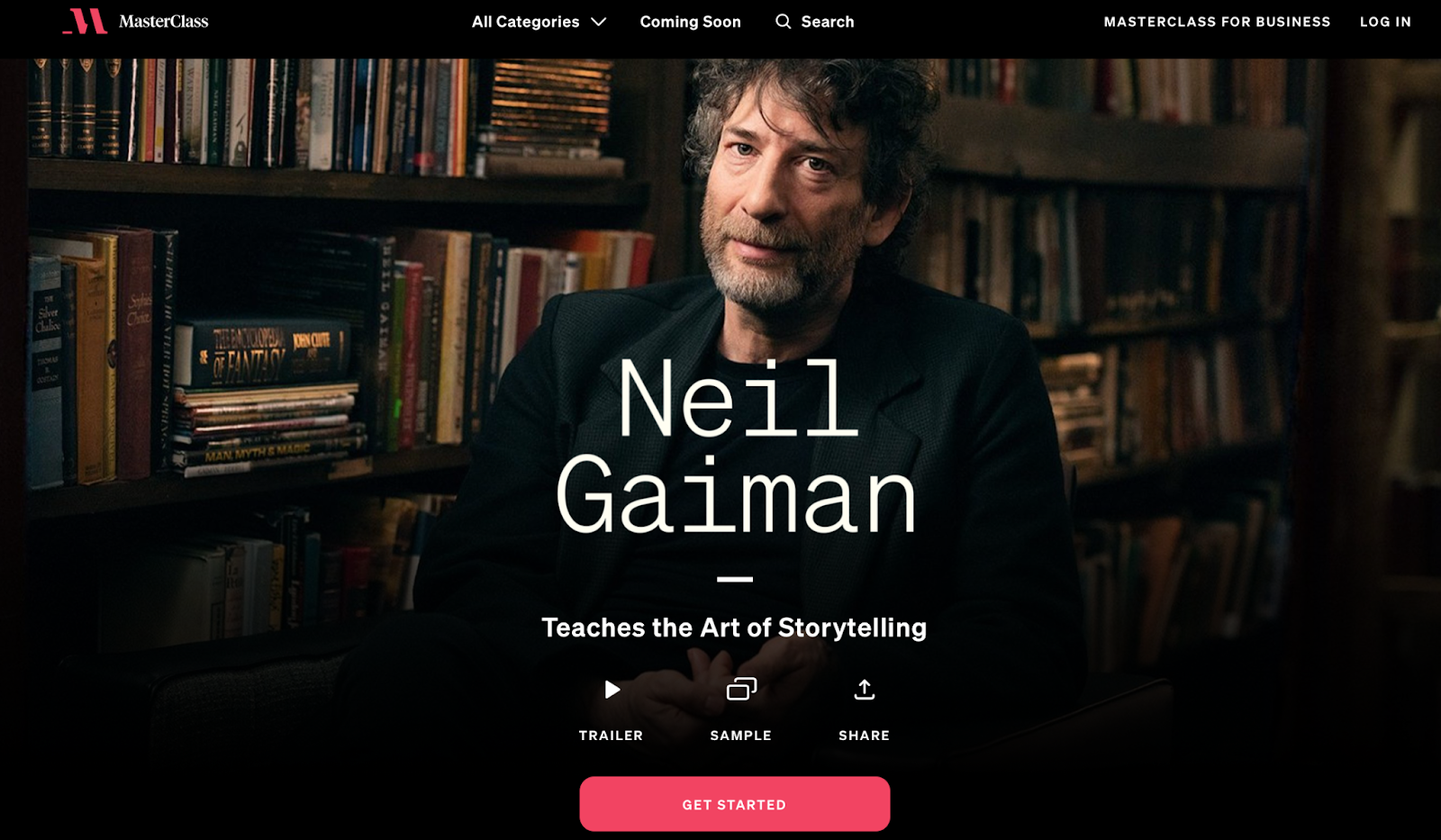
Best Creative Writing Courses Compared
Taking a creative writing course will help you to become a better writer. It will teach you how to tell a story, write descriptively, and…

How to Create Winning Headlines in 9 Simple Steps
In any ad, everything depends on the headline. It’s why some copywriters are known to spend 50% of their time on just the headline. As…

The Five Sales Letters Every Marketer Should Know, Hands Down
If you want your visitors to buy, instead of bouncing off your site like a basketball… Ask yourself: What’s missing from my funnel? What’s missing…

15 Habits of Website Visitors That Will Completely Change the Way You Write Website Content
For the most part, website visitors are quite predictable. This gives you, a business owner, a huge advantage. Why? Psychology!

The Biggest Lie in Copywriting
I am an artist. Or at least that’s what 90% of the people I speak to think when I tell them what it is I…

How To Increase Your Landing Page Conversions by Asking a Question
It’s believed that it takes users (who have no idea of what your site does) exactly three seconds to orient themselves and make up their…

Copywriting For Social Media Ads: It’s Not What You Say, It’s How You Say It
Many might say that social media ads are interruption advertising in a modern form. However, there is definitely something less abrasive about a sponsored tweet…

16 Helpful Copywriting Articles To Launch You Into Web Writing Greatness
We all need a little help… from time to time. Actually, as online copywriters striving for greatness, we need all the help we can get….

62 Power Words That Will Help You Sell
Have you ever read a landing page, sales letter or even blog post which has unequivocally sold you on a product? The type of content…

How to Become a Better Copywriter: 21 Tips from the Experts
Want to get better results from your web pages? Then you have to get the copy right. Whether you’re writing landing page copy or tweaking…

How To Increase Conversions By Forgetting The CTA
Your target customer has zero interest in your CTA. He/she doesn’t particularly care about the call, the signup, or even the purchase. He/she isn’t really…
Over 300,000 websites use Crazy Egg to improve what's working, fix what isn't and test new ideas.
Last Updated on July 27, 2017
How to Write an Argumentative Essay: 101 Guide [+ Examples]
An argumentative essay is a genre of academic writing that investigates different sides of a particular issue. Its central purpose is to inform the readers rather than expressively persuade them. Thus, it is crucial to differentiate between argumentative and persuasive essays.
While composing an argumentative essay, the students have to demonstrate their research and analytical skills. The secret of a successful paper lies behind strong arguments and counterarguments. So, the writer should focus on facts and data rather than personal values and beliefs.
Besides, a good argumentative essay should be structured appropriately:
- The introduction and conclusion have to create a frame for the entire essay.
- The body paragraphs are supposed to cover the essential points.
- Supporting evidence should make a paper more professional and reputable.
Are you still wondering what an argumentative essay is and how to write it? Check out the sections below prepared by our experts . Here, you can find the most valuable info, helpful tips, and useful examples.
📜 Classic Strategy
📋 toulmin strategy, 🗣️ rogerian strategy, ✒️ fill in the blanks, 🔍 edit and proofread, 🔗 references, 📌 argumentative essay in a nutshell.
Are you trying to figure out what an argumentative essay is? It’s a type of academic paper that covers both sides of a given issue. An author can decide whether they aim to present both sides equally or support one side more dynamically.
One of the mistakes among students is the confusion of argumentative and persuasive essays . Do you want to figure out the differences? Take a look at the following table.
| Argumentative Essay | Persuasive essay | |
|---|---|---|
| Useful info, credible facts, relevant reasons, appropriate evidence. | The mix of data, personal opinion, and emotions. | |
| Presenting credible resources to validate your claims and counterclaims. | Providing data from reputable sources, along with your feelings about the given issue, to persuade your reader. |
Before writing an argument essay, it would be helpful to choose an appropriate model to rely on. There are three strategies to consider: Classical, Toulmin, and Rogerian.
Look at the following sections and choose the most suitable one for you.
Are you wondering how to write an argumentative essay? Consider using the classical approach. It is the most popular way of composing an argumentative paper.
Under the classical strategy, the author has to follow these rules:
- research the issue;
- present both sides;
- express own opinion;
- prove the reader the validity of the conclusion.
It is up to the audience to decide whether your position is right or wrong. Yet, you should try to convince the readers of the effectiveness of your opinion.
Usually, the classical argument paper is structured in the following way:
- Introduction . Use the hook to catch the readers’ attention. State the problem and explain why your topic is relatable to the audience.
- General background. Introduce the general info and several facts about your issue.
- Thesis statement . State your position clearly and concisely.
- The central argument. Provide valid evidence and appropriate examples to support your position. Refer only to reliable sources.
- Rebuttal . Include a counter paragraph in your essay, presenting the opposing arguments. Provide specific examples to make the reader understand your position. Also, explain to the audience why the counterclaims are incorrect.
- Conclusion . Synthesize your arguments and counterarguments. Give the readers a question for further investigation of your problem. To make your essay more impressive, compose a memorable concluding sentence.
Toulmin strategy is the most suitable for the discussion of controversial issues. This model aims to find common ground through clear logic and valid evidence. Besides, the Toulmin strategy eliminates unnecessary things and limits the points to agree upon.
An argumentative essay written by the Toulmin model includes the following elements:
- Claim . A viewpoint that the author aims to prove.
- Evidence . Supportive facts from reliable resources that highlight the significance of the claim.
- Warrant . An element that connects the claim and that evidence.
- Backing . Additional reasoning that underlines the warrant’s validity.
- Rebuttal . Counterarguments that contradict the author’s position.
- Qualifier . An additional element (usually, a word or a short phrase) that narrows the claim’s capacity. Several examples of qualifiers: “typically,” “usually,” “occasionally,” etc.
- Exceptions . Specific limitations that indicate the cases where that claim may not be valid.
Like the Toulmin approach, Rogerian strategy attempts to find common ground between two sides of one issue. However, the technique is slightly different.
The Rogerian model is often used in highly controversial debates when the parties do not accept each other’s position. Thus, the given strategy focuses on finding the agreement by proving the validity of the opposing arguments.
Below, you can find the primary outline for the Rogerian argumentative essay:
- Introduce the problem. Present the issue clearly and explain why it is worth the readers’ attention.
- Summarize and analyze the counterarguments. Take into consideration all the possible counterpoints and look at them from different perspectives. Discuss the cases in which the opposing claims could be valid. Demonstrate your open-mindedness. This will make the opposite party more loyal to you.
- Present your position. After discussing the counterpoints, state your opinion. Convince the audience about the validity of your points.
- Prove the advantages of your position. Explain to the opposite party how the acceptance and adoption of your points will benefit them.
🧐 How to Write an Argumentative Essay
Before working on your essay, carefully read the assignment. Make sure you understand all the instructor’s requirements and the purpose of the paper.
- Pay enough attention to the task. Did your professor assign you a topic? Or do you need to choose it yourself ? Make sure you have an idea that will turn into an outstanding essay.
- Select the strategy you are going to apply. An argumentative essay format will depend on the model you choose to compose your paper. Analyze the issue you will arise and decide what strategy is the most suitable. Is it the Classical model, the Toulmin, or the Rogerian one?
After that, start composing your argumentative essay. Check out the following sections. We have a lot of insightful info to share with you!
📚 Research the Topic
The first step of writing an argumentative paper is an in-depth investigation of the topic. To validate your arguments, you have to refer to credible resources. The essay will look more professional if you use reliable sources in it.

To research like a professional , do the following:
- Use only credible sources. You can refer to the books, research articles, materials from academic databases, or Google Scholar. Webpages registered as governmental or educational institutions (.gov, .edu.) and widely-known news websites (New York Times, BBC, CNBC) are also considered appropriate. Avoid using blog posts, outdated materials, and any other data from unreliable sources. You may get into huge trouble, taking information from random websites, since it may be invalid.
- Pay attention to the publishing date . You may be required to use the sources released no later than five years ago. Yet, it is not always the case, especially when you’re dealing with historical documents. Thus, double-check your instructions regarding recommended sources.
- Keep your topic in mind. Concentrate on what you are writing about and select the sources for your exact issue. Avoid sources that provide too general information and look for more limited ones. If your idea is World War II’s economic consequences, the history book from ancient times to modern days will not be the best option.
- Become an expert. Take enough time to investigate the issue you are writing about. Read numerous articles, compare and contrast the scientists’ opinions. Prove your reader that you are a reliable person who selected the best sources.
📝 Outline Your Essay
The majority of students tend to underestimate the power of outlining. Don’t do this! An argumentative essay outline is a helpful tool for planning, structuring, and composing.
Firstly , a well-developed outline helps the writer to put all their thoughts in an appropriate order. None of the essential points will be lost if the student plans the essay before writing.
Secondly , it lets the writer figure out what evidence suits what argument most. Before writing, draft your essay first. Put examples, facts, etc. in the right parts of the paper. Then, write the entire text.
Thirdly , an outline provides a perfect opportunity to change the essay’s parts without rewriting the paper. Are you unsure of specific details? Not a problem. Change them in the outline without ruining the text.
There are essential elements that your outline should contain. Check out the following section to see them.
Introduction
How to start an argumentative essay? First and foremost, include an argumentative essay introduction in your outline.
This part should grab the readers’ attention from the first words. Thus, put enough effort into composing a compelling hook . What can it be? An impressive statistic or an exciting fact? Be creative – decide yourself! But make sure that your intro is catchy enough.
After the hook, introduce your topic’s general background . Prove the readers the significance of your issue and gradually come to the thesis statement .
The concept of studying abroad is becoming increasingly popular in both developed and developing countries. Students around the globe strive to explore the world and broaden their minds, and studying in a foreign country is an excellent opportunity to do so. Such experience may be extremely beneficial because meeting new people and discovering foreign cultures help students to gain valuable knowledge and see the world from a new perspective. However, while presenting significant opportunities for personal growth, it may also bring about some challenges.
Thesis Statement
A thesis is an essential part of your argumentative essay. It should state your position regarding the issue clearly and concisely. Avoid general statements, vague words, and be as specific and possible. Your thesis statement should guide the readers throughout the main points of the paper.
The location of the thesis in the essay plays a crucial role. The most appropriate place for it is the last sentence of the introductory paragraph.
Although students face difficulties such as loneliness while studying abroad, it is a worthy experience to introduce them to new knowledge, people, and culture and promote their independence.
Body Paragraphs
The body of your paper is supposed to develop your position, provide valid evidence and examples. Each paragraph has to focus only on one idea. This will ensure the logical structure of your argumentative essay.
A body paragraph should start from the topic sentence and end with the concluding sentence . Such a frame around every section will make your readers stay concentrated on your ideas and get your opinion.
- The topic sentence is the first sentence of the passage. It should reflect its point and correspond to the thesis statement.
- The concluding sentence aims to wrap up the author’s thoughts. Thus, make sure that the last sentence of a paragraph is insightful enough.
Each body paragraph should include an argument (or a counterargument) with supporting evidence. Get your proof from credible sources and ensure that it directly corresponds to the point.
An example of a topic sentence :
The benefits of education abroad are almost innumerable, prominent examples being gaining new knowledge, making friends with people who have different mindsets, and discovering new cultures.
An example of a concluding sentence:
Participants of student exchange programs usually return more driven and eager to develop both themselves and their country.
A conclusion plays a critical role in understanding the entire paper. It summarizes the body and leaves the final impression. Besides, it may push the readers on further investigation of the issue.
- To make your argumentative essay conclusion powerful, it is not enough just to summarize the arguments. It has to synthesize your ideas and show the connection between them. In other words, your points should be summarized and analyzed.
- Moreover, a conclusion refers to the thesis statement . A mere restatement of the central idea is not the most successful way of finishing your paper. You should try to develop it to demonstrate the reason you’ve written the previous paragraphs.
One more tip:
- Give the audience an incentive to explore the topic more in-depth. Insert the questions for further investigation at the end of your essay. It would play a significant role in making an impressive conclusion.
To sum up, studying abroad is beneficial as it helps a person evolve and perceive a world from new perspectives. It is an opportunity for a participant to explore the world, meet new people, gain valuable knowledge and experience, and broaden their horizons. Education abroad might pose problems like homesickness, loneliness, and trouble with getting accustomed to a new environment. However, all of them can be easily overcome if a student is flexible and eager to become autonomous and independent.
The list of references is a crucial part of any argumentative essay. It should contain all the sources the writer uses in the paper.
Before organizing your reference list , double-check your argumentative essay format. Is it written in MLA, APA, or maybe in Chicago style? How many references does the professor expect you to include? What kind of sources are you required to use?
After figuring out these issues, move to the format requirements of the writing style you use for your paper. The most popular ones are APA (7th edition), MLA, and ChicagoAD (author-date) styles. Below, you can find the examples of a reference for the same book in different formatting styles.
| Style | |
|---|---|
| Structure | Last name, First initial. Middle initial. (Year). Publisher. |
| Example | Clifton, L. (1996). . Copper Canyon Press. |
| Style | |
|---|---|
| Structure | Last Name, First Name. Publisher, Publication Date. |
| Example | Clifton, Lucille. . Copper Canyon Press, 1996. |
| Style | |
|---|---|
| Structure | Author’s Last Name, First Name. Year of Publication. Publisher’s Location: Publisher’s Name. |
| Example | Clifton, Lucille. 1993. . Washington: Copper Canyon Press. |
Did you develop a good outline? Congratulations! You are almost done with the essay. Now, you need to fill in the blanks and create a final version of your paper. Here is where you need to demonstrate a high level of your writing skills.
- Make sure your paper has no logical fallacies. Information from an untrustworthy source, a hasty generalization, or a false conclusion may put your reliability as an author under threat. So double-check all the data you include in your essay. Moreover, make sure all your statements are well-developed and supported by valid evidence.
- Check your argumentative essay structure . All the arguments should refer to the thesis statement and must be presented in the logical sequence. The supporting evidence and examples have to be inserted in the text logically, according to the arguments.
- Pay enough attention to the citations. References and in-text citations are incredibly tricky. Always check every detail according to your essay format. If you are unsure of specific issues, refer to a citation guide and make your paper free of formatting mistakes.
- Ensure the coherence of your argumentative essay. Often, the paper’s material seems raw only because it is presented without a logical connection. To ensure a smooth connection between the ideas, use transitions between the paragraphs and linking words inside them. Insert them in the text to connect the points. As a result, you will have a coherent essay with the logical flow of the arguments.

The final step of your writing process is editing and proofreading. Although it is not that energy and time consuming, it still plays a critical role in the work’s success.
While writing your argumentative paper, plan your time accordingly. This will provide you with an opportunity to polish your essay before submitting it. And take a look at our checklist and always use it to improve your papers:
- NO first and second person. Use only the third person in your argumentative essay. It is a general requirement for any kind of academic paper.
- NO slang. The word choice is an essential part of the essay writing process. Ensure you use only formal vocabulary and avoid using informal language (jargon, slang, etc.).
- NO unchecked words. Sometimes, words can raise questions and lead to misunderstandings. If you are unsure whether the term is used appropriately, double-check its meaning or replace it with another.
- NO plagiarism. While proofreading, make sure your citations are either properly paraphrased or taken in quotation marks. You can change the sentence structure to avoid plagiarism.
- NO minor mistakes. Grammar, spelling, punctuation play a crucial role. Want to make your paper look professional? Make sure it is free of minor mistakes then.
Argumentative Essay Topics
- Should student-athletes benefit from sports?
- Do celebrities really have influence on people behavior?
- Will decriminalization of drugs increase drug menace?
- Does social and environmental reporting promote organizations’ financial success?
- Should online learning be promoted?
- Can space exploration resolve human problems?
- Is success really the outcome of hard work?
- Is there discrimination against women in sports?
- Will banning tobacco sales promote public health?
- Is euthanasia a clemency?
- Should college education be free and accessible for every student?
- Should football be banned for being too dangerous?
- Is it time to change social norms?
- Should public servants’ strikes be prohibited?
- Does media create a negative image of ageing and older people?
- Is capitalism the best economic system?
- Can children under 18 make an appropriate decision on getting tattoo ?
- Should net neutrality be protected?
- Can an improper use of social media provoke a family crisis?
- Is it right to use animals in biomedical research?
- Does the climate change affect our indoor environment?
- Are children’s crimes a result of poor parenting?
- Should health care be universal?
- Does the increased use of technology hurt students’ efficiency?
- Is transformative education a key to the system modernization?
- Why should patients have access to truthful information?
- How does language barrier affect health care access?
- Would allowing adoption by same-sex couples benefit the country’s child welfare system?
- Is spanking children a proper way to improve their behavior?
- Does gun control law lowers crime rates?
- Will ban on spamming improve users’ internet experience?
- Should behavior be made illegal because it’s immoral?
- Is globalization really a progress?
- Does aid to developing countries bring more harm than good?
- Can parents improve children mental health by restricting internet use ?
- Is trusting our senses the best way to get the truth?
- Why parents should not have the right to choose their children based on genetics.
- Is college education really worth it?
- Will wearing a body camera by police officer enhance public trust?
- Immigration: a benefit or a threat?
- Is it a duty of adult children to take care of their elderly parents?
- Should abortions be legal?
- Are agents an integral part of professional sports?
- Will ban of cellphones while driving decrease the car accident rates?
- Should marijuana be legal for medical use?
- Is veganism diet universally beneficial?
- Should museums return artefacts?
- Is water birth beneficial for women’s health?
- Will paying people to stay healthy benefit the nation in the long-term perspective?
- Is obesity a disease or a choice?
It is up to you to decide how many parts to include in your essay. However, the 5 paragraph structure is the most appropriate model for an argumentative paper. So, write an introduction, a conclusion, and three body paragraphs.
The pronoun “you” is acceptable for informal writing. Yet, in academic papers, avoid using the second person. The same situation is with the first person. Generally, academic papers require the use of the third person.
A hook aims to grab the readers’ attention. Thus, you could start your essay with an interesting fact about your issue. Another way to create a catchy hook is to prove the audience the relatability of your topic. Make the readers want to explore your essay by demonstrating the significance of your issue.
Yes, you can. A question might become a compelling hook. Just make sure that it is profound, thought-provocative, and concise. A too broad or complicated question will only confuse your readers.
A title is an essential part of the essay since it causes the first impression. While selecting a heading, take into consideration the following points:
1. The title must be catchy.
2. It has to be not too long (5-12 words).
3. The title has to reflect the topic of the paper.
4. It should not be too complicated: the simpler – the better.
Thank you for visiting our page! We hope the information was helpful and insightful. Do you have friends who seek help with writing an argumentative essay? Share our article with them. And don’t forget to leave your comments!
- Sample Argument Essays: Mesa Community College
- Argument: The Writing Center, University of North Carolina at Chapel Hill
- Tips on How to Write an Argumentative Essay: Grace Fleming, ThoughtCo
- Tips for Organizing an Argumentative Essay: Judith L., Beumer Writing Center, Valparaiso University
- Argumentative Essay: Oya Ozagac, Bogazici University, Online Writing Lab
- Argumentative Essays: Purdue Online Writing Lab, College of Liberal Arts, Purdue University
- How to Write an Argumentative Essay Step by Step: Virginia Kearney, Owlcation
- Counterargument: Gordon Harvey for the Writing Center at Harvard University
- Basic Steps in the Research Process: North Hennepin Community College, Minnesota
- How to Recognize Plagiarism, Overview: School of Education, Indiana University Bloomington
- 15 Steps to Good Research: Georgetown University Library
- Share to Facebook
- Share to Twitter
- Share to LinkedIn
- Share to email
![call to action in argumentative essay example How to Title an Essay: Guide with Creative Examples [2024]](https://custom-writing.org/blog/wp-content/uploads/2021/01/close-up-woman-making-greeting-card-new-year-christmas-2021-friends-family-scrap-booking-diy-writing-letter-with-best-wishes-design-her-homemade-card-holidays-celebration-284x153.jpg)
It’s not a secret that the reader notices an essay title first. No catchy hook or colorful examples attract more attention from a quick glance. Composing a creative title for your essay is essential if you strive to succeed, as it: Thus, how you name your paper is of the...

The conclusion is the last paragraph in your paper that draws the ideas and reasoning together. However, its purpose does not end there. A definite essay conclusion accomplishes several goals: Therefore, a conclusion usually consists of: Our experts prepared this guide, where you will find great tips on how to...
![call to action in argumentative essay example How to Write a Good Introduction: Examples & Tips [2024 Upd.]](https://custom-writing.org/blog/wp-content/uploads/2021/01/closeup-shot-woman-working-studying-from-home-with-red-coffee-cup-nearby-284x153.jpg)
A five-paragraph essay is one of the most common academic assignments a student may face. It has a well-defined structure: an introduction, three body paragraphs, and a conclusion. Writing an introduction can be the most challenging part of the entire piece. It aims to introduce the main ideas and present...

Exemplification essays, also called illustration essays, are one of the easiest papers to write. However, even the simplest tasks require experience and practice. It is a good idea to find and analyze free exemplification essay examples. You can also ask your teacher to give you some sample exemplification essays from...
![call to action in argumentative essay example How to Write about a Topic You Lack Interest in [2024]](https://custom-writing.org/blog/wp-content/uploads/2021/01/Frustrated-exhausted-young-woman-blogger-284x153.jpg)
During their school years, students may not always have the opportunity to select a topic for their essay or research paper. Instructors tend to assign one or offer a list of ideas that might not seem engaging. Moreover, even the topic that you choose yourself can sometimes end up being...

Sorry to disappoint you, but if you think that your high scores and grades would be enough to get accepted into the university of your dreams, you’re wrong… The best colleges worldwide, such as the Ivy League schools receive applications from thousands and thousands of talented students. You gotta stand...

Often when you’re completing academic writing, especially essays, you need to use pronouns. In academic writing, the use of the word you is unacceptable. You can find yourself in a sticky situation, deciding upon gender-neutral pronouns in your academic writing. How can students deal with it? In most situations today,...

A divorce is a life-changing experience that affects spouses and their children (if there are any). Since divorce rates are relatively high in modern society, more and more people face this problem nowadays. When you are assigned to compose an argumentative essay about divorce, you should be as careful as...
![call to action in argumentative essay example How to Stop Corruption Essay: Guide & Topics [+4 Samples]](https://custom-writing.org/blog/wp-content/uploads/2020/12/close-up-two-hands-while-paying-money-284x153.jpeg)
Corruption is an abuse of power that was entrusted to a person or group of people for personal gain. It can appear in various settings and affect different social classes, leading to unemployment and other economic issues. This is why writing an essay on corruption can become a challenge. One...

Do you have to write an essay for the first time? Or maybe you’ve only written essays with less than 1000 words? Someone might think that writing a 1000-word essay is a rather complicated and time-consuming assignment. Others have no idea how difficult thousand-word essays can be. Well, we have...

To write an engaging “If I Could Change the World” essay, you have to get a few crucial elements: Let us help you a bit and give recommendations for “If I Could Change the World” essays with examples. And bookmark our writing company website for excellent academic assistance and study...
![call to action in argumentative essay example Why I Want to be a Pharmacist Essay: How to Write [2024]](https://custom-writing.org/blog/wp-content/uploads/2020/12/cut-out-medicament-drug-doctor-medical-1-284x153.jpg)
Why do you want to be a pharmacist? An essay on this topic can be challenging, even when you know the answer. The most popular reasons to pursue this profession are the following:
How to Write Incredible Calls to Action (with Examples)

What if I say, “Subscribe to our email newsletter at the end of the article?” Probably, you’ll skip it and forget when reaching the subscription button. Why? Because a compelling call to action is not only about using action words. CTAs should appear at the right place and contain the right words to lead to conversion.
A CTA is a suggestion to people to perform a certain action: subscribe, download an ebook, schedule a call, etc. Website owners place them in various parts of the page, depending on the goals, such as:
- above the fold;
- in the middle of an article;
- next to the lead form;
- in the right rail and many other places.
How should you arrange CTAs to encourage the audience to do what’s expected? This post will enumerate some helpful tips for successful call-to-action writing and show real-world examples from various spheres.

Image credit: Freepik
7 Proven Tips for Crafting Effective CTAs
Choose the right action verb.
CTAs usually appear precisely at the end of the message. It’s the last opportunity to reach out to consumers and point them in the right direction on their purchase journey. Where can you see them? On buttons, ads, banners, pop-ups, slide-ins, or at the end of videos. In any case, you have limited space for them. That’s why the CTA should be short, concise, and punchy.
Use a command verb at the beginning of the CTA copy. Compare the following variants and think of what will be more effective:
- Start your 14-day free trial period now.
- A 14-day trial period is available.
The first option is the clear winner because it tells the audience what to do. Remember that a strong call to action eliminates as much thought as possible. Choose the needed verb to match your situation and purpose, such as:
- sign up, subscribe, register now/get access
- download, start free trial;
- learn more, click here;
- buy/purchase, shop, order.
Use Power Words and Emotional Triggers
Another crucial component of call-to-action writing is power words . These are words that appeal to emotions and trigger the desire to click. While action verbs tell readers what to do and what will happen after clicking a link, power words subtly nudge people to the desired page. They rely on people’s emotions as a motivation to proceed, such as:
- fear : mistake, nightmare, painful, crisis, danger;
- encouragement : amazing, astonishing, life-changing, astounding, effortless;
- lust : thrilling, pleasurable, mouthwatering, compelling, engaging;
- anger : misleading, diminish, infuriating, annoying;
- greed : double, profit, explode, quadruple, extra, reduced;
- safety : proven, risk-free, moneyback, secure, refund;
- curiosity : lost, never seen before, unconventional, invitation only, confidential.
A strong CTA is the one people feel , not just comprehend. For example, “Secure your spot for the concert of a lifetime now,” will elicit a different response from viewers than, “Get your tickets for the concert now!” due to phrases like “lifetime” and “secure”. Another way to evoke enthusiasm is to leverage punctuation like an ellipsis or an exclamation mark.
Create Urgency and Scarcity
As most purchases are emotional rather than rational, another motivator can be a fear of missing out (FOMO). It’s one of the most widely-used tactics in e-commerce, where sellers show the number of remaining goods or the time left until the discount expires. So you can do it in the CTA.
The more people think, the less likely they will buy, remember? A sense of urgency/scarcity encourages people to act without much consideration. You can also find FOMO in social proof. If someone uses this product or service, others will be interested in joining the crowd. You can employ this idea in the CTA. Find a problem that your audience is experiencing. Emphasize it, show people they are not alone, and provide a solution.
Highlight the Benefits and Value Proposition
There is hardly anything more persuasive than a benefit . It works as simply as suggesting some perks for clicking the button. In other words, what are consumers going to gain from it? Will it enable people to perform their jobs more effectively, get in shape, or save money? You can add a tangible benefit like a discount or promotion. To show readers the value of clicking, start the CTA with words like “save” or “redeem” like “Save 15% by calling today!”
Or you can combine a USP and CTA in a single statement to persuade potential customers to take action. By highlighting what makes your product or service unique and motivating the user to take a specific action in line with that USP, you can increase the chances of converting them into leads or customers. Here’s an example of a USP/CTA mash-up:
“Get the best deals on luxury vacations - Book now and save 50%!”
Here you mention the action you expect users to perform (“ book now” ) and bring up a reason to do it ( “save 50%” ).
Personalize the CTA for the Target Audience
Personalization is one of the easiest ways to elicit emotions. It shows users that you value them and take a genuine interest in guiding them through the purchase journey smoothly. That’s why personalized CTAs can be so effective. According to Hubspot, tailored CTAs outperform standard CTAs by 202% .
Suppose a new website visitor, John, adds some products to the cart but leaves without buying them. You can show an exit-intent pop-up before he closes the tab with a personalized advertising call to action, such as: “John, get 10% off your first purchase! Plus, free shipping on orders over $50. Shop now and start saving!”
But if it was your existing customer, Rebecca, you could show her another pop-up, such as: “Welcome back, Rebecca! As a valued customer, we’d like to offer you 15% off your next purchase. Take advantage of this exclusive offer by making your purchase right away!”
Consider your audience when crafting your message, and address them specifically. You can segment people by age, gender, profession, level of proficiency in using your software, and other traits to offer the most relevant products and services.
Apart from writing a tailored message in your CTA, personalization can also be achieved by using new tools for sales documents creation. If you go with an interactive sales deck or proposal, you can add an impactful CTA by embedding your own calendar in the message, so that your potential customer can book their next meeting simply by reading your proposal.
Include Numbers If Relevant
Numbers catch the readers’ attention because they stand out on the page with text. So it’s another way to persuade people to click. Numbers also provide information that audiences want, like phone numbers, pricing, or advantages. For example, “Learn a new language in just 30 days with our intensive course.” It’s easy to spot the numbers, so viewers will immediately grasp the possible advantages of responding to your CTA.
You can also include a price in the ad copy and CTA. Why should you do it? On the one hand, you may scare away users from clicking the button and reading more about the product. On the other, if people deliberately respond to the ad knowing about your pricing, it shows their interest in the offer. It reduces the chances of bouncing from the landing page, increasing the return on ad spend.
Test and Optimize the CTA
Calls to action are tricky since you won’t know how effective they are until you put them to the test in real life. An idea that seems terrific on paper may not work well in practice. Thus, you need to understand why the CTA performs poorly and what doesn’t appeal to viewers. But how do you determine the need to change something? Through A/B testing.
A CTA is one of the most accessible and suitable page elements for the A/B test. A small change in word choice can have a significant impact. A/B testing lets you find the best option not only in terms of wording but also in placement, colors, size, etc.
Examples of Incredible CTAs
Now that we know the best practices for organizing CTAs, let’s examine how different companies do it. We’ll analyze call-to-action examples of online stores, SaaS companies, and nonprofit organizations.
E-commerce CTAs

Screenshot taken on the official Converse website
The first example under consideration is from Converse, a renowned lifestyle brand. The company uses several tips mentioned above:
- the language is simple to comprehend;
- numbers are showing the benefits of performing a particular action, such as 15% off the next order for signing up;
- the CTAs stand out from the rest of the content because they are bold or contrasting.
Ulster Weavers

Screenshot taken on Ulster Weavers
In this example from Ulster Weavers, we see the emphasis on FOMO. The bag is at a lower price, but only one item is available, so the retailer leaves us less time to think but to click the “Add to Cart” or “Buy it now” button.

Screenshot taken on the official Kusmi Tea website
Kusmi Tea decided to play with words and use the CTA “Enjoy now” instead of a basic “Click here” or “Shop now”. Don’t be afraid to get creative, as Kusmi Tea does in this screenshot. You can also notice that there is a lot of space around the button. This trick and the contrasting black color on the orange background make the CTA more visible.
Service-Based Call-to-Action Examples

Screenshot taken on the official Salesforce website
Here we can see several CTAs. Salesforce directs the viewer’s attention to them in the following ways:
- “Start free trial” is in the hero section of the website and is filled with color. So we understand it’s more important than the “Watch demo” button next to it.
- “Try for free” is filled with a contrasting green color for more emphasis. It also denotes no obligation to pay at the moment of clicking.
- The “Let’s chat” button is also noticeable. The photo on it aims to create a personal connection with the visitors and increase the likelihood of them engaging in a chat.
Time Doctor

Screenshot taken on the official Time Doctor website
When adding creativity to your CTA, be careful with misleading users. For example, the screenshot from Time Doctor illustrates two CTAs on the exit-intent pop-up:
- “Yes, help me increase my team’s productivity.”
- “No, I don’t need insight on what my team is doing.”
Unfortunately, they lack information about what will happen after choosing each. While you may guess the second button will close the pop-up, the first one may be confusing. Will I schedule a call, download the app, or get to the checkout page? No idea.

Screenshot taken on the official Exabytes website
This screenshot from Exabytes demonstrates a personalized approach. The CTA contains a personal pronoun, “My”, creating a sense of ownership and exclusivity in the customer’s mind.
Nonprofit CTAs
Elevation church.

Screenshot taken from the newsletter from the official Elevation Church website
It’s an email from Elevation Church. We can see that the organization displayed creativity in its “READY. SET. SHOP” advertising call to action. What may be the reason for that? It can be a powerful way to reach younger generations and differentiate an email from other generic promotions.
African Wildlife Foundation

Screenshot taken on the official African Wildlife Foundation website
Another nonprofit with impactful calls to action is African Wildlife Foundation. They are one of the first things you notice on the page. CTAs are concise and inspire supporters to learn more about the organization or donate immediately.
Over to You
Calls to action are indispensable elements of web forms , ad campaigns, emails, and social media content. What are the tips for designing them? We’ve looked at the top seven strategies, including:
- beginning with a powerful verb;
- appealing to emotions;
- leveraging numbers;
- offering benefits;
- instilling a sense of urgency;
- personalizing CTAs according to user preferences, behavior, and types;
- testing various aspects of CTAs thoroughly.
These tips will help you amplify your conversion rates and find the key to your audience.

Kate Parish
Related posts.

Cookies are staying in Chrome, Goo.gl links are dying, Bing got #blocked by Reddit, and more…

AI for Precision Marketers: Tips to Improve Performance and Streamline Workflows

Are Google Demand Gen campaigns worth testing for eCommerce advertisers? Why is my GA4 audience so much smaller when I import it into Google Ads?
App store makeovers, google maps scams, hidden ga4 reports and more…, see why brands have relied on marin to manage over $48 billion in spend.
- Link to facebook
- Link to linkedin
- Link to twitter
- Link to youtube
- Writing Tips
How to Write an Argumentative Essay

4-minute read
- 30th April 2022
An argumentative essay is a structured, compelling piece of writing where an author clearly defines their stance on a specific topic. This is a very popular style of writing assigned to students at schools, colleges, and universities. Learn the steps to researching, structuring, and writing an effective argumentative essay below.
Requirements of an Argumentative Essay
To effectively achieve its purpose, an argumentative essay must contain:
● A concise thesis statement that introduces readers to the central argument of the essay
● A clear, logical, argument that engages readers
● Ample research and evidence that supports your argument
Approaches to Use in Your Argumentative Essay
1. classical.
● Clearly present the central argument.
● Outline your opinion.
● Provide enough evidence to support your theory.
2. Toulmin
● State your claim.
● Supply the evidence for your stance.
● Explain how these findings support the argument.
● Include and discuss any limitations of your belief.
3. Rogerian
● Explain the opposing stance of your argument.
● Discuss the problems with adopting this viewpoint.
● Offer your position on the matter.
● Provide reasons for why yours is the more beneficial stance.
● Include a potential compromise for the topic at hand.
Tips for Writing a Well-Written Argumentative Essay
● Introduce your topic in a bold, direct, and engaging manner to captivate your readers and encourage them to keep reading.
● Provide sufficient evidence to justify your argument and convince readers to adopt this point of view.
● Consider, include, and fairly present all sides of the topic.
● Structure your argument in a clear, logical manner that helps your readers to understand your thought process.
Find this useful?
Subscribe to our newsletter and get writing tips from our editors straight to your inbox.
● Discuss any counterarguments that might be posed.
● Use persuasive writing that’s appropriate for your target audience and motivates them to agree with you.
Steps to Write an Argumentative Essay
Follow these basic steps to write a powerful and meaningful argumentative essay :
Step 1: Choose a topic that you’re passionate about
If you’ve already been given a topic to write about, pick a stance that resonates deeply with you. This will shine through in your writing, make the research process easier, and positively influence the outcome of your argument.
Step 2: Conduct ample research to prove the validity of your argument
To write an emotive argumentative essay , finding enough research to support your theory is a must. You’ll need solid evidence to convince readers to agree with your take on the matter. You’ll also need to logically organize the research so that it naturally convinces readers of your viewpoint and leaves no room for questioning.
Step 3: Follow a simple, easy-to-follow structure and compile your essay
A good structure to ensure a well-written and effective argumentative essay includes:
Introduction
● Introduce your topic.
● Offer background information on the claim.
● Discuss the evidence you’ll present to support your argument.
● State your thesis statement, a one-to-two sentence summary of your claim.
● This is the section where you’ll develop and expand on your argument.
● It should be split into three or four coherent paragraphs, with each one presenting its own idea.
● Start each paragraph with a topic sentence that indicates why readers should adopt your belief or stance.
● Include your research, statistics, citations, and other supporting evidence.
● Discuss opposing viewpoints and why they’re invalid.
● This part typically consists of one paragraph.
● Summarize your research and the findings that were presented.
● Emphasize your initial thesis statement.
● Persuade readers to agree with your stance.
We certainly hope that you feel inspired to use these tips when writing your next argumentative essay . And, if you’re currently elbow-deep in writing one, consider submitting a free sample to us once it’s completed. Our expert team of editors can help ensure that it’s concise, error-free, and effective!
Share this article:
Post A New Comment
Got content that needs a quick turnaround? Let us polish your work. Explore our editorial business services.
6-minute read
How to Write a Nonprofit Grant Proposal
If you’re seeking funding to support your charitable endeavors as a nonprofit organization, you’ll need...
9-minute read
How to Use Infographics to Boost Your Presentation
Is your content getting noticed? Capturing and maintaining an audience’s attention is a challenge when...
8-minute read
Why Interactive PDFs Are Better for Engagement
Are you looking to enhance engagement and captivate your audience through your professional documents? Interactive...
7-minute read
Seven Key Strategies for Voice Search Optimization
Voice search optimization is rapidly shaping the digital landscape, requiring content professionals to adapt their...
Five Creative Ways to Showcase Your Digital Portfolio
Are you a creative freelancer looking to make a lasting impression on potential clients or...
How to Ace Slack Messaging for Contractors and Freelancers
Effective professional communication is an important skill for contractors and freelancers navigating remote work environments....

Make sure your writing is the best it can be with our expert English proofreading and editing.
5 Steps To Writing an Effective Call to Action (With Examples)

Table of contents

Laura Jane Bradbury
An effective call to action (CTA) encourages content engagement, converts visitors into leads, and helps people discover your business. It should offer value to the reader and explain what to expect from taking action.
If a CTA doesn't have a clear message, feels too generic, or isn’t aligned with your audience’s concerns, readers won't act. This could cost you potential customers and income.
As a professional copywriter with six years of experience, I’ve helped many small businesses reach their goals through calls to action. Here, I'll share the best practices for writing persuasive CTAs.
Key Takeaways
- A call to action encourages readers to engage with your content, purchase a product, and learn more about your brand.
- It should be short, direct, and enticing. Use action verbs to motivate people to act.
- Ensure you clearly explain the value your audience will get from following your CTA.
Examples of great CTAs and why they work
Below are five CTA examples from high-profile businesses. We'll look at why they work, and what techniques you can apply.
Semrush: Use persuasive language
Cta: “get a free trial” .

Blog posts are a great place to put a CTA, as readers are already interested in the topic and more likely to respond to your suggested action. Engaging and relevant content can also lead to higher clickthrough rates, helping more readers learn about and interact with your business.
Semrush provides a great example of how to write a good call to action in a blog post. After sharing a detailed guide on search engine optimization (SEO) for blogs, they suggest readers sign up for a free trial to begin implementing SEO. Putting the CTA at the end of the post lets readers consume valuable information before discovering how to apply it.
The CTA works because:
- It includes the action verb “Get” — grabbing the reader's attention.
- The CTA is clear and eye-catching: The yellow box separates it from the post's content, while the purple highlights the specific action to take.
- The CTA text highlights the value for the reader immediately : The trial is "free" and Semrush conveniently provides "everything" in "one" place, so busy entrepreneurs and marketers don't need to jump from tool to tool.
Here are some action words and phrases (in bold) to consider for your own CTA. Play around with them and see what works best:

LOOKFANTASTIC: Create urgency
Cta: “hurry, this offer is for today only”.

There are many CTAs you can use on social media . If you want to increase engagement, for example, you can ask people to comment on, like, or share a post. In this case, LOOKFANTASTIC wants to encourage its followers to shop a specific brand on its site.
- It offers an incentive — 25% off.
- The use of "Hurry" and “TODAY only” creates urgency : This motivates customers to take advantage of the offer before it's too late.
- LookFantastic addresses the concerns of its customers : The text highlights that the products are "skin-loving."
Career Contessa: Offer an incentive
Cta: “i’m so in”.

Email newsletters can build customer relationships, drive sales, and be an effective digital marketing channel. However, people are increasingly less willing to share their email addresses.
To encourage people to subscribe, Career Contessa has created a signup form in the middle of its homepage. This gives readers a chance to see what the newsletter is about and what type of content they can expect.
Notice how the CTA banner is clear and concise, explaining what people will receive by signing up.
- It uses language that's relatable to its audience: The site’s young, female readers will identify "Level up" as advancing their careers.
- It makes people feel included : "I'm so in" creates the feeling of joining an exclusive group or club.
- There’s an incentive to join : The text offers readers "a shortcut to success."
Uniqlo: Consider the buying stages
Cta: “learn more” .

Customers want to know what they’re signing up for before downloading an app. Uniqlo knows this and tells their customers exactly what to expect from their new app. So, rather than telling people to “Download now,” the CTA suggests readers “LEARN MORE.”
- It’s short and direct , making it easy to understand and follow.
- Customers understand the value — the accompanying illustrations and copy convey the benefits of the app.
- There’s lots of action verbs — “Get”, “Download”, “Sign up”, “Scan + Shop”.
Tip: Before adding a CTA, consider where your customers are in the buying stages. While a regular buyer may instantly click to “shop now,” a new customer may need more information. New products might also require additional context in order to help customers understand their value.
New York Magazine: Use bold visuals
Cta: “subscribe now” .

Most consumers prefer a brand to contact them via email . New York Magazine is a great example of how to write a call to action for email,. You’re immediately drawn in by the newsletter’s image emphasizing that it’s the “LAST CHANCE” to take advantage of its offer.
This encourages readers to take action by triggering the fear of missing out. The publication then describes all the benefits of joining — including its free tote bag — to entice users to click the “SUBSCRIBE NOW” button.
- It creates urgency: “SUBSCRIBE NOW” emphasizes that you should take action immediately.
- The accompanying text is descriptive: “award-winning,” “exciting,” “fresh,” “sharp.” These adjectives suggest the content is unique and high quality, helping convince readers that the magazine is worth investing in.
- The CTA is visually bold: The black button stands out against the white background and contrasts with the colorful main image.
5 key elements to include in your CTA:
Based on the above examples, here are five critical aspects of a great CTA to include in your own:
1. Use simple and direct language
This ensures people understand the desired action. For example, “Subscribe now” is easier to follow than “You can subscribe now by clicking this link.” Make sure the accompanying text promoting your CTA is clear and easy to read .
2. Provide value to your readers
Who is your target audience and how can your CTA solve their concerns? Will a discount code save them money, or can you offer useful expertise and advice? Demonstrate exactly what your CTA will deliver and how.
3. Create a sense of urgency
Include phrases like “limited time offer” and “for today only” to motivate users to act. Pair these with action-oriented words like “subscribe” and “download” to encourage a particular action.
4. Consider your target audience
While “Visit this link” may suit a formal, professional audience, “Check out this link” works for a younger demographic. Be sure to use language and a tone of voice that your customers will understand and relate to.
5. Make your CTA stand out
Your CTA should be eye-catching and easily noticeable so your audience doesn't scroll past it. Use contrasting colors, emojis, bold fonts, and buttons to draw people in.
How AI can help you write better CTAs
Now you know how to write a great call to action, let’s look at how Wordtune’s AI tools can speed up the process.
Shorten text without losing the meaning
A call to action needs to be short and direct, succinctly telling the reader what action to take. Many CTAs are also written on a button, meaning you can only use a few words.
Using the Shorten button in Wordtune Editor can help you create a punchy CTA.

Get Wordtune for Free > Get Wordtune for Free >
Click on the sentence you would like to edit, and press Shorten . The Editor instantly generates alternatives. Notice how Wordtune’s suggestions are more direct, making them easier to understand.
Find alternative words
Whether you’re stuck on which action verb to use or you want to make your CTA’s benefits more descriptive, Wordtune can provide suggestions.

To find alternative synonyms, highlight a particular word and click Rewrite , Casual , or Formal . In this example, I wanted a casual tone for social media, so clicked Casual to generate a list of alternative, informal words.
Use prompts to generate text
Wordtune's Create tool can help you brainstorm and plan your CTA copy.
To generate text, click Create and type in your prompt — no more than 1,000 characters.
AI Prompt: Create persuasive copy to entice customers to download our app to receive 10% off, with a direct call to action.
Using this prompt, Wordtune quickly created an enticing paragraph for me:

Wordtune can generate a specific CTA — “Download our app now” — which can be made into a CTA button. It can also create accompanying text to entice readers. Using the AI-generated copy, you can choose individual sentences to include such as, “With just a few clicks, you can browse our wide selection of products.”
Adjust tone of voice
In addition to suggesting synonyms, Wordtune’s Casual and Formal buttons can alter sentences to match your desired tone.

Here, I clicked the Formal button. In response, Wordtune removed the contraction “you’ll” and made its suggestions more direct, precise, and easy for readers to consume.
Conclusion:
A powerful call to action encourages readers to act, whether that’s by engaging with your content, buying your products, or learning more about your services. This can increase website views, sales, and bookings.
Keep your CTA short and direct, explaining in simple language how it will provide value. Ensure the tone aligns with your target audience, and create a sense of urgency to motivate readers to act quickly. Help your CTA stand out against your text by using contrasting colors, emojis, and bold fonts. Follow these simple steps and you’ll be writing eye-catching CTAs in no time.
Want to learn more? Check out our guides on how to create an effective tone of voice to reach your target audience and how to boost readability to write clear, succinct CTAs.
What type of content should include a call to action?
Any content can be an ideal opportunity for a CTA. From social media and blog posts to landing pages, ads, emails and videos.
Where should you place a call to action?
Calls to action are typically placed at the top, bottom, or side of a webpage. Take into account what your readers need to know before acting to find the best placement. For example, place a discount code at the top of your homepage. Or, if you want readers to share your content, it’s best at the end of the page.
Can you use multiple calls to action on a webpage?
With care, multiple calls to action can be used on the same webpage. For example, ask people to subscribe to your email list via a button while also adding a link to download an ebook. The key is to ensure your calls to action are spread out and organized in a way that doesn't overload the reader.
Share This Article:
%20(1).webp)
8 Tips for E-commerce Copywriting Success (with Examples!)
.webp)
The Brand Strategy Deck You Need to Drive Social Media Results + 5 Examples

Grammarly Alternatives: Which Writing Assistant is the Best Choice for You?
Looking for fresh content, thank you your submission has been received.
Purdue Online Writing Lab Purdue OWL® College of Liberal Arts
Classical Argument

Welcome to the Purdue OWL
This page is brought to you by the OWL at Purdue University. When printing this page, you must include the entire legal notice.
Copyright ©1995-2018 by The Writing Lab & The OWL at Purdue and Purdue University. All rights reserved. This material may not be published, reproduced, broadcast, rewritten, or redistributed without permission. Use of this site constitutes acceptance of our terms and conditions of fair use.
A (Very) Brief History of Rhetoric
The study of rhetoric has existed for thousands of years, predating even Socrates, Plato and the other ancient Greek philosophers that we often credit as the founders of Western philosophy. Although ancient rhetoric is most commonly associated with the ancient Greeks and Romans, early examples of rhetoric date all the way back to ancient Akkadian writings in Mesopotamia.
In ancient Greece and Rome, rhetoric was most often considered to be the art of persuasion and was primarily described as a spoken skill. In these societies, discourse occurred almost exclusively in the public sphere, so learning the art of effective, convincing speaking was essential for public orators, legal experts, politicians, philosophers, generals, and educators. To prepare for the speeches they would need to make in these roles, students engaged in written exercises called progymnasmata . Today, rhetorical scholars still use strategies from the classical era to conceptualize argument. However, whereas oral discourse was the main focus of the classical rhetoricians, modern scholars also study the peculiarities of written argument.
Aristotle provides a crucial point of reference for ancient and modern scholars alike. Over 2000 years ago, Aristotle literally wrote the book on rhetoric. His text Rhētorikḗ ( On Rhetoric ) explores the techniques and purposes of persuasion in ancient Greece, laying the foundation for the study and implementation of rhetoric in future generations. Though the ways we communicate and conceptualize rhetoric have changed, many of the principles in this book are still used today. And this is for good reason: Aristotle’s strategies can provide a great guide for organizing your thoughts as well as writing effective arguments, essays, and speeches.
Below, you will find a brief guide to some of the most fundamental concepts in classical rhetoric, most of which originate in On Rhetoric.
The Rhetorical Appeals
To understand how argument works in On Rhetoric , you must first understand the major appeals associated with rhetoric. Aristotle identifies four major rhetorical appeals: ethos (credibility), logos (logic), pathos (emotion), and Kairos(time).
- Ethos – persuasion through the author's character or credibility. This is the way a speaker (or writer) presents herself to the audience. You can build credibility by citing professional sources, using content-specific language, and by showing evidence of your ethical, knowledgeable background.
- Logos – persuasion through logic. This is the way a speaker appeals to the audience through practicality and hard evidence. You can develop logos by presenting data, statistics, or facts by crafting a clear claim with a logically-sequenced argument. ( See enthymeme and syllogism )
- Pathos – persuasion through emotion or disposition . This is the way a speaker appeals to the audience through emotion, pity, passions, or dispositions. The idea is usually to evoke and strengthen feelings already present within the audience. This can be achieved through story-telling, vivid imagery, and an impassioned voice. Academic arguments in particular benefit from understanding pathos as appealing to an audience's academic disposition on a given topic, subject, or argument.
- Kairos – an appeal made through the adept use of time. This is the way a speaker appeals to the audience through notions of time. It is also considered to be the appropriate or opportune time for a speaker to insert herself into a conversation or discourse, using the three appeals listed above. A Kairotic appeal can be made through calls to immediate action, presenting an opportunity as temporary, and by describing a specific moment as propitious or ideal.
*Note: When using these terms in a Rhetorical Analysis, make sure your syntax is correct. One does not appeal to ethos, logos, or pathos directly. Rather, one appeals to an audience's emotion/disposition, reason/logic, or sense of the author's character/credibility within the text. Ethos, pathos, and logos are themselves the appeals an author uses to persuade an audience.
An easy way to conceptualize the rhetorical appeals is through advertisements, particularly infomercials or commercials. We are constantly being exposed to the types of rhetoric above, whether it be while watching television or movies, browsing the internet, or watching videos on YouTube.
Imagine a commercial for a new car. The commercial opens with images of a family driving a brand-new car through rugged, forested terrain, over large rocks, past waterfalls, and finally to a serene camping spot near a tranquil lake surrounded by giant redwood trees. The scene cuts to shots of the interior of the car, showing off its technological capacities and its impressive spaciousness. A voiceover announces that not only has this car won numerous awards over its competitors but that it is also priced considerably lower than comparable models, while getting better gas mileage. “But don’t wait,” the voiceover says excitedly, “current lessees pay 0% APR financing for 12 months.”
In just a few moments, this commercial has shown masterful use of all four appeals. The commercial utilizes pathos by appealing to our romantic notions of family, escape, and the great outdoors. The commercial develops ethos by listing its awards, and it appeals to our logical tendencies by pointing out we will save money immediately because the car is priced lower than its competitors, as well as in the long run because of its higher MPG rate. Finally, the commercial provides an opportune and propitious moment for its targeted audience to purchase a car immediately.
Depending on the nature of the text, argument, or conversation, one appeal will likely become most dominant, but rhetoric is generally most effective when the speaker or writer draws on multiple appeals to work in conjunction with one another. To learn more about Aristotle's rhetorical appeals, click here.
Components and Structure
The classical argument is made up of five components, which are most commonly composed in the following order:
- Exordium – The introduction, opening, or hook.
- Narratio – The context or background of the topic.
- Proposito and Partitio – The claim/stance and the argument.
- Confirmatio and/or Refutatio – positive proofs and negative proofs of support.
- Peroratio – The conclusion and call to action.
Think of the exordium as your introduction or “hook.” In your exordium, you have an opportunity to gain the interest of your reader, but you also have the responsibility of situating the argument and setting the tone of your writing. That is, you should find a way to appeal to the audience’s interest while also introducing the topic and its importance in a professional and considerate manner. Something to include in this section is the significance of discussing the topic in this given moment (Kairos). This provides the issue a sense of urgency that can validate your argument.
This is also a good opportunity to consider who your intended audience is and to address their concerns within the context of the argument. For example, if you were writing an argument on the importance of technology in the English classroom and your intended audience was the board of a local high school, you might consider the following:
- New learning possibilities for students (General Audience Concerns)
- The necessity of modern technology in finding new, up-to-date information (Hook/Kairos)
- Detailed narrative of how technology in one school vastly improved student literacy (Hook/Pathos)
- Statistics showing a link between exposure to technology and rising trends in literacy (Hook/Logos)
- Quotes from education and technology professors expressing an urgency for technology in English classrooms (Hook/Ethos)
Of course, you probably should not include all of these types of appeals in the opening section of your argument—if you do, you may end up with a boring, overlong introduction that doesn’t function well as a hook. Instead, consider using some of these points as evidence later on. Ask yourself: What will be most important to my audience? What information will most likely result in the action I want to bring about? Think about which appeal will work best to gain the attention of your intended audience and start there.
The narratio provides relevant foundational information and describes the social context in which your topic exists. This might include information on the historical background, including recent changes or updates to the topic, social perception, important events, and other academic research. This helps to establish the rhetorical situation for the argument: that is, the situation the argument is currently in, as impacted by events, people, opinion, and urgency of some kind. For your argument on technology in the English classroom, you might include:
- Advances in education-related technology over the centuries
- Recent trends in education technology
- A description of the importance of digital literacy
- Statistics documenting the lack of home technology for many students
- A selection of expert opinions on the usefulness of technology in all classrooms
Providing this type of information creates the setting for your argument. In other words, it provides the place and purpose for the argument to take place. By situating your argument within in a viable context, you create an opportunity to assert yourself into the discussion, as well as to give your reader a genuine understanding of your topic’s importance.
Propositio and Partitio
These two concepts function together to help set up your argument. You can think of them functioning together to form a single thesis. The propositio informs your audience of your stance, and the partitio lays out your argument. In other words, the propositio tells your audience what you think about a topic, and the partitio briefly explains why you think that way and how you will prove your point.
Because this section helps to set up the rest of your argument, you should place it near the beginning of your paper. Keep in mind, however, that you should not give away all of your information or evidence in your partitio. This section should be fairly short: perhaps 3-4 sentences at most for most academic essays. You can think of this section of your argument like the trailer for a new film: it should be concise, should entice the audience, and should give them a good example of what they are going to experience, but it shouldn’t include every detail. Just as a filmgoer must see an entire film to gain an understanding of its significance or quality, so too must your audience read the rest of your argument to truly understand its depth and scope.
In the case of your argument on implementing technology in the English classroom, it’s important to think not only of your own motivations for pursuing this technology in the classroom, but also of what will motivate or persuade your respective audience(s). Some writing contexts call for an audience of one. Some require consideration of multiple audiences, in which case you must find ways to craft an argument which appeals to each member of your audience. For example, if your audience included a school board as well as parents andteachers, your propositio might look something like this:
“The introduction of newer digital technology in the English classroom would be beneficial for all parties involved. Students are already engaged in all kinds of technological spaces, and it is important to implement teaching practices that invest students’ interests and prior knowledge. Not only would the marriage of English studies and technology extend pedagogical opportunities, it would also create an ease of instruction for teachers, engage students in creative learning environments, and familiarize students with the creation and sharing technologies that they will be expected to use at their future colleges and careers. Plus, recent studies suggest a correlation between exposure to technology and higher literacy rates, a trend many education professionals say isn’t going to change.”
Note how the above paragraph considers the concerns and motivations of all three audience members, takes a stance, and provides support for the stance in a way that allows for the rest of the argument to grow from its ideas. Keep in mind that whatever you promise in your propositio and partitio (in this case the new teaching practices, literacy statistics, and professional opinion) must appear in the body of your argument. Don’t make any claims here that you cannot prove later in your argument.
Confirmatio and Refutatio
These two represent different types of proofs that you will need to consider when crafting your argument. The confirmatio and refutatio work in opposite ways, but are both very effective in strengthening your claims. Luckily, both words are cognates—words that sound/look in similar in multiple languages—and are therefore are easy to keep straight. Confirmatio is a way to confirm your claims and is considered a positive proof; refutatio is a way to acknowledge and refute a counterclaim and is considered a negative proof.
The confirmatio is your argument’s support: the evidence that helps to support your claims. For your argument on technology in the English classroom, you might include the following:
- Students grades drastically increase when technology is inserted into academics
- Teachers widely agree that students are more engaged in classroom activities that involve technology
- Students who accepted to elite colleges generally possess strong technological skills
The refutatio provides negative proofs. This is an opportunity for you to acknowledge that other opinions exist and have merit, while also showing why those claims do not warrant rejecting your argument.
If you feel strange including information that seems to undermine or weaken your own claims, ask yourself this: have you ever been in a debate with someone who entirely disregarded every point you tried to make without considering the credibility of what you said? Did this make their argument less convincing? That’s what your paper can look like if you don’t acknowledge that other opinions indeed exist and warrant attention.
After acknowledging an opposing viewpoint, you have two options. You can either concede the point (that is, admit that the point is valid and you can find no fault with their reasoning), or you can refute their claim by pointing out the flaws in your opponent’s argument. For example, if your opponent were to argue that technology is likely to distract students more than help them (an argument you’d be sure to include in your argument so as not to seem ignorant of opposing views) you’d have two options:
- Concession: You might concede this point by saying “Despite all of the potential for positive learning provided by technology, proponents of more traditional classroom materials point out the distractive possibilities that such technology would introduce into the classroom. They argue that distractions such as computer games, social media, and music-streaming services would only get in the way of learning.”
In your concession of the argument, you acknowledge the merit of the opposing argument, but you should still try to flip the evidence in a positive way. Note how before conceding we include “despite all of the potential for positive learning.” This reminds your reader that, although you are conceding a single point, there are still many reasons to side with you.
- Refutation: To refute this same point you might say something like, “While proponents of more traditional English classrooms express concerns about student distraction, it’s important to realize that in modern times, students are already distracted by the technology they carry around in their pockets. By redirecting student attention to the technology administered by the school, this distraction is shifted to class content. Plus, with website and app blocking resources available to schools, it is simple for an institution to simply decide which websites and apps to ban and block, thereby ensuring students are on task.”
Note how we acknowledged the opposing argument, but immediately pointed out its flaws using straightforward logic and a counterexample. In so doing, we effectively strengthen our argument and move forward with our proposal.
Your peroratio is your conclusion. This is your final opportunity to make an impact in your essay and leave an impression on your audience. In this section, you are expected to summarize and re-evaluate everything you have proven throughout your argument. However, there are multiple ways of doing this. Depending on the topic of your essay, you might employ one or more of the following in your closing:
- Call to action (encourage your audience to do something that will change the situation or topic you have been discussing).
- Discuss the implications for the future. What might happen if things continue the way they are going? Is this good or bad? Try to be impactful without being overly dramatic.
- Discuss other related topics that warrant further research and discussion.
- Make a historical parallel regarding a similar issue that can help to strengthen your argument.
- Urge a continued conversation of the topic for the future.
Remember that your peroratio is the last impression your audience will have of your argument. Be sure to consider carefully which rhetorical appeals to employ to gain a desirable effect. Make sure also to summarize your findings, including the most effective and emphatic pieces of evidence from your argument, reassert your major claim, and end on a compelling, memorable note. Good luck and happy arguing!

Nice to meet you.
Enter your email to receive our weekly G2 Tea newsletter with the hottest marketing news, trends, and expert opinions.
15 Great Call to Action Examples That Simply Work
May 18, 2021
by Nathan Ojaokomo

- Why create a call to action?
Best practices for creating CTAs that work
- 15 call-to-action examples to draw inspiration from
Your ability to write ads, landing pages, or emails that make readers take action – whether it’s to buy something, download an eBook, join your email list, or something else – is one of the keys to becoming a successful marketer.
While it’s one thing to write headlines or introductions that hook a reader, it’s an entirely different ball game to make these readers take action after reading your copy. To make your audience or readers take action, you need to pay more than the usual attention to creating a compelling call to action (CTA) .
We’re going to share real-life examples of CTAs you can use to improve your conversions and grow your business. You’ll also learn why you need a strong call to action and how to write CTAs that work.
A call to action is used to prompt an audience to take a specific action.
When you think about the last time you downloaded an eBook, enrolled for an email course, or signed up for a software’s free trial, you will discover that a CTA was the final nudge that made you take action.
Common examples of CTAs you can find on websites, landing pages, emails, and ads are “Buy now,” “Subscribe,” “Sign Up,” and “Learn More”. These CTAs serve as a bridge between your audience and conversion.
Why should you create a strong call to action?
Many marketers make the mistake of thinking that CTAs are not necessary, especially since a call to action only takes up a small part of their website, email, or landing page. They also imagine that slapping common CTA examples like “Buy Now” or “Subscribe” on their copy would convert well for them.
But the truth is that your conversions would tank if you don’t create strong CTAs. Why? The average daily time spent on social media in 2020 was 145 minutes compared to only 111 minutes in 2015 – meaning people now consume more content than ever before. As a marketer, this means you’re literally in direct competition for people’s attention against Zoom calls, TikTok, Netflix, Instagram, and other social platforms.
In a world where attention spans are lower because of the many content and information channels available today, you’d be doing a disservice to your readers if you don’t use strong CTAs. A good CTA should grab people’s attention , make them notice what they stand to gain, and prompt them to take action.
So how can you create a strong call to action? First, you need to set the right foundation.
Before you write a CTA
No builder sets out to build a house without having a plan or laying the foundation. Similarly, you need to set the foundation for your CTAs before you begin writing.
Here are two questions that can help you lay the groundwork:
- What is your goal?
- Who is your audience?
What is your goal?
When writing CTAs, start with an end goal in mind. What action do you want your audience to take? Do you want them to sign up for your newsletter? Book a demo? Buy your products?
Whatever the goal is, it should be specific and straightforward. Don’t bombard your audience with too many options at once. Offering several choices confuses the audience and hurts your conversion rate opportunity.
Who is your audience?
Knowing your audience goes deeper than creating a random “Marketing Mary” persona. You need to understand your audience’s fears and desires well. Once you’ve identified who your audience is and what you want them to do, it’s time to start writing your CTA.
While there are no set or rigid rules when creating CTAs, a few principles can help you write strong CTAs. These principles work whether you’re writing a call to action for your websites, ads, social media captions, or emails.
Keep your CTA above the fold
A fold is the part of your website that visitors see before they start scrolling.
It’d be a waste of website real estate to hide your call to action in a place other than the first part of your website that visitors see. You can still use images, logos, and other graphics along with your CTA above the fold.
Don’t just tell people to do something
In 1978, Harvard professor Ellen Langer carried out a study that showed the power of using the word “because” . The study was conducted in front of a busy copy machine on the Harvard College campus.
Participants were asked to try to skip the queue using three different pitches:
- “Excuse me. I have five pages. May I use the xerox machine?”
- “Excuse me. I have five pages. May I use the xerox machine because I’m in a rush?”
- “Excuse me. I have five pages. May I use the xerox machine because I have to make copies?”
The results?
The first statement without “because” got a 60% favorable response. But that response was dwarfed by the 94% and 93% favorable responses from the other two pitches that used “because”.
Instead of just telling people to do something, tell them why they should do it.
Use a call to value instead of a call to action
Like telling your audience why they should do something, a call to value helps hammer on the benefits your audience can get from taking a particular action. Don’t say “Shop now” when you could say “Shop now and get 30% off of your order.”
Create a sense of urgency
Remember how you always rushed your assignment the night before you had to submit it? Without a submission deadline, you probably wouldn’t have completed as many assignments as you did in high school. The same thing happens with your marketing messages.
Without a sense of urgency, your audience would most likely not take any form of action. To create a sense of urgency, you can use phrases like “limited offer,” “now,” “XXX seats left” in your CTAs.
Your CTA should also make your audience fear that they’ll miss out on something if they don’t act quickly.
Strike a balance between creativity and simplicity
Don’t try to be too smart or witty by using phrases or words your audience doesn’t know. Nobody is going to hand you a medal for lacing your call to action and messaging with big words. Instead, use words, phrases, and terms that your audience uses in their daily conversations.
Use power words and phrases
A compelling call to action uses powerful words and phrases. Here’s a list of powerful words and phrases you can use in your CTA:
- Deadline
- Freebie
- On-demand
- Seize
- Try for free
- Start your free trial
Adjust CTAs to different devices
The way your call to action appears on a mobile phone differs from how it appears on a desktop. Make sure you optimize your CTA buttons to match the different devices your audience uses.
Employ social proof
Social proof, no matter how small, goes a long way into making your CTAs work. In a world where everyone claims to be the best, social proof helps your audience see that you’re not the one tooting your horn.
Social proof could be in the form of big company or client logos, star ratings from review sites, testimonials from customers, or some stats like the number of email subscribers you have.
Consider your CTA length
No rule book says that your CTA needs to be a specific length. The length of your call to action often depends on your offer and understanding of your audience. So don’t sweat it. Besides, you can always test which length works best for you.
Always keep testing
One exciting thing about CTAs is that you can test almost everything about them to see what works. You can test your call to action’s copy, button, button size, placement, and even the colors using an effective CTA conversion strategy .
15 call-to-action examples to draw inspiration from
You don’t always have to start from scratch or reinvent the wheel when creating a call to action. Here are some CTA examples that can inspire you, spanning across website, email, landing page, and ad CTA examples.
1. Get a free savings assessment
Even though G2’s homepage has a couple of good CTAs, the one on the header navigation bar stands out for many reasons.

First, it catches the eye immediately because its color scheme contrasts with the background and the rest of the page. It also contains the word “Free,” a word everyone loves to hear.
The use of figures and a clear benefit in the “Reduce your software costs by 18% overnight” line also makes clicking the CTA a no-brainer.
2. Start a 7-day trial for $7
Customers want to know what they’ll be getting before they click anything on your site. Ahrefs could have conveniently made their CTA read “Start a 7-day trial” without mentioning the $7 part.

While this can cause more visitors to click on the CTA, only a small percentage of them would proceed after hitting a paywall. If your audience has to pay before using your tool, clarify it in the call to action.
3. Learn more
“Learn more” is one of the most common CTAs on websites. While it may not work for everyone, it works well for Apple...well, because they’re Apple. Since they’re already on top of their audiences’ minds, Apple doesn’t need to say much to move people to action.
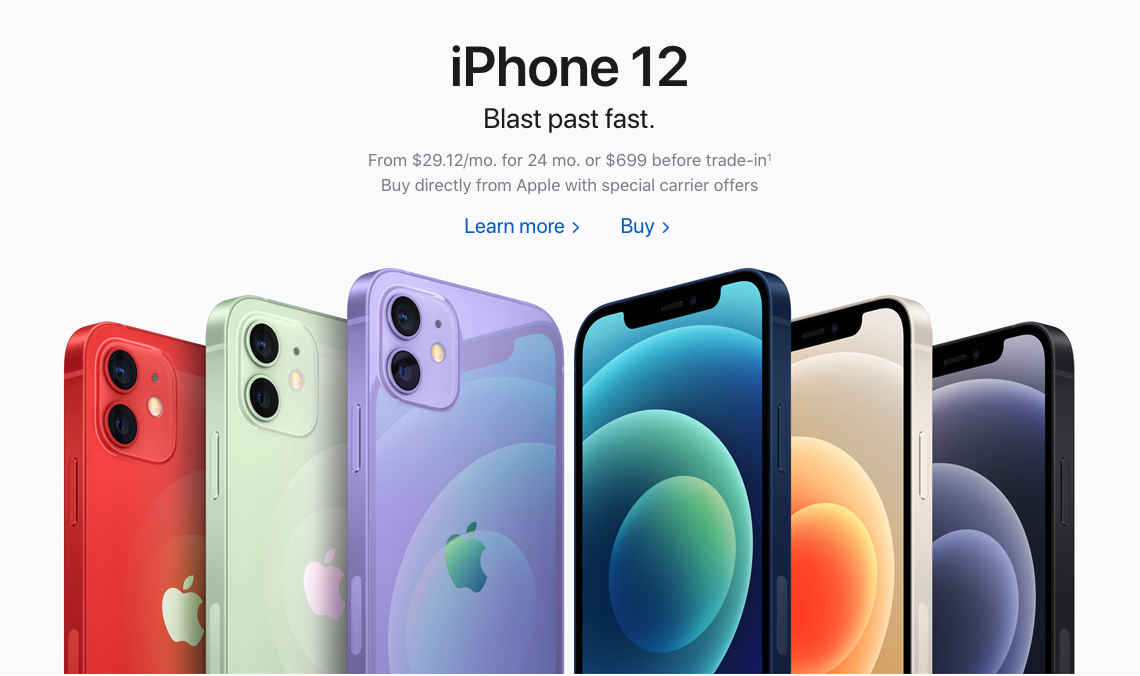
You’d also notice that although the call to action isn’t a button, it’s still easily identifiable because its color differs from the rest of the text.
4. Plant now
Click A Tree’s website design looks clean and on-brand. The image choice clearly shows what the organization is all about. The use of brown (earth) and green (leaves) as their colors also points to the organization’s mission to plant more trees.
All these elements combine to make the “Plant now” CTA work. “Now” also creates a sense of urgency.
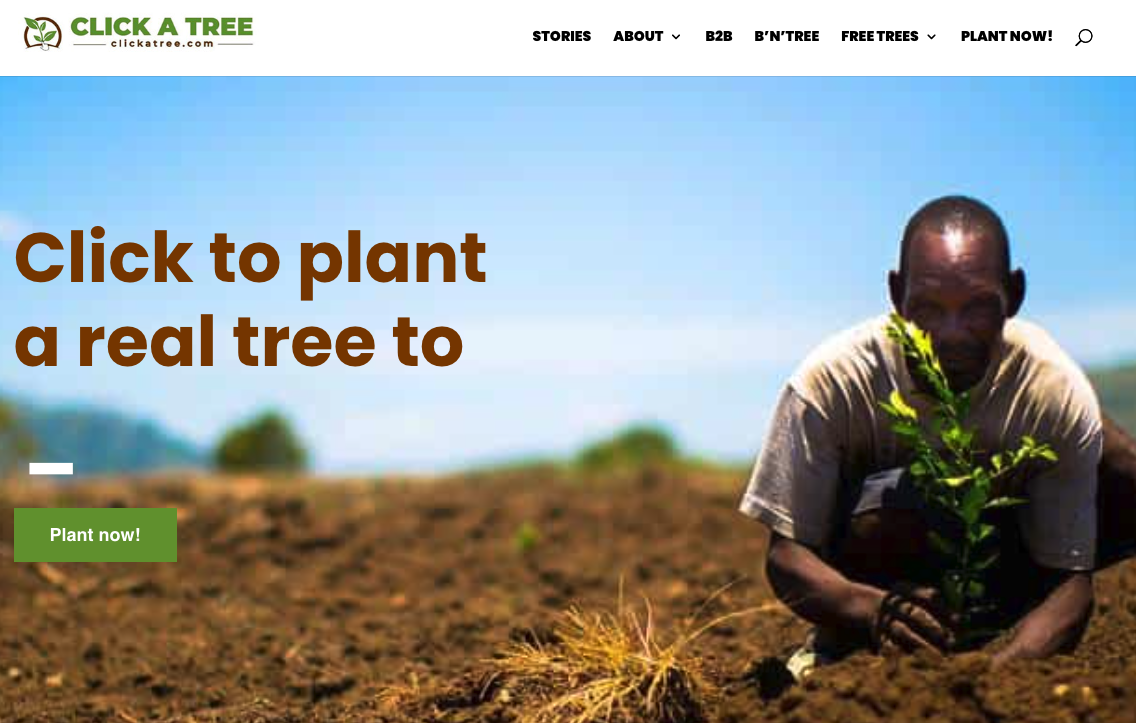
5. Get started – it’s free
Many company websites, especially SaaS companies, use the “Get started” CTA. However, Webflow takes it a step further by adding “ it’s free” at the end of their CTA.

This little addition helps resolve some objections around pricing that may come up in a visitor’s mind.
6. See how addictive email can be
Over the years, Tarzan Kay has built a successful business through email marketing. And with her website headline, she shows visitors what they would get when they click the CTA button.
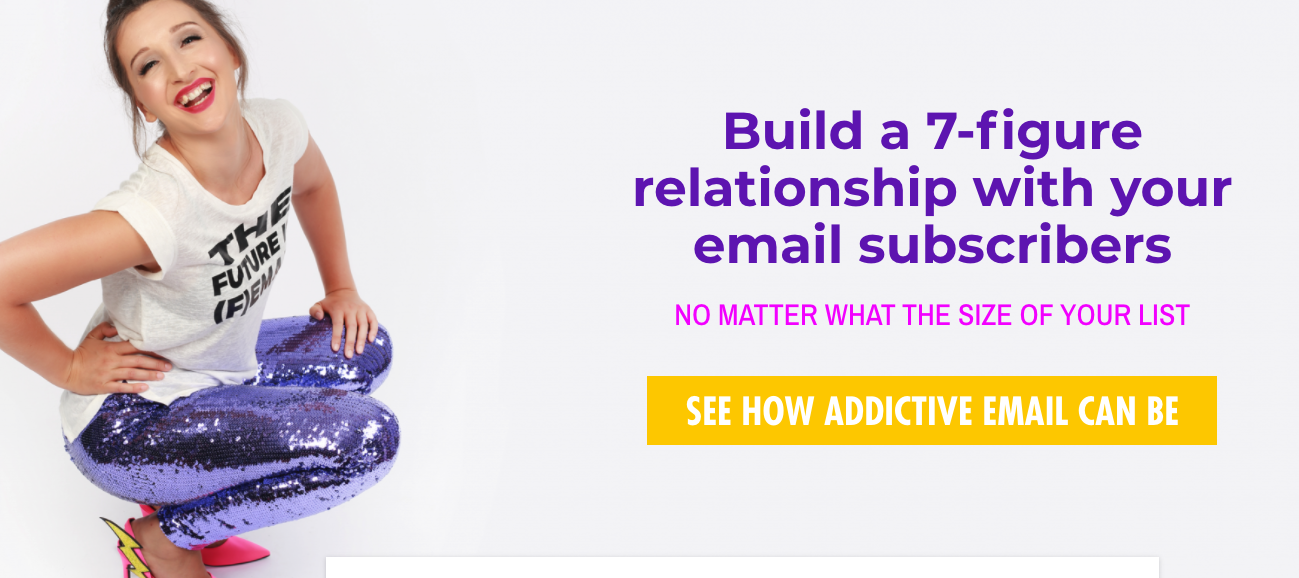
Yes, that giant CTA button. Although the button is hard to miss, it’s not pushy or salesy. Instead, it gives visitors the feeling that they would be gaining front seat rows to see how email marketing can work for them.
7. Get 30 days free
Want to know what’s better than getting a week-long free trial? Getting 30 days free.
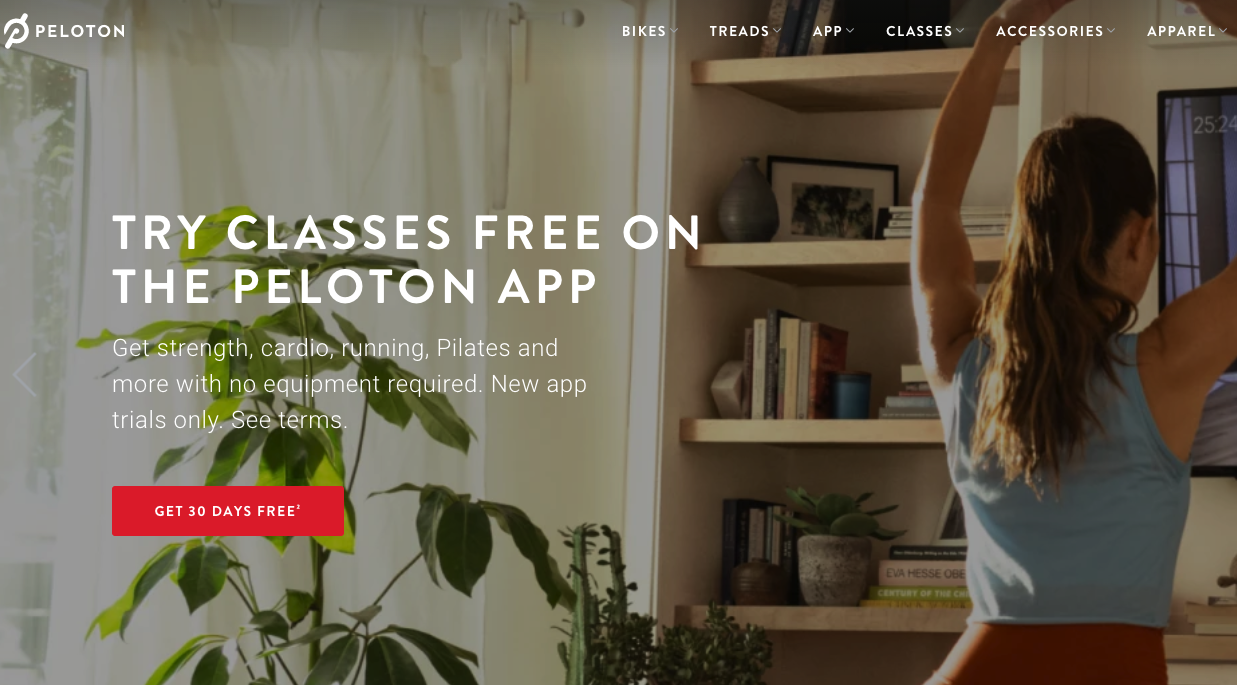
Peloton uses the “Get 30 days free” CTA to attract and convert visitors who want to get fit. This CTA is excellent because 30 days is more than enough time for a person to tell whether Peleton’s program is working for them or not.
8. Start winning more
It’s not only in your homepage headline that you can highlight your products or services’ most significant benefits. You can and should use these benefits in your call-to-action copy too. Winning is something anyone who plays games wants to achieve. And Metafy here brilliantly highlights this with their “Start winning more” CTA.
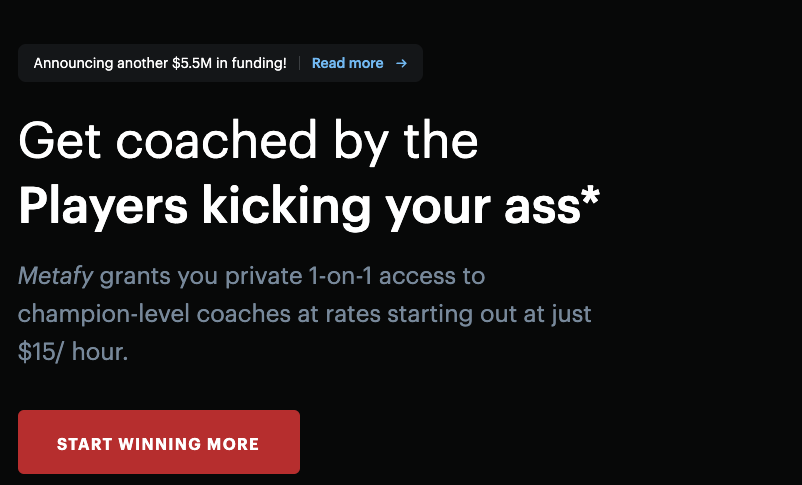
9. Schedule your free strategy session
Like we mentioned earlier, knowing your audience is vital to writing strong CTAs. Here, Pedro clearly defines that he serves SaaS companies that have trouble converting visitors into customers.
SaaS business owners know that a small percentage change (say 5% uptick) in their conversions can blow their revenue out of the water. Pedro knows this too, and that’s why his CTA offering a free strategy session (emphasis on free) looks like a steal.
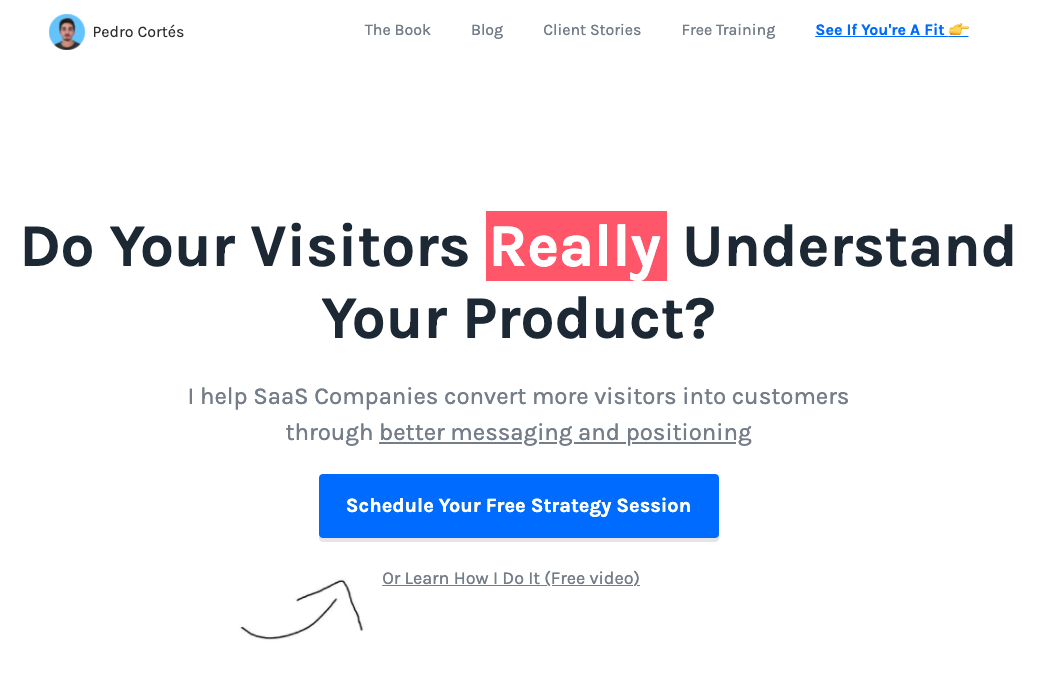
10. Subscribe to our newsletter
Let’s start with the classic “Subscribe to our newsletter”.
Although many companies have email sign-up boxes that use this CTA, these companies often offer zero motivation to make their audience actually subscribe. Really Good Emails gives their visitors compelling reasons why they should subscribe to their email list.
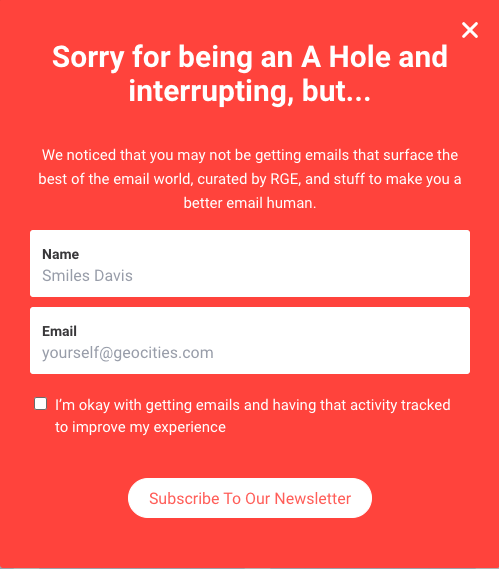
11. Start saving
Black Friday deals come and go every year, and almost everyone with an email gets bombarded by deals from different companies.
To help their customers make the most of these deals, Bluehost uses a simple “Start saving” CTA. This call to action works because it offers a clear benefit. Thanks to the button’s deep blue color on a lighter background, it’s also hard to miss.
12. Go pro yearly and save 45%
Many customers would rather pay $10 monthly instead of $100 per year, even though the yearly subscription cost less in the long run.
In this email CTA example, Bannersnack not only highlights that customers would be saving 45% if they move to a yearly subscription. But they also mention other benefits like “No more missed payment” and “no more worries”.
13. Start streaming
HBOmax is a video streaming platform . And it’s only right that they use a “Start streaming” CTA in their emails.
While the CTA is not super creative, they did make it stand out by using different colors for the CTA button and the background.
14. Get more time
ClickUp is a time and project management tool for big and small businesses.
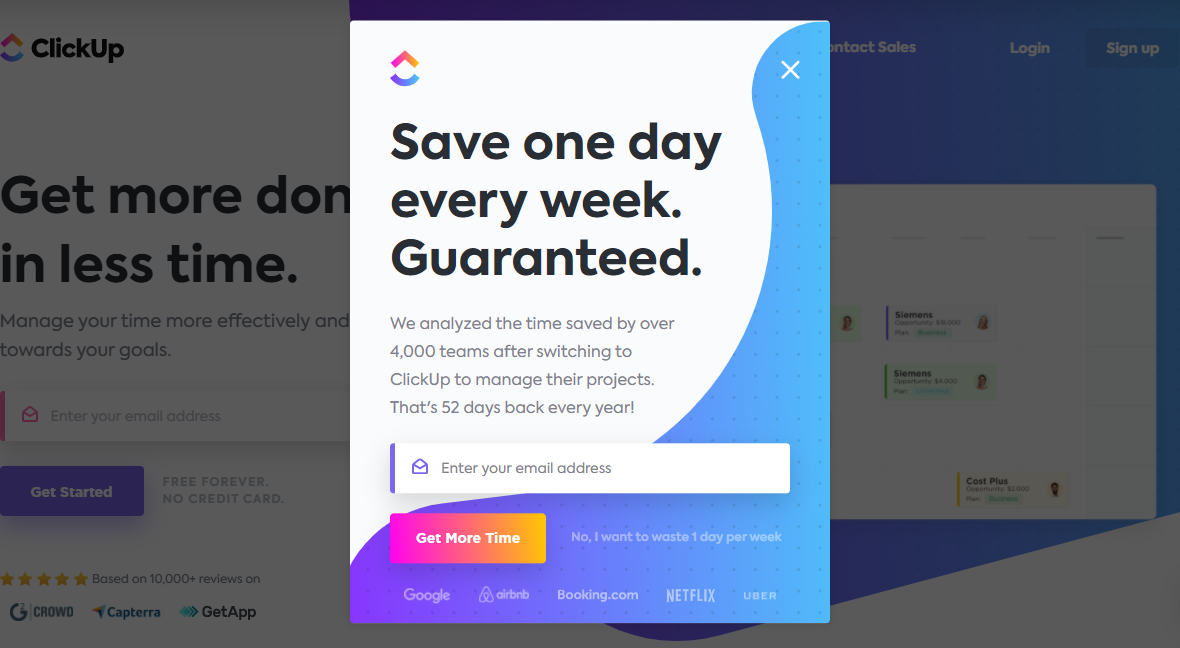
Their email pop-up box decided to ditch the traditional “join our newsletter” and use “Get more time” instead.
Why does this work? Anyone interested in gaining back more time would be interested in the “Get more time” CTA. Besides bringing their value upfront, ClickUp also uses social proof (by displaying company logos) and a cheeky “No, I want to waste one day per week” line beside their call to action.
15. Start creating
In this email, Vimeo announces its new features that allow users to create and showcase videos online.
Instead of focusing on themselves, Vimeo used a CTA that focuses on the reason why people use Vimeo in the first place: to create.
It’s time to get to work, now that you’ve seen CTA examples that can inspire you to create a call to action that converts more of your audience into leads and customers.
Before you write, keep in mind to know your audience well and the specific action you want them to take. Your CTAs should be above the fold, start with powerful words, create a sense of urgency, have some form of social proof, and tell people why they need to take action.

Use marketing software to help elevate your call to action game, acquire more leads, and close more sales.

Nathan is a B2B SaaS content writer . When he’s not helping software brands build more authority, generate better traffic, or convert more leads, you’ll find him binging on Marvel’s latest movies.

Contributor Network
Facebook retargeting isn't exactly new to the paid social advertising world.

Imagine a world where everyone who landed on your website bought your product.

Even if you create the best products in the world, your e-commerce store will fail if you...

Never miss a post.
Subscribe to keep your fingers on the tech pulse.
By submitting this form, you are agreeing to receive marketing communications from G2.

Want more articles like this?
Subscribe to G2 Tea and get the latest marketing news and trends delivered straight to your inbox.

Essay Conclusion
Essay conclusion generator.

Captivating your readers until the very end is a crucial goal in essay writing. The conclusion holds the power to leave a lasting impression, reinforcing your arguments and providing a sense of closure. In this article, we will delve into the art of crafting essay conclusions that resonate with your audience. Whether you’re a student seeking guidance or a seasoned writer in search of inspiration, this comprehensive guide will equip you with the tools to master the art of concluding your essays effectively.
1. Argumentative Essay Conclusion
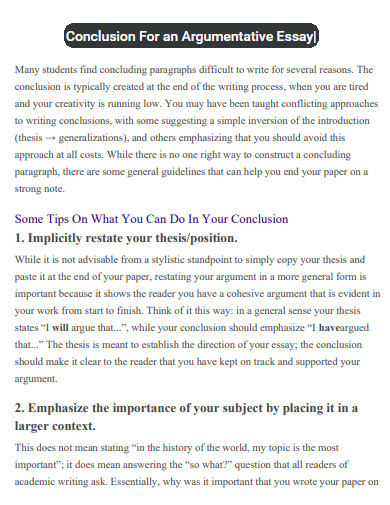
Size: 110 KB
2. University Essay Conclusion
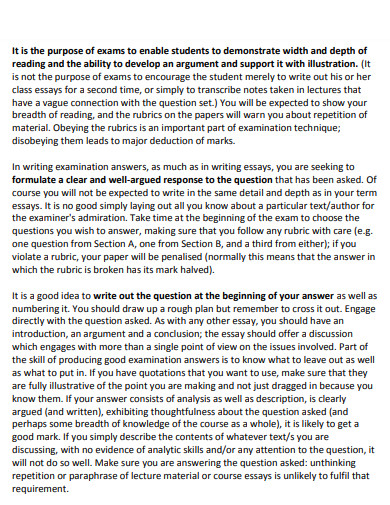
Size: 857 KB
3. Essay Conclusion Structure
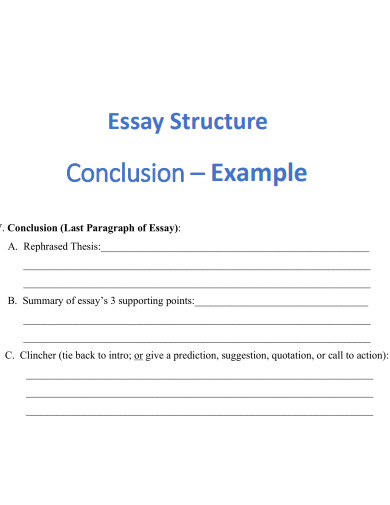
Size: 529 KB
4. English Essay Conclusion
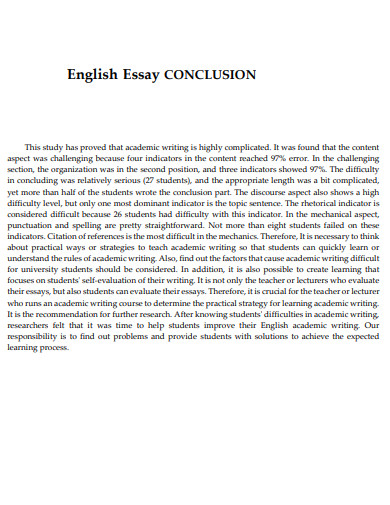
Size: 507 KB
5. Essay Paragraph Conclusion
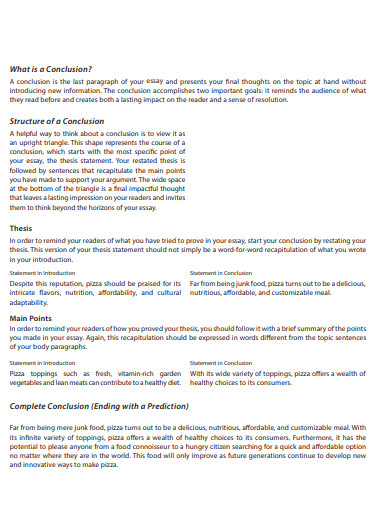
Size: 66 KB
6. Essay on Mental Health Conclusion
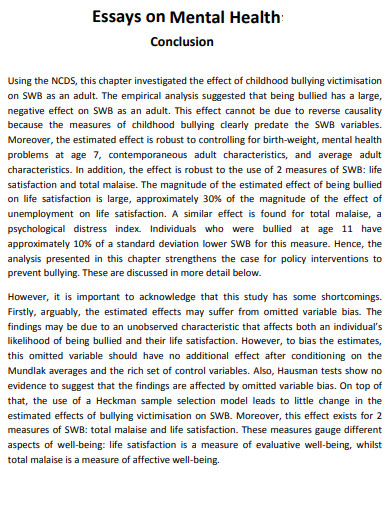
7. Essay on Research Conclusion
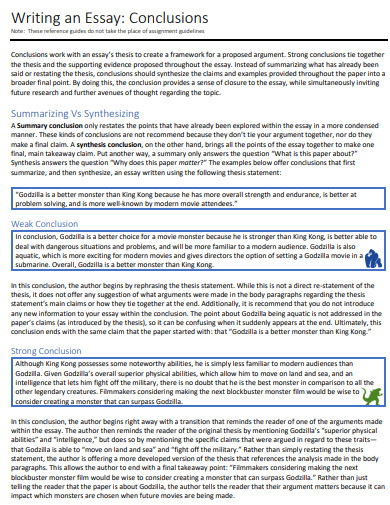
Size: 668 KB
8. Social Media Essay Conclusion
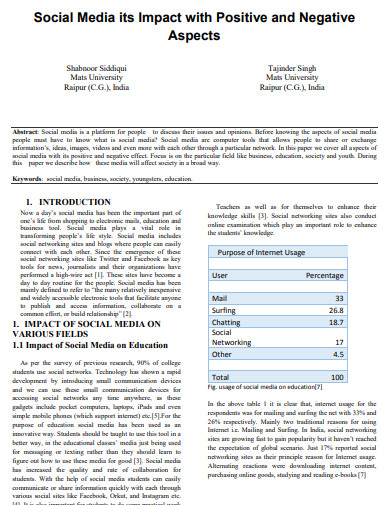
Size: 220 KB
9. Education Essay Conclusion
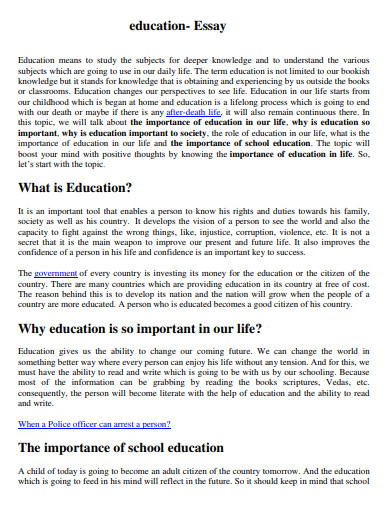
Size: 42 KB
10. Essay Conclusion Sentence
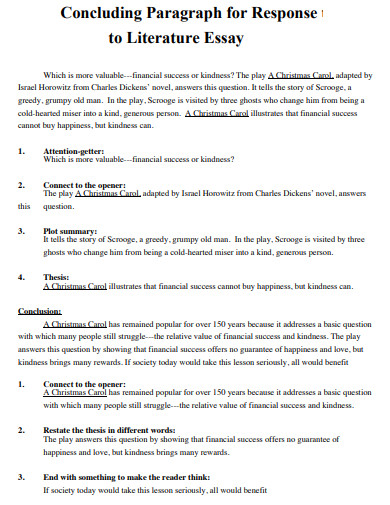
Size: 58 KB
11. Call to Action Essay Conclusion
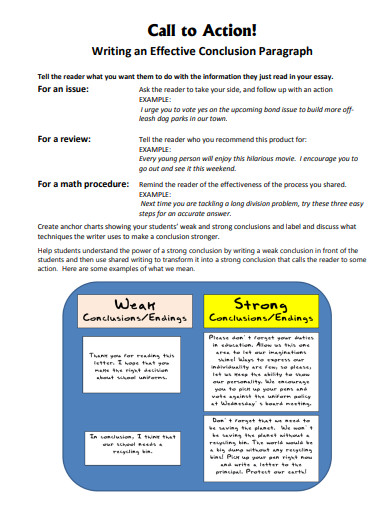
Size: 257 KB
12. Family Essay Conclusion
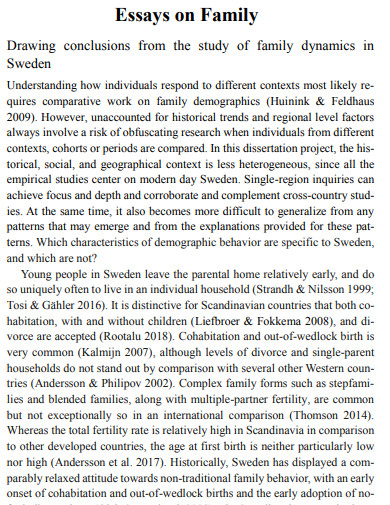
Size: 728 KB
13. Thesis Essay Conclusion
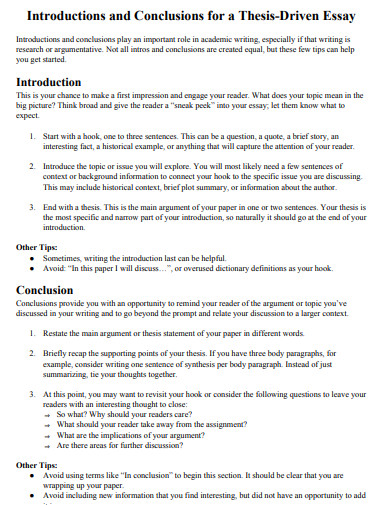
Size: 158 KB
14. Romeo and Juliet Essay Conclusion
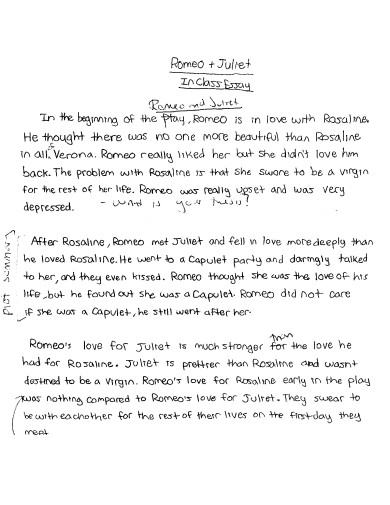
Size: 103 KB
15. Air Pollution Essay Conclusion
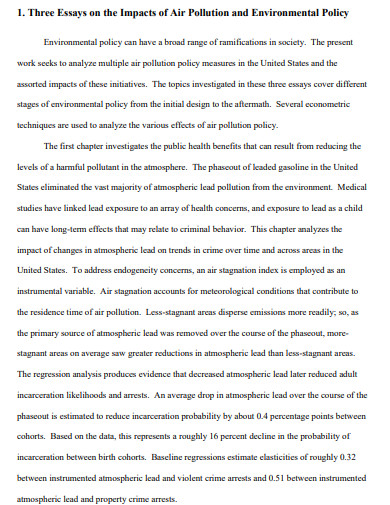
16. Essay Conclusion Template
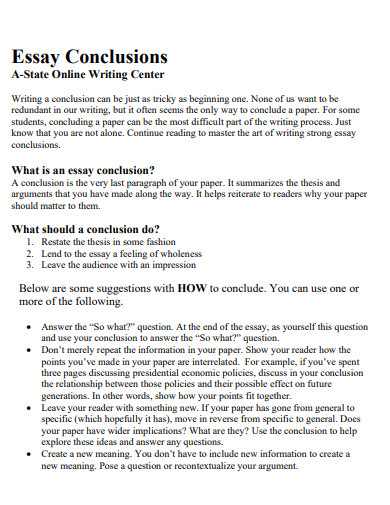
Size: 148 KB
17. Essay Conclusion Example
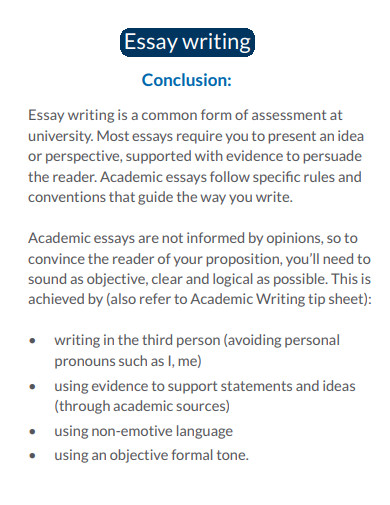
Size: 120 KB
18. Academic Essay Conclusion
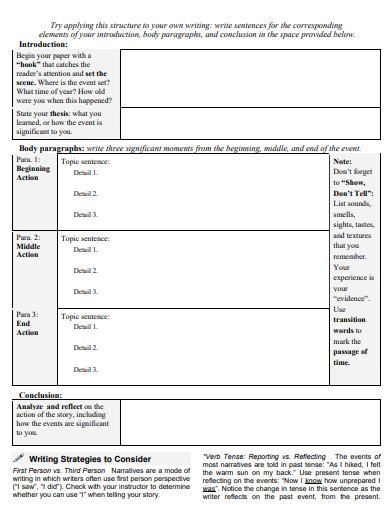
Size: 72 KB
19. Informative Essay Conclusion
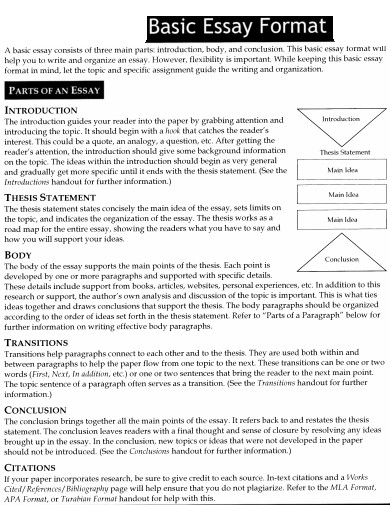
Size: 151 KB
20. Music Essay Conclusion
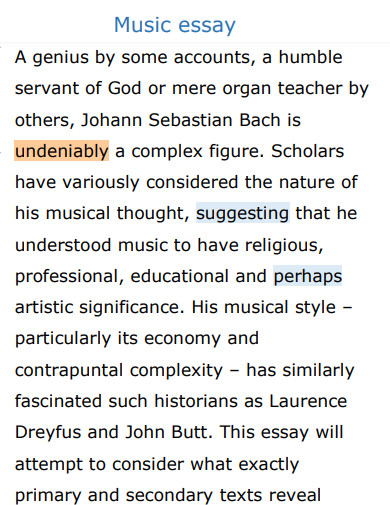
Size: 566 KB
21. 4th Grade Essay Conclusion
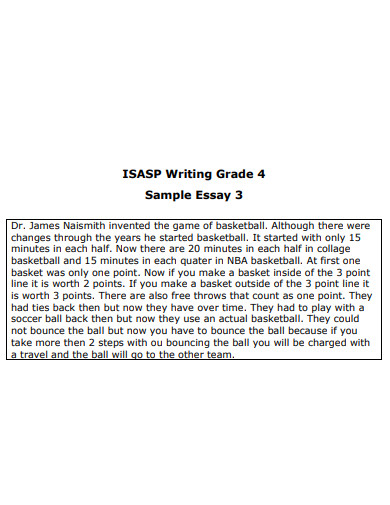
Size: 584 KB
22. 6th Grade Essay Conclusion
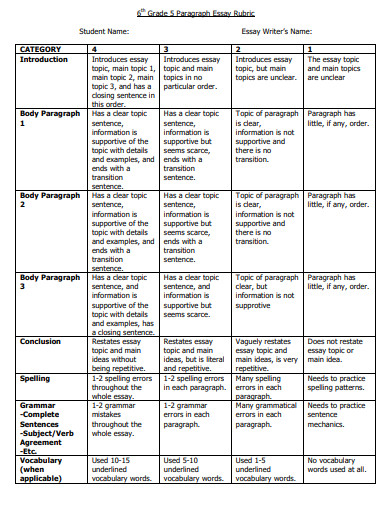
Size: 22 KB
23. Essay on Technology Conclusion
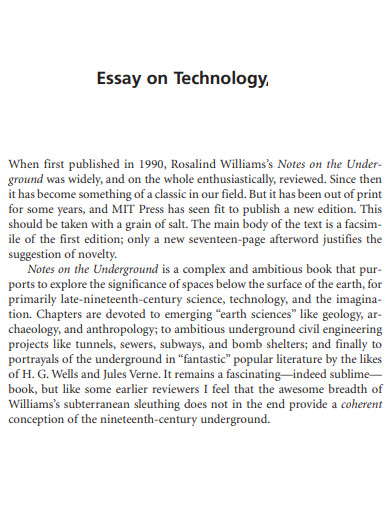
Size: 46 KB
24. Communication Essay Conclusion

Size: 494 KB
25. Deforestation Essay Conclusion
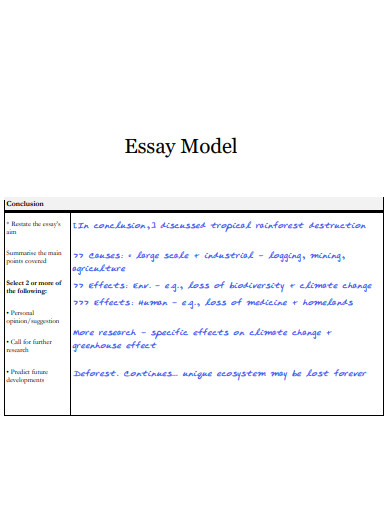
Size: 188 KB
26. Business Essay Conclusion
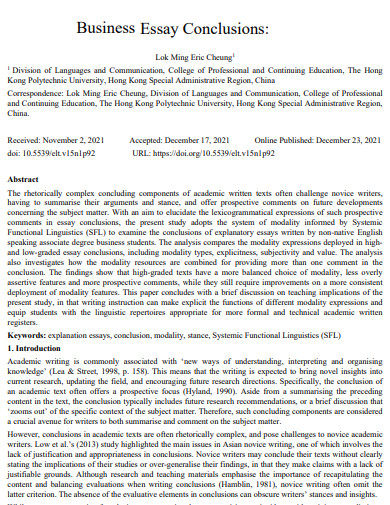
Size: 283 KB
27. Planning Guide Essay Conclusion

Size: 182 KB
28. Basic Essay Conclusion
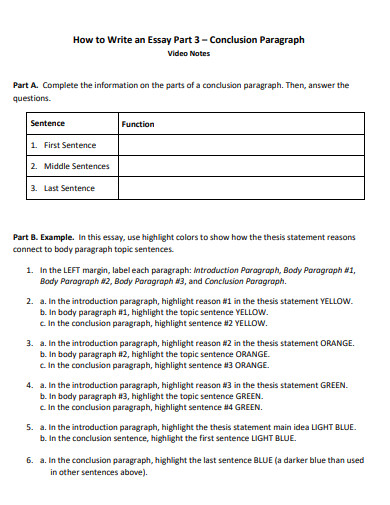
Size: 123 KB
29. Leadership Essay Conclusion
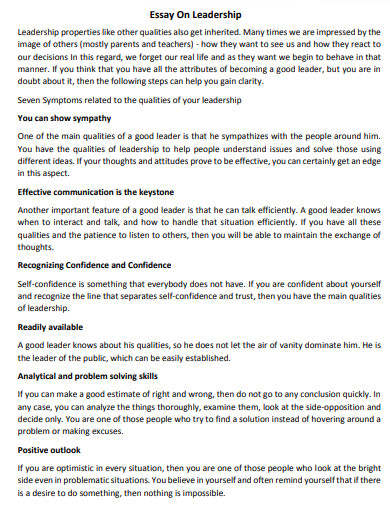
Size: 194 KB
30. Standard Essay Conclusion
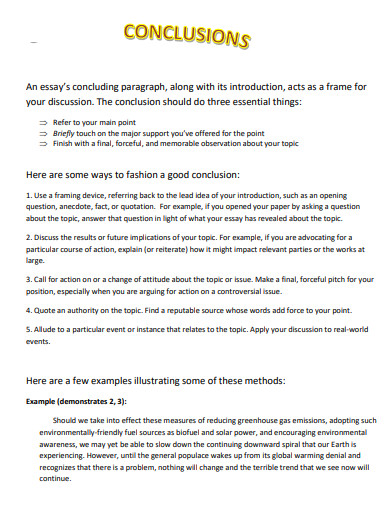
Size: 276 KB
What is an Essay Conclusion?
An essay conclusion serves as the final segment of your written composition. It brings together all the ideas, arguments, and evidence presented throughout the essay and synthesizes them into a concise and coherent final statement. Think of it as the grand finale that encapsulates your main points and leaves a lasting impression on your readers.
How to Write an Essay Conclusion
To create a compelling essay conclusion, follow these step-by-step guidelines
Step 1: Restate your thesis:
Begin by restating your thesis statement, reminding readers of the central argument you have been supporting throughout your essay. However, avoid repeating it verbatim. Instead, rephrase it to maintain reader engagement.
Step 2: Summarize your main points:
Provide a succinct summary of the key points and arguments discussed in the body paragraphs. Focus on the most significant aspects while maintaining a logical flow. Avoid introducing new information or ideas at this stage.
Step 3: Emphasize the significance:
Highlight the broader implications of your essay’s topic and the relevance of your arguments in a wider context. Convey the importance of your findings and their potential impact on the subject matter or the reader’s perspective.
Step 4: Evoke emotions:
Create an emotional connection with your readers by emphasizing the significance of your topic or appealing to their values and beliefs. Stirring emotions can leave a lasting impact and make your conclusion more memorable.
Step 5: Offer a call to action or recommendation:
Depending on the nature of your essay, conclude with a call to action or a thoughtful recommendation that encourages readers to consider further action or reflection on the topic. This can inspire them to continue exploring or take specific steps related to the subject matter.
What is the ideal length for an essay conclusion?
The length of an essay conclusion varies depending on the overall length of your essay. As a general guideline, aim for a conclusion that is concise yet comprehensive, spanning approximately 10-15% of your total essay length.
Can I introduce new information in my essay conclusion?
Avoid introducing new information or arguments in your conclusion. Instead, focus on summarizing and reinforcing the ideas already presented, providing a sense of closure to your essay.
How can I make my essay conclusion more impactful?
To make your essay conclusion more impactful, strive for clarity, emotional resonance, and a sense of closure. Utilize strong language, vivid imagery, and rhetorical devices to leave a lasting impression on your readers.
Just as every book needs a captivating ending to satisfy its readers, your essay deserves a conclusion that lingers in the minds of your audience. By employing the strategies discussed here, you can transform your essay conclusions into thought-provoking reflections, leaving your readers with a sense of fulfillment and a desire to explore your ideas further.
If you’re hungry for more examples and guidance, here are some related articles to inspire you:
- Dive into the world of narratives with 26+ Narrative Essay Examples in PDF .
- Explore the diverse realm of collage essays with 20+ College Essay Examples .
- Enhance your analytical skills with 4+ Interview Analysis Essay Examples in PDF .
- Master concise reporting with 11+ Short Report Essay Examples .
- Uncover the secrets of academic writing with 4+ Short Academic Essay Examples .
- Understand the essay text structure to elevate your writing.
- Delve into self-reflection with 7+ Self Evaluation Essay Examples in PDF .
- Craft persuasive arguments with an Argument Essay .
- For a comprehensive understanding of essay writing, refer to 21+ Essay Writing Examples in PD F.
Remember, the conclusion is your final chance to leave a lasting impact on your readers. Mastering the art of essay conclusions will undoubtedly elevate your writing and captivate your audience. So, go forth and craft memorable endings that resonate with the hearts and minds of your readers.
Text prompt
- Instructive
- Professional
Write an essay conclusion on the future of space exploration.
Develop an essay conclusion on the long-term effects of the internet on human cognition.
Home — Essay Samples — Nursing & Health — Teenage Suicide — Persuasive Speech on Teenage Suicide
Persuasive Speech on Teenage Suicide
- Categories: Teenage Suicide
About this sample

Words: 628 |
Published: Mar 20, 2024
Words: 628 | Page: 1 | 4 min read

Cite this Essay
Let us write you an essay from scratch
- 450+ experts on 30 subjects ready to help
- Custom essay delivered in as few as 3 hours
Get high-quality help

Dr. Heisenberg
Verified writer
- Expert in: Nursing & Health

+ 120 experts online
By clicking “Check Writers’ Offers”, you agree to our terms of service and privacy policy . We’ll occasionally send you promo and account related email
No need to pay just yet!
Related Essays
3 pages / 1358 words
1 pages / 527 words
1 pages / 482 words
1 pages / 614 words
Remember! This is just a sample.
You can get your custom paper by one of our expert writers.
121 writers online
Still can’t find what you need?
Browse our vast selection of original essay samples, each expertly formatted and styled
Related Essays on Teenage Suicide
The relationship between social media and teenage suicide is a topic of significant concern and debate in today's digital age. This essay delves into the complex interplay between these two phenomena, examining the potential [...]
Bullying is a distressing phenomenon that affects individuals of all ages, genders, and backgrounds. The repercussions of bullying extend far beyond its immediate impact, with grave consequences that can include psychological [...]
Suicide among teenagers is a growing concern in today’s society. According to the Centers for Disease Control and Prevention, suicide is the second leading cause of death among individuals aged 10-24 years. The prevalence of [...]
The tenth leading cause of death in teens around the world is not drugs or alcohol, or even illness; it is suicide. The suicide rate is so high because there are many factors that cause teens to think about, attempt, and follow [...]
It was not long ago that the anxiety issues among adolescents were assumed to be of low impact and relatively rare. As a result of this, the present empirical knowledge about adolescent anxiety is limited and less extensive in [...]
Public schools across the Unites States do not know the challenges students face on a daily basis. Most of the conflict between teenagers and their peers are left oblivious. Every day one point two million students at public [...]
Related Topics
By clicking “Send”, you agree to our Terms of service and Privacy statement . We will occasionally send you account related emails.
Where do you want us to send this sample?
By clicking “Continue”, you agree to our terms of service and privacy policy.
Be careful. This essay is not unique
This essay was donated by a student and is likely to have been used and submitted before
Download this Sample
Free samples may contain mistakes and not unique parts
Sorry, we could not paraphrase this essay. Our professional writers can rewrite it and get you a unique paper.
Please check your inbox.
We can write you a custom essay that will follow your exact instructions and meet the deadlines. Let's fix your grades together!
Get Your Personalized Essay in 3 Hours or Less!
We use cookies to personalyze your web-site experience. By continuing we’ll assume you board with our cookie policy .
- Instructions Followed To The Letter
- Deadlines Met At Every Stage
- Unique And Plagiarism Free

IMAGES
VIDEO
COMMENTS
Topic sentence: Introduce the main idea. Evidence: Support your argument with facts, statistics, or quotes. Counterarguments: Address opposing views. Rebuttal: Refute the counterarguments. Conclusion. Restate your thesis. Summarize key points. Call to action: Encourage the reader to take action or think differently.
Ultimately, A/B testing and experimentationwill help you uncover your purpose's perfect call to action. Use these examples as a jumping-off point, and tweak and test as appropriate. 1. Pipedrive removes barriers to conversion. One of the biggest factors preventing readers from converting is the unknown.
A well constructed and delivered presentation changes minds and ignites action. Yet, there's a key part of a presentation that doesn't get mentioned enough — the call to action or CTA — and, a clear CTA creates a critical turning point in your presentation (or any other form of persuasive communications too).. The call to action which comes right before the end of a persuasive speech ...
Call to action. Works Cited. Components of an argumentative essay Argumentative essay introduction. The introduction sets the tone for the entire paper and introduces the argument. In general, the first paragraph(s) should attract the reader's attention, provide relevant context, and conclude with a thesis statement.
But more than that, a call to action—like any good sales closer—acts as a climax to the pitch. It serves the same function as a joke's punchline, and without a CTA, the visitor is left in a sort of directionless limbo. A good CTA not only signals that the pitch is over; it also recommends the next course of action.
An argumentative essay presents a specific claim or argument and supports it with evidence and reasoning. Here's an outline for an argumentative essay, along with examples for each section: 3. 1. Introduction: Hook: Start with a compelling statement, question, or anecdote to grab the reader's attention.
An argumentative essay comprises five essential components: 1. Claim. Claim in argumentative writing is the central argument or viewpoint that the writer aims to establish and defend throughout the essay. A claim must assert your position on an issue and must be arguable. It can guide the entire argument.
Make a claim. Provide the grounds (evidence) for the claim. Explain the warrant (how the grounds support the claim) Discuss possible rebuttals to the claim, identifying the limits of the argument and showing that you have considered alternative perspectives. The Toulmin model is a common approach in academic essays.
An argumentative essay attempts to convince a reader to agree with a particular argument (the writer's thesis statement). The writer takes a firm stand one way or another on a topic and then uses hard evidence to support that stance. An argumentative essay seeks to prove to the reader that one argument —the writer's argument— is the ...
Customize your call-to-action for each person. 1. Make your call-to-action clear and direct. Don't hint. Don't imply. Don't suggest. It's not a whisper-to-think-about- action; it's a call-to -action. Use direct language, and eliminate wishy-washy phrases. Instead of "Maybe you could think about joining…", say "Join…".
Argumentative Essay Example 2. Malaria is an infectious disease caused by parasites that are transmitted to people through female Anopheles mosquitoes. Each year, over half a billion people will become infected with malaria, with roughly 80% of them living in Sub-Saharan Africa.
7. Avocado Green Mattress. Avocado Green Mattress has upcycled bedroom furniture people can buy to complement their organic mattresses. The call to action is "Shop Zero Waste" is a clear call to the type of buyer who is willing to pay a premium to minimize their impact on the environment.
Argumentative essay formula & example. In the image below, you can see a recommended structure for argumentative essays. It starts with the topic sentence, which establishes the main idea of the essay. Next, this hypothesis is developed in the development stage. Then, the rebuttal, or the refutal of the main counter argument or arguments.
Secondly, it lets the writer figure out what evidence suits what argument most. Before writing, draft your essay first. Put examples, facts, etc. in the right parts of the paper. Then, write the entire text. Thirdly, an outline provides a perfect opportunity to change the essay's parts without rewriting the paper.
You can add a tangible benefit like a discount or promotion. To show readers the value of clicking, start the CTA with words like "save" or "redeem" like "Save 15% by calling today!". Or you can combine a USP and CTA in a single statement to persuade potential customers to take action.
Tips for Writing a Well-Written Argumentative Essay. Introduce your topic in a bold, direct, and engaging manner to captivate your readers and encourage them to keep reading. Provide sufficient evidence to justify your argument and convince readers to adopt this point of view. Consider, include, and fairly present all sides of the topic.
Demonstrate exactly what your CTA will deliver and how. . 3. Create a sense of urgency. Include phrases like "limited time offer" and "for today only" to motivate users to act. Pair these with action-oriented words like "subscribe" and "download" to encourage a particular action. . 4. Consider your target audience.
The classical argument is made up of five components, which are most commonly composed in the following order: Exordium - The introduction, opening, or hook. Narratio - The context or background of the topic. Proposito and Partitio - The claim/stance and the argument. Confirmatio and/or Refutatio - positive proofs and negative proofs of ...
Lesson Learned: Write a blog post that connects into your product or service. Then end the post with an informal call to action to work with you to resolve the problems you just outlined in your post and link to content that introduces your offering. 5. Wistia Embeds Calls To Action In Videos.
Call to Action or Final Thought: End with a thought-provoking statement, question, or call to action that encourages further thinking or action on the topic. The Best Example of Argumentative Essay. Title: The Necessity of Environmental Conservation. Introduction The planet's environmental health is a concern that affects all of humanity ...
This call to action works because it offers a clear benefit. Thanks to the button's deep blue color on a lighter background, it's also hard to miss. 12. Go pro yearly and save 45%. Many customers would rather pay $10 monthly instead of $100 per year, even though the yearly subscription cost less in the long run.
Delve into self-reflection with 7+ Self Evaluation Essay Examples in PDF. Craft persuasive arguments with an Argument Essay. For a comprehensive understanding of essay writing, refer to 21+ Essay Writing Examples in PDF. Remember, the conclusion is your final chance to leave a lasting impact on your readers. Mastering the art of essay ...
The issue of teenage suicide has become a growing concern in our society. The tragic loss of young lives to suicide has prompted a call to action to address this pressing issue.